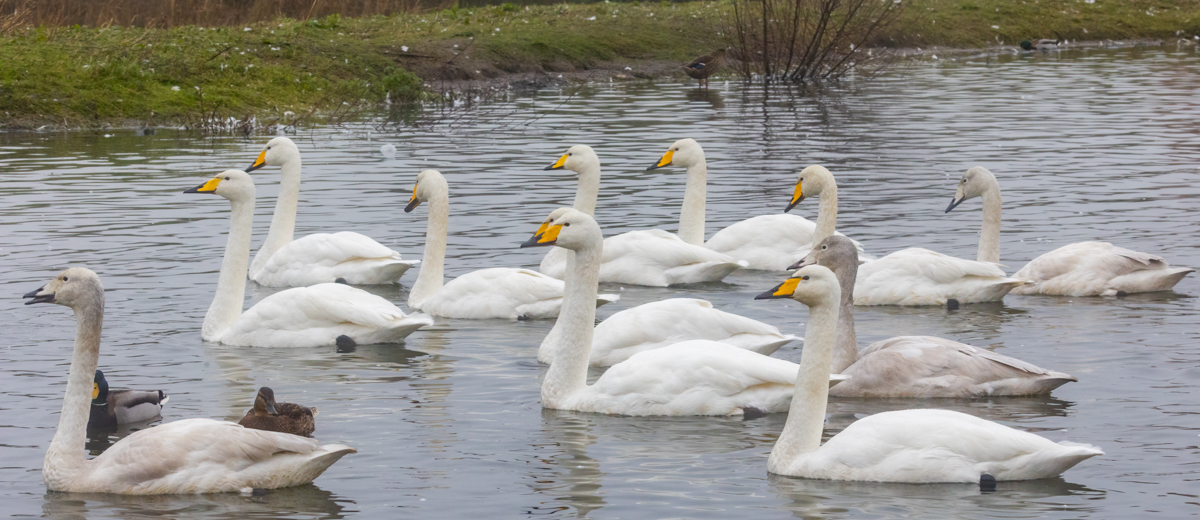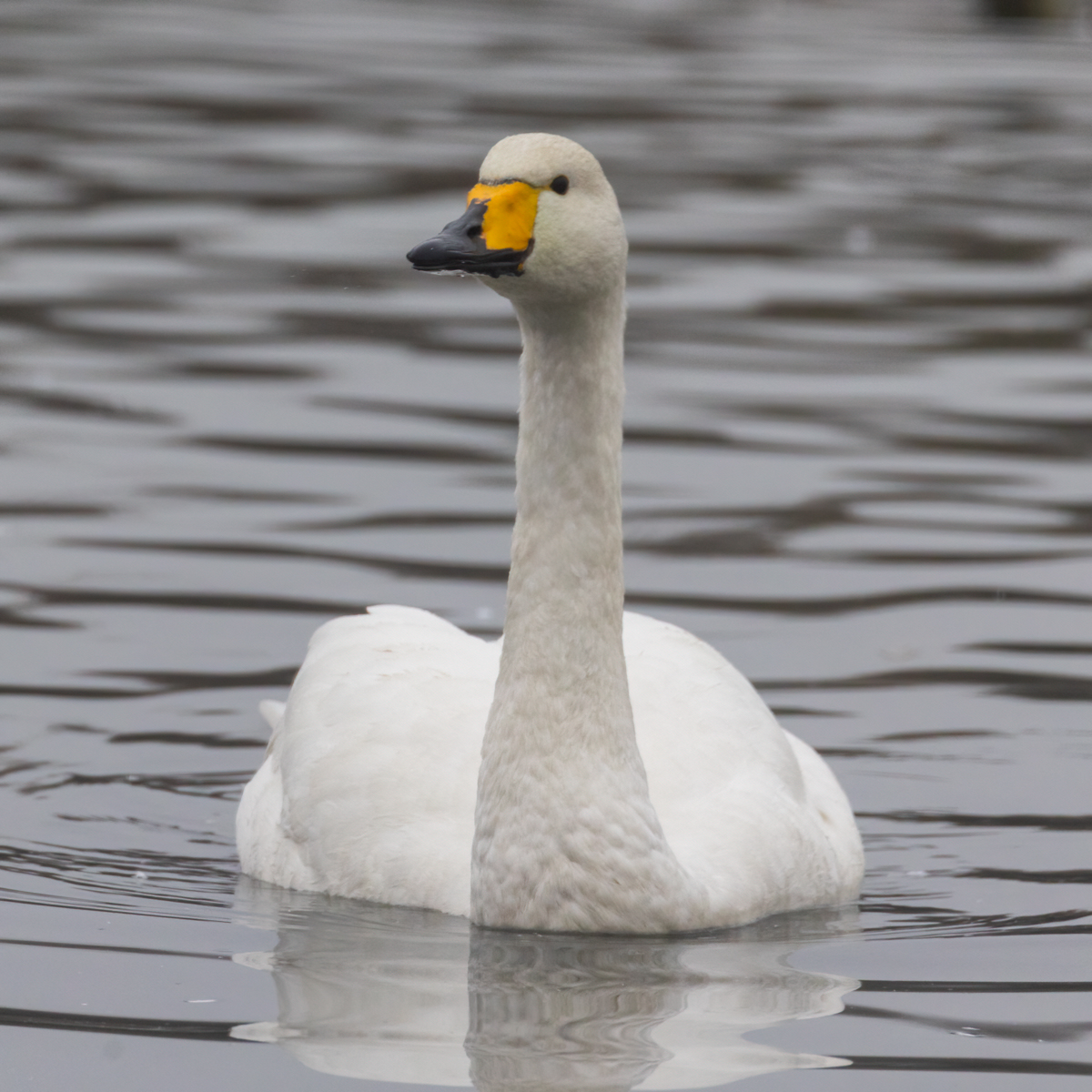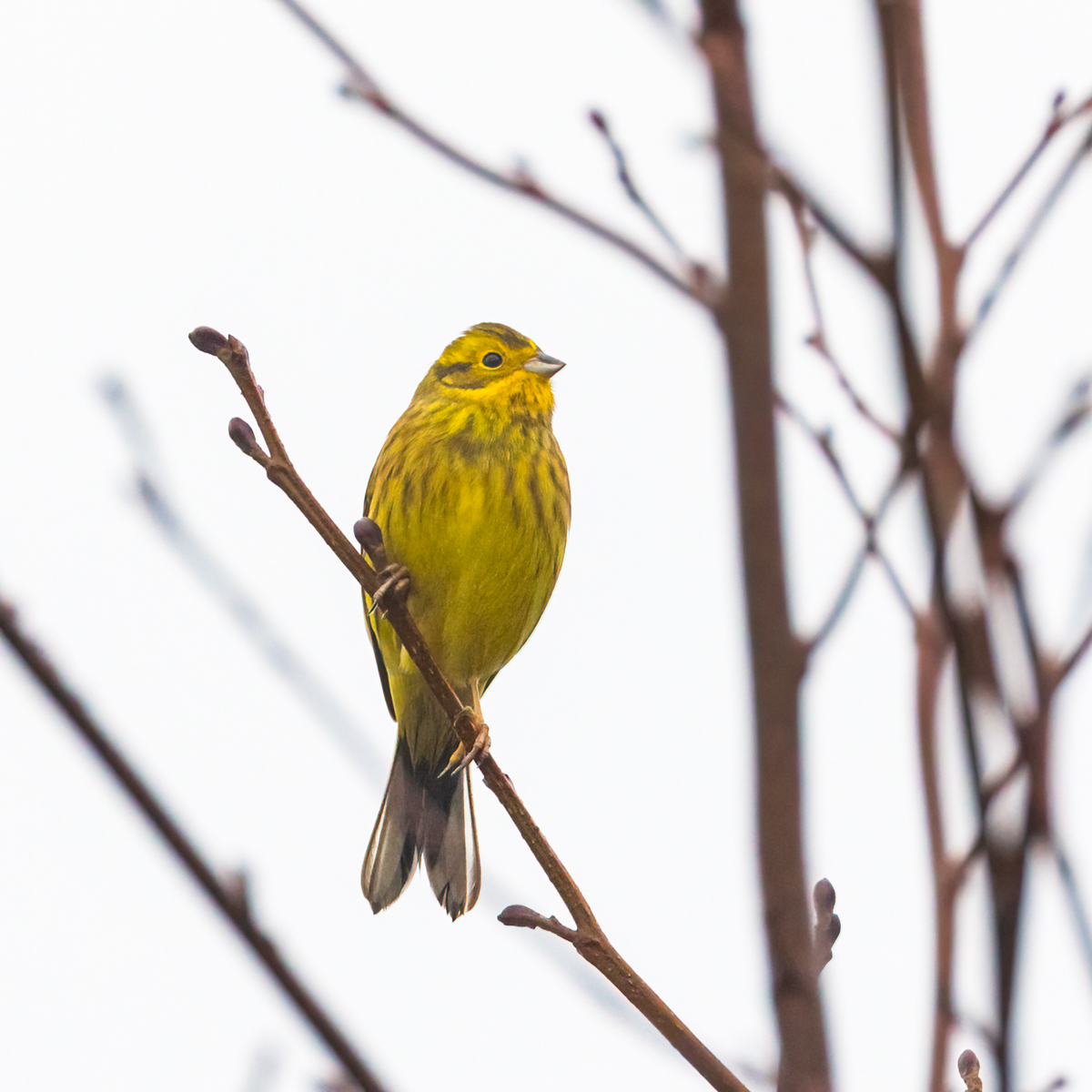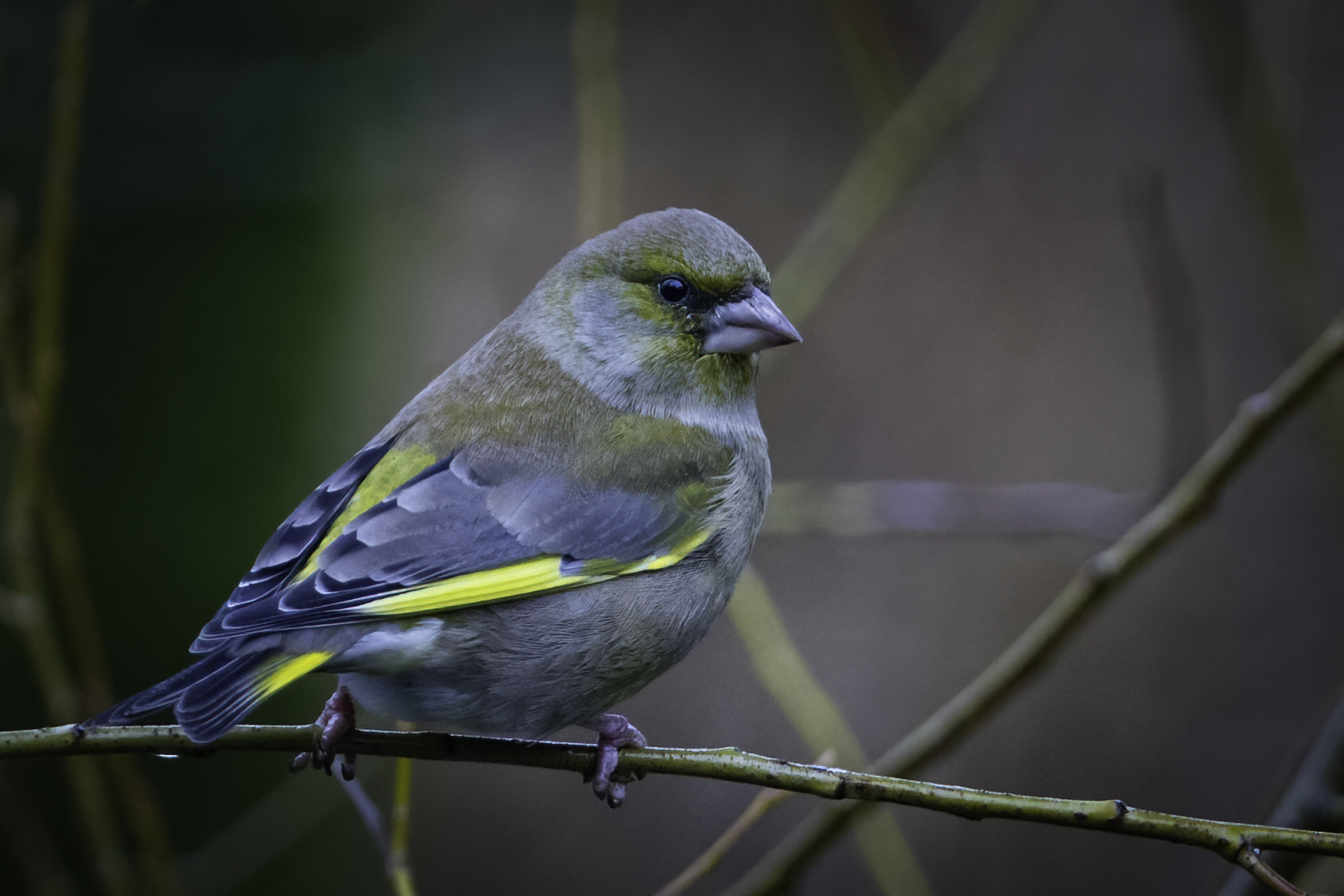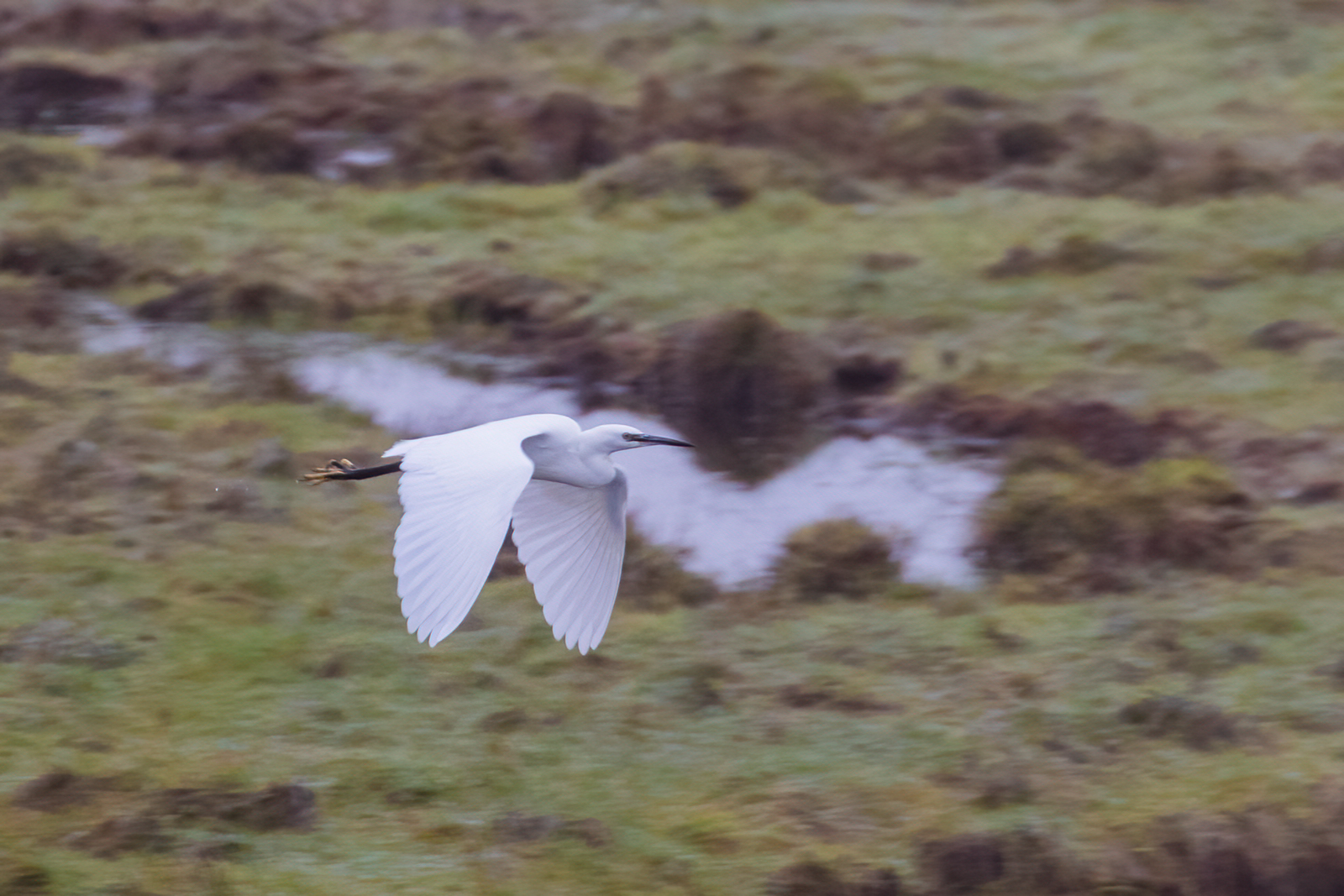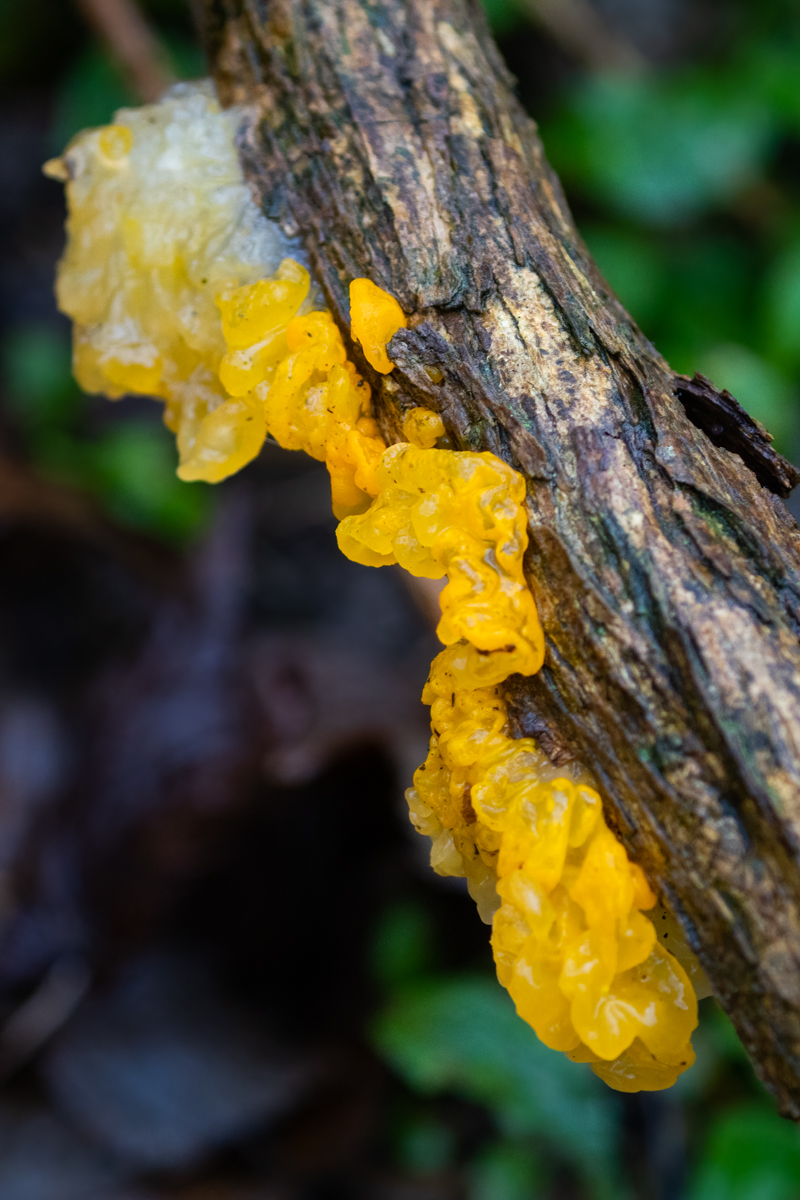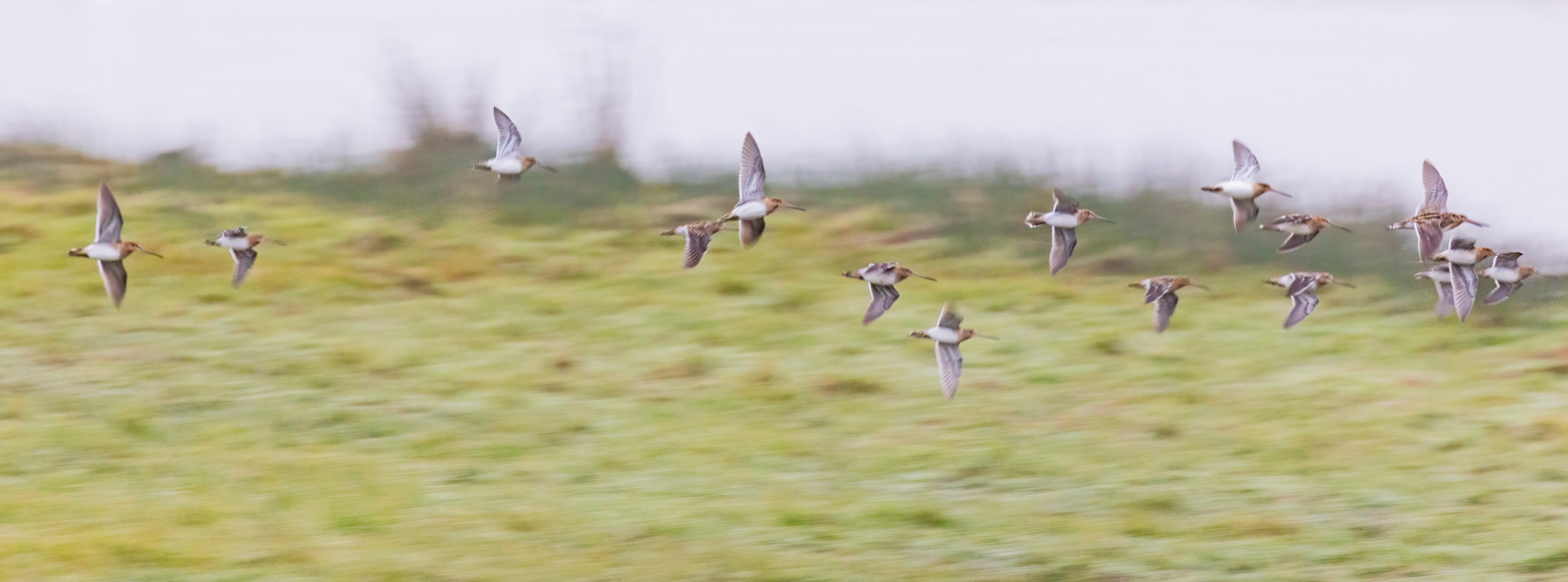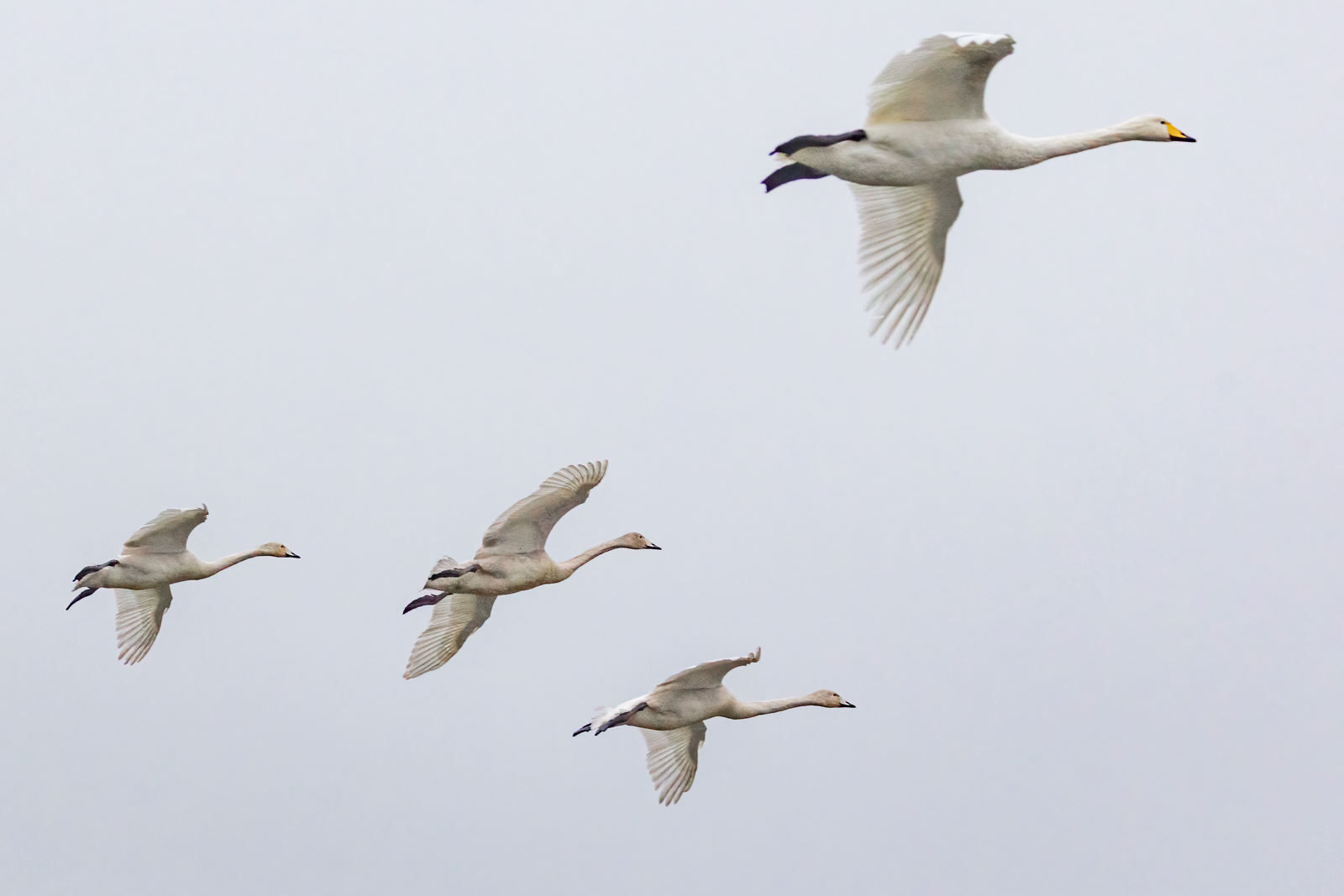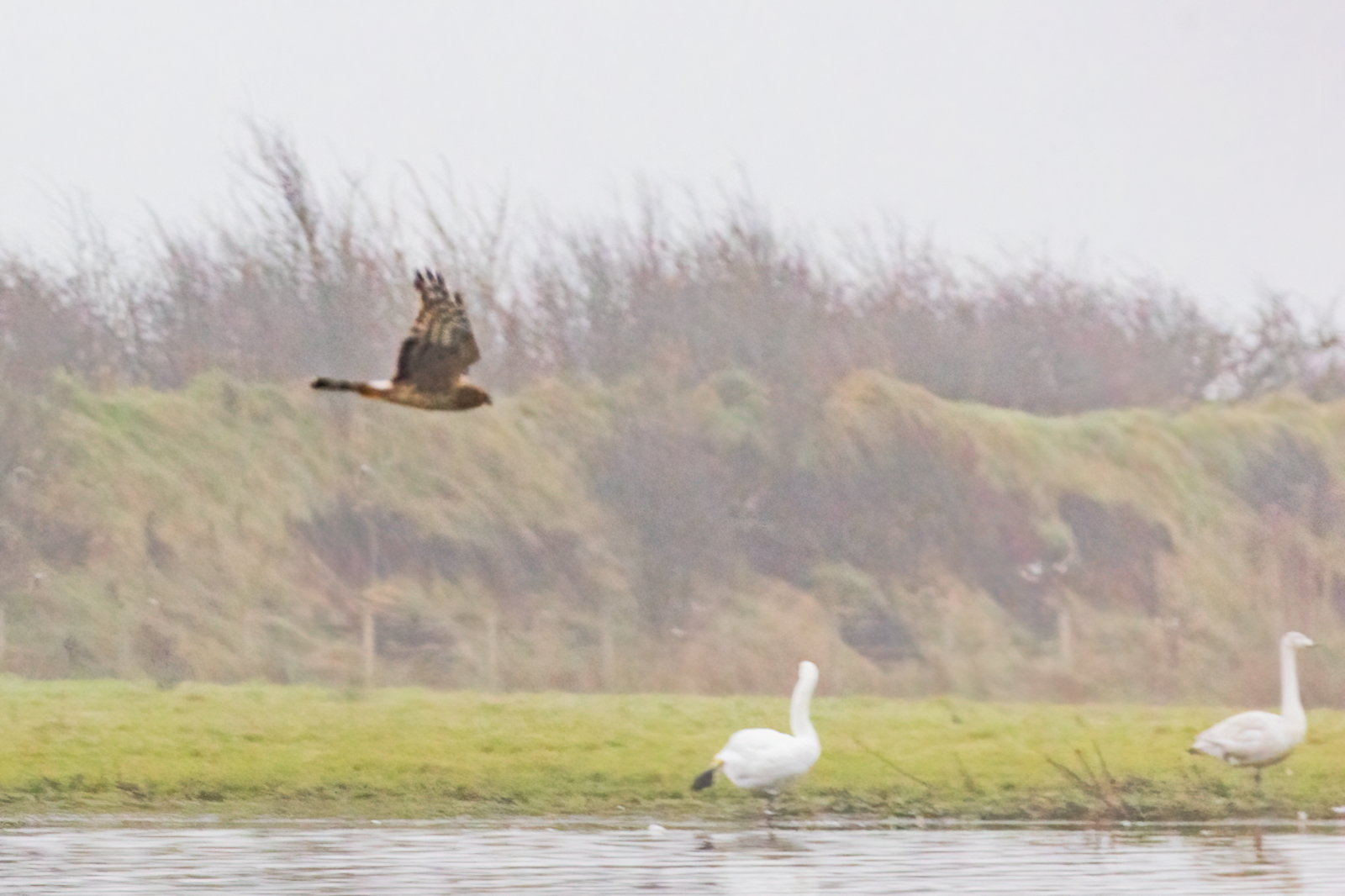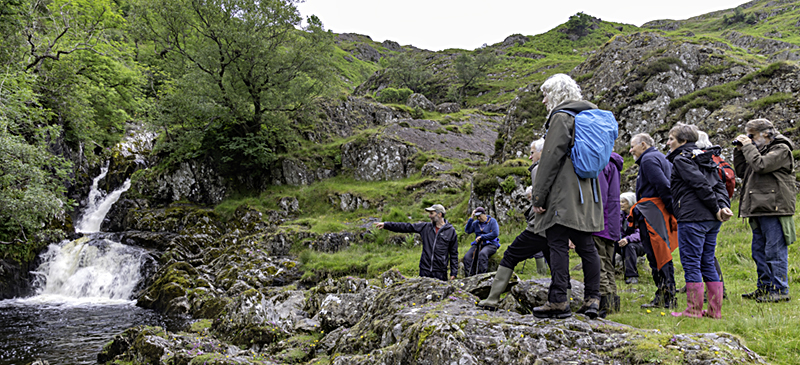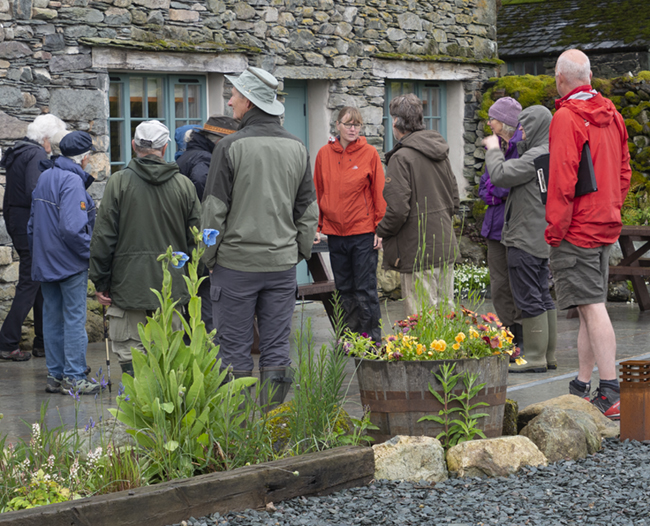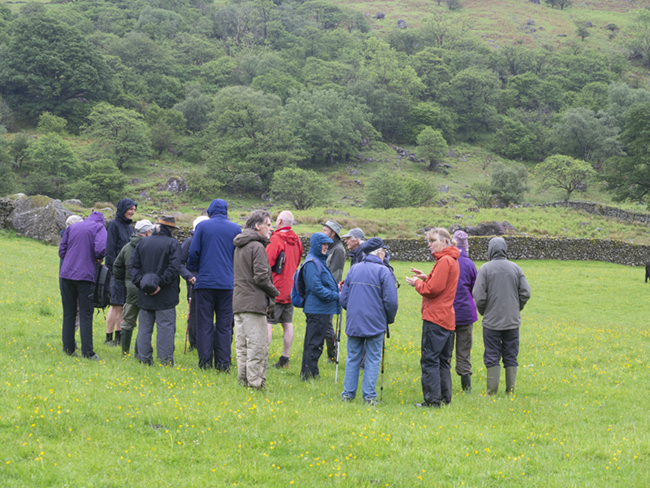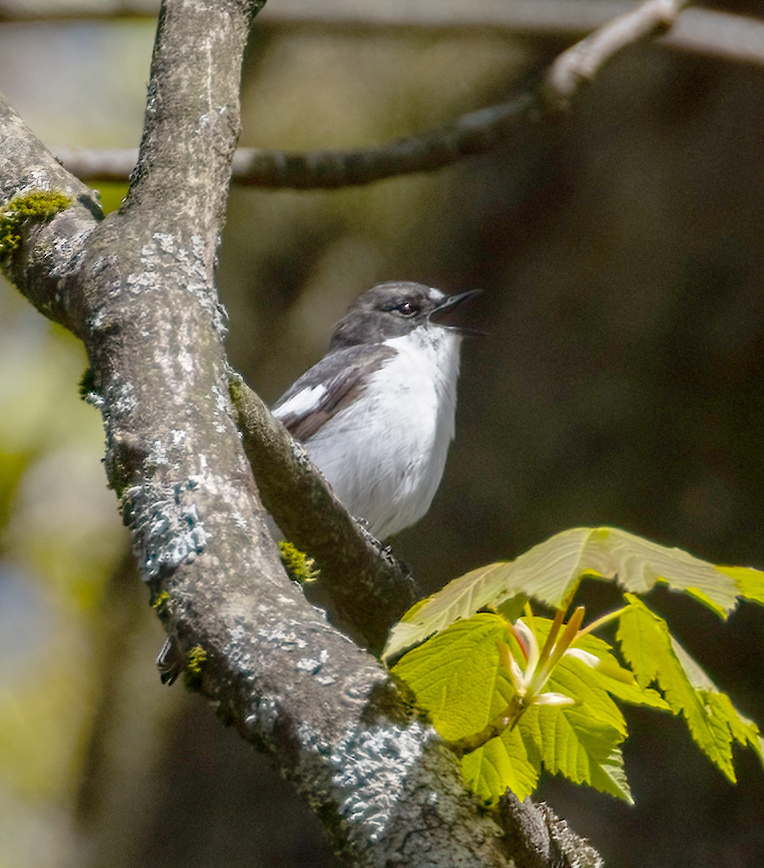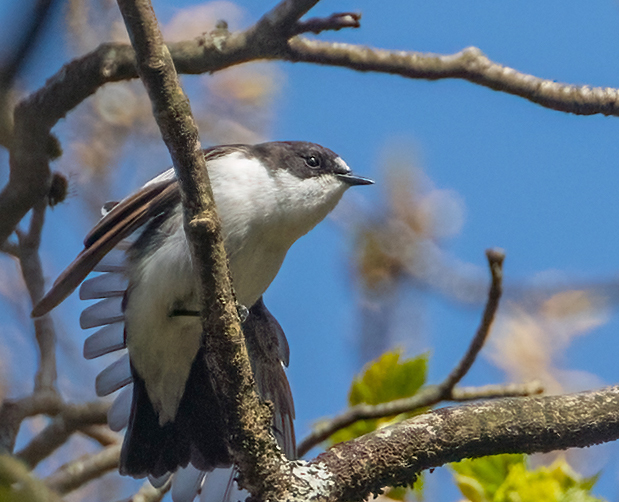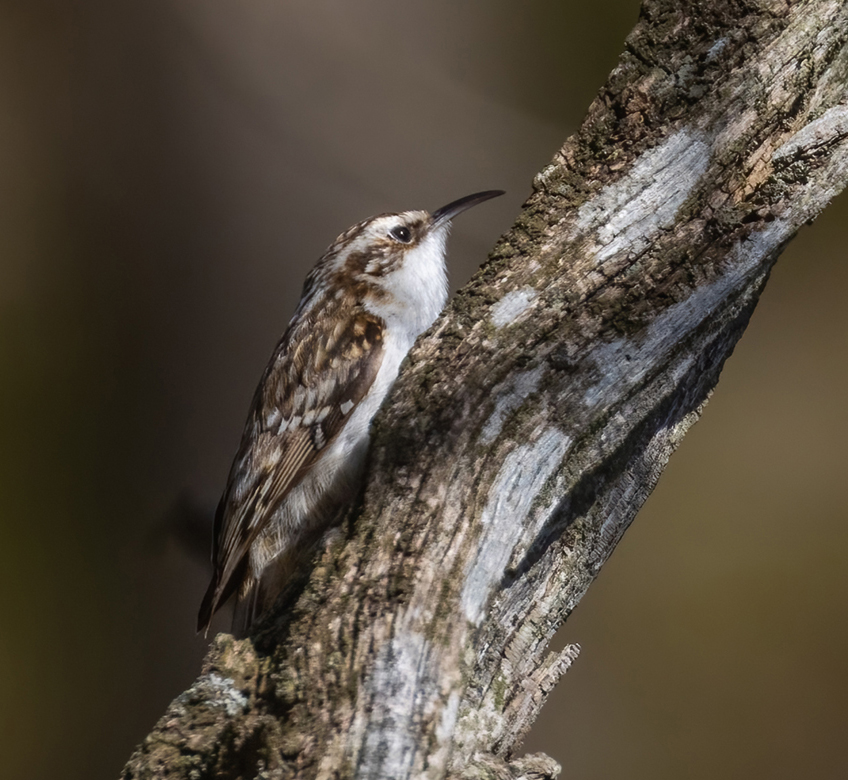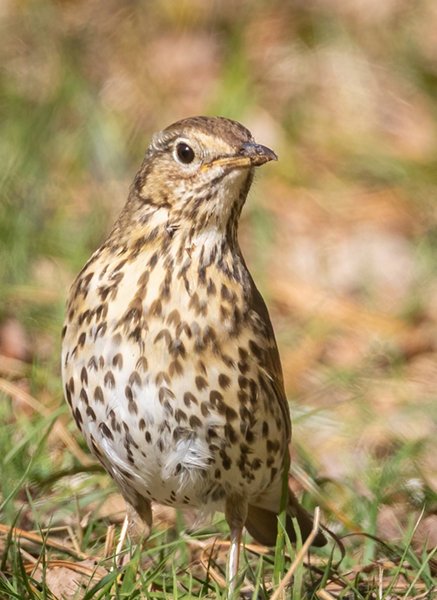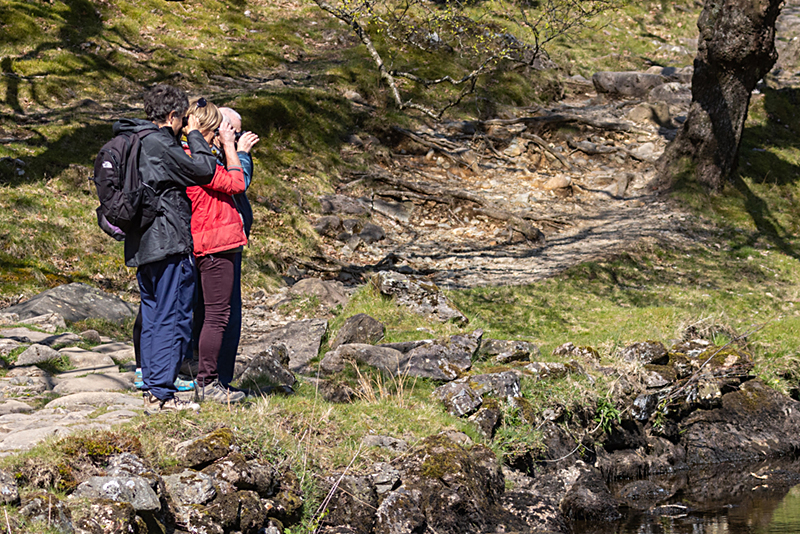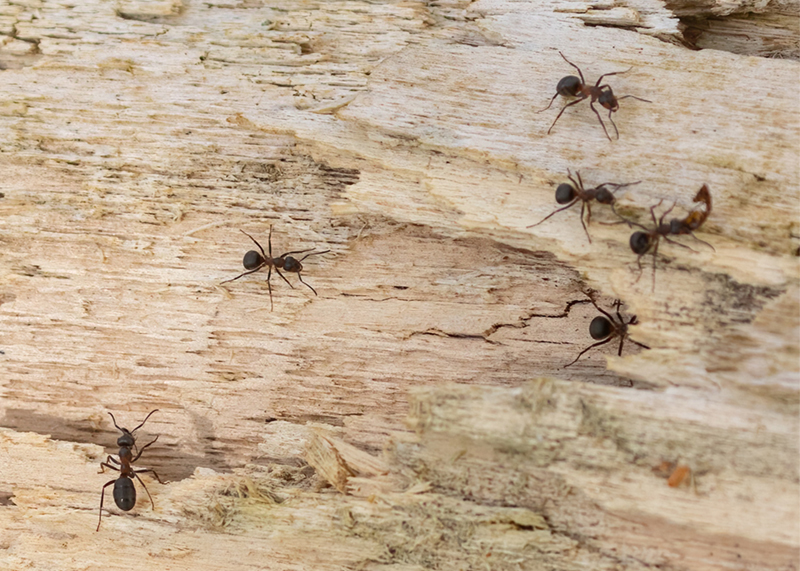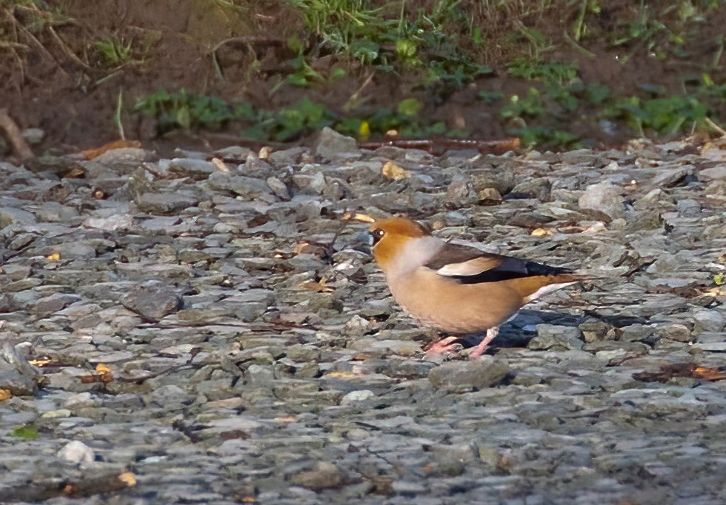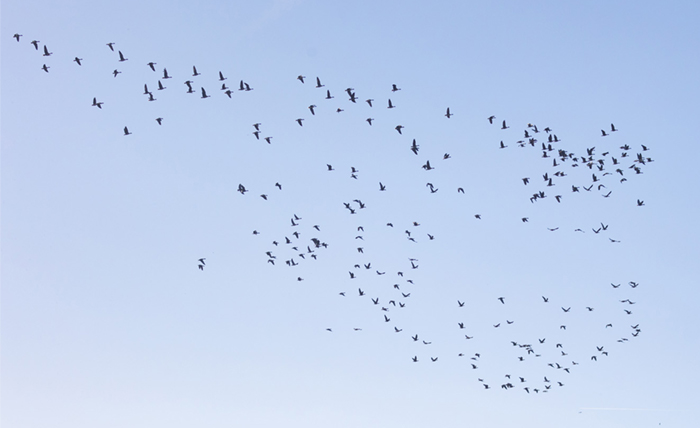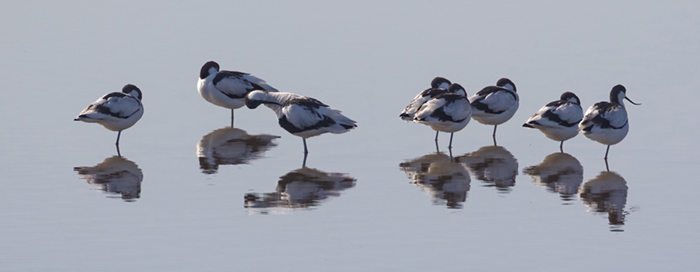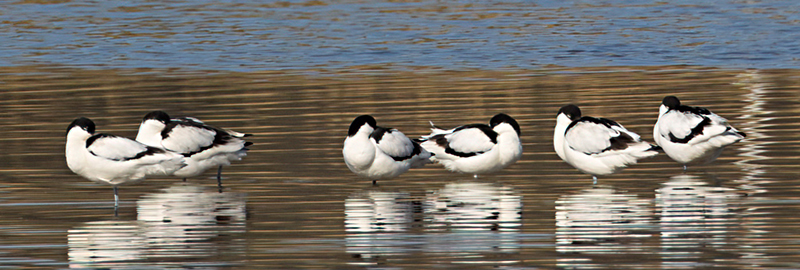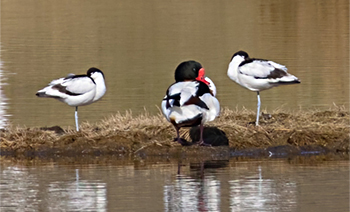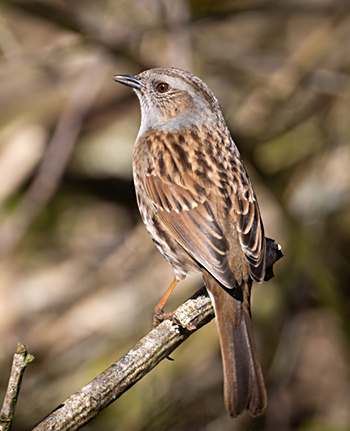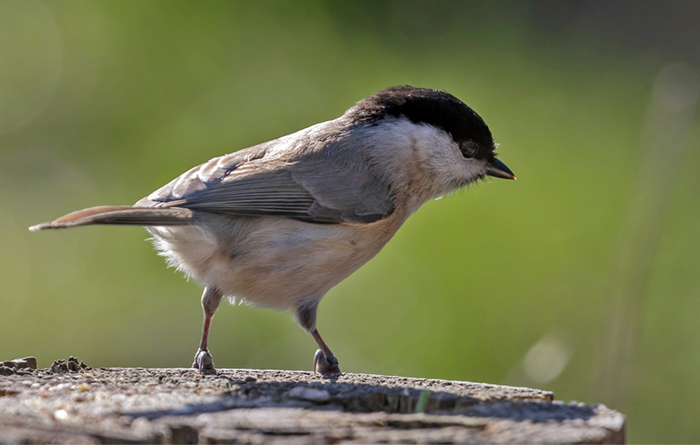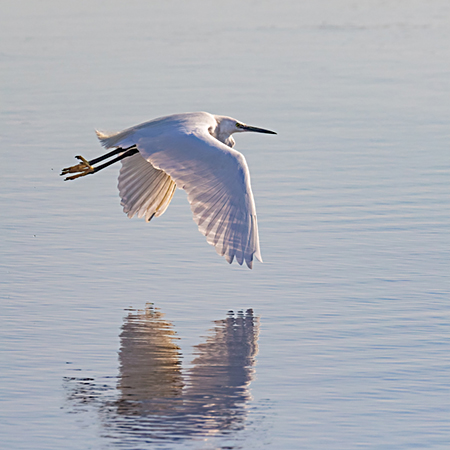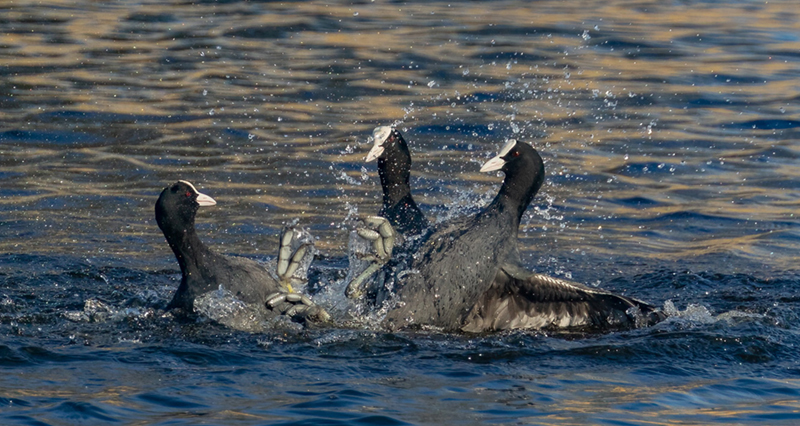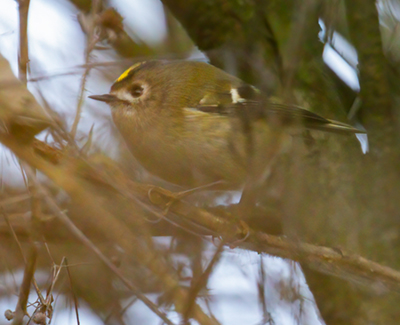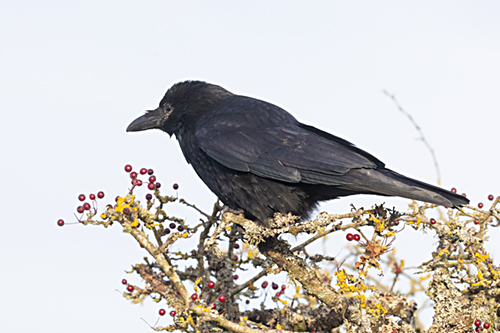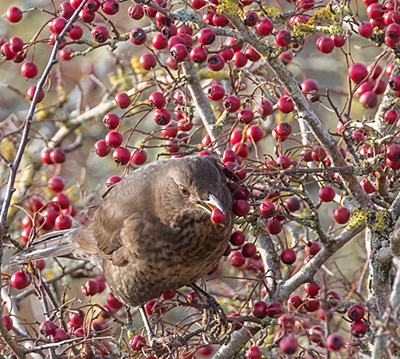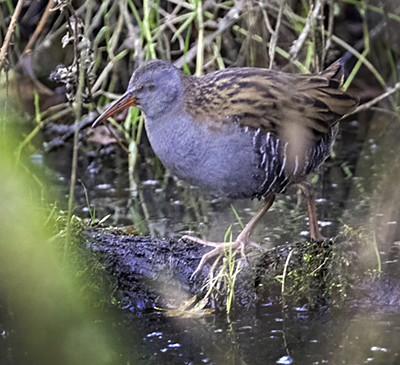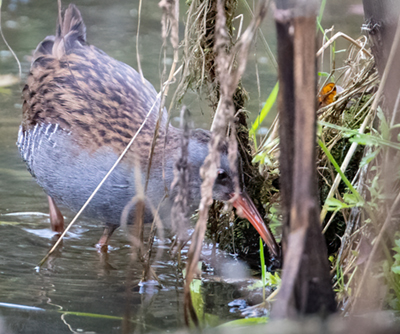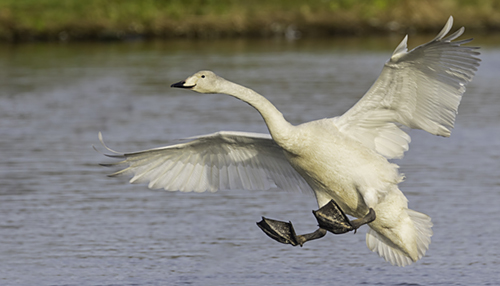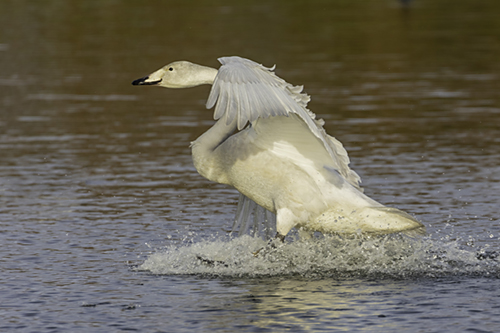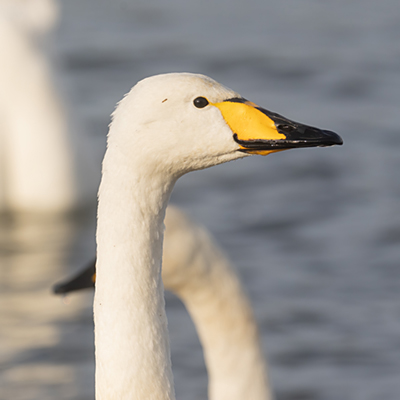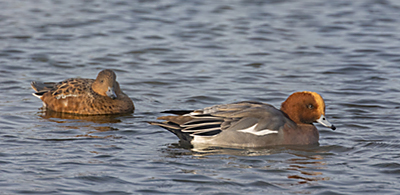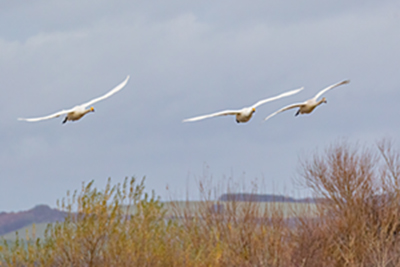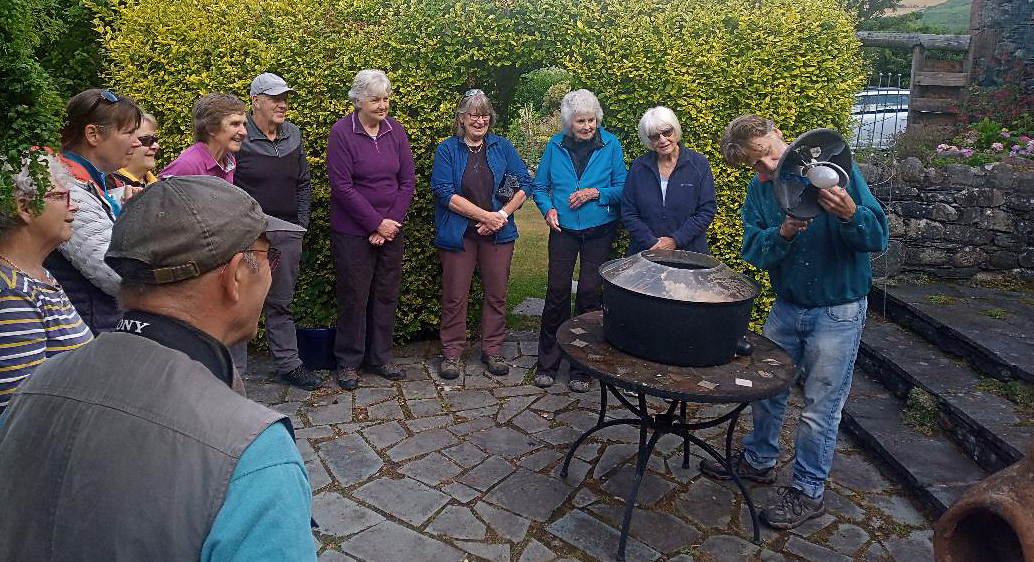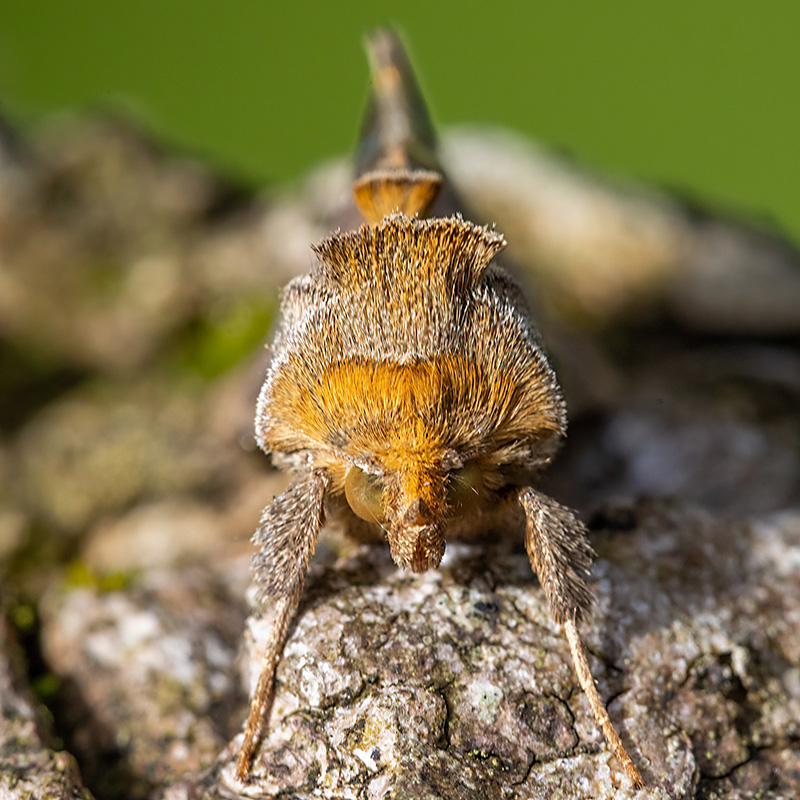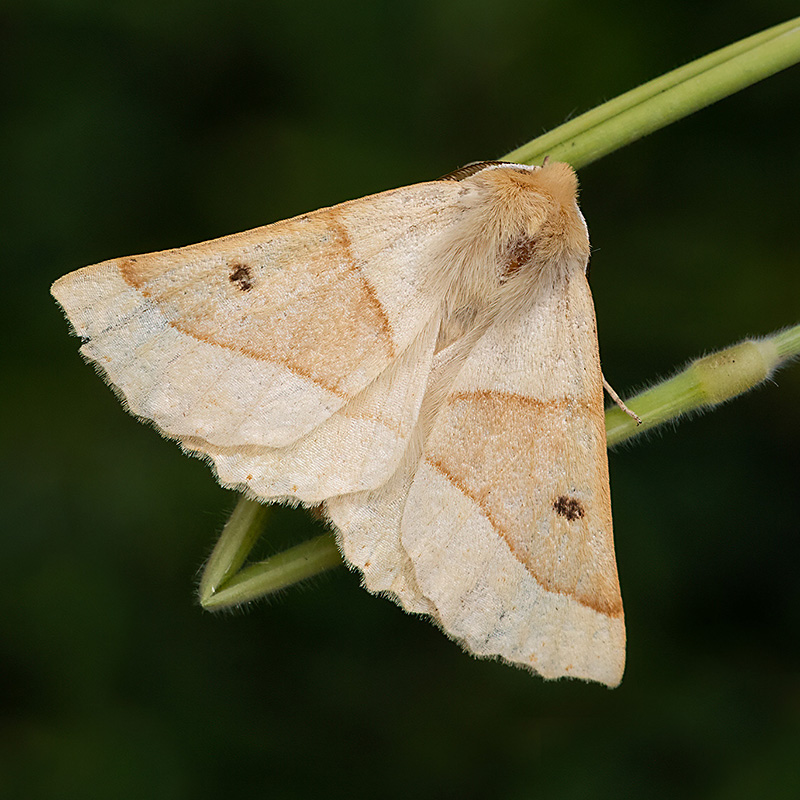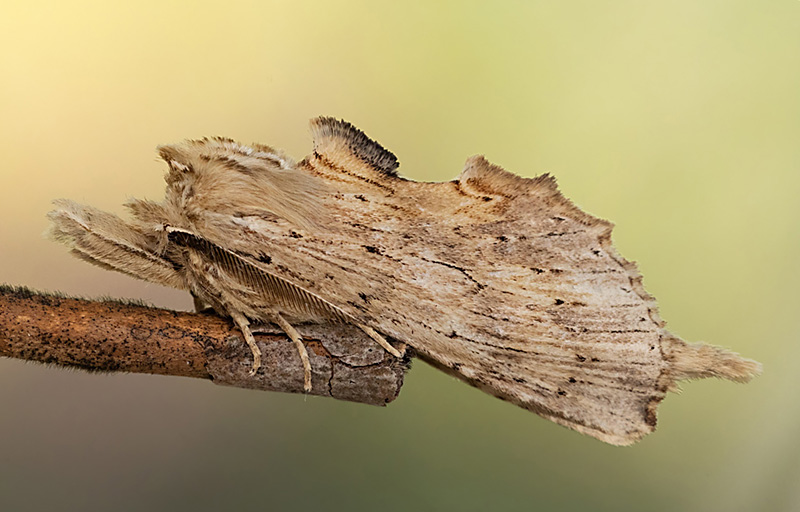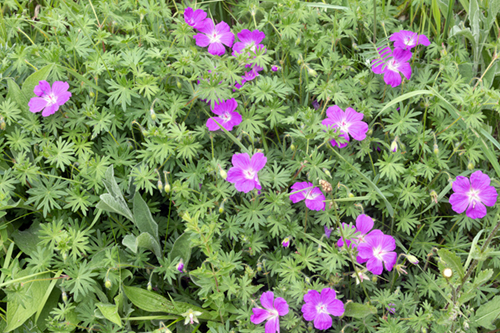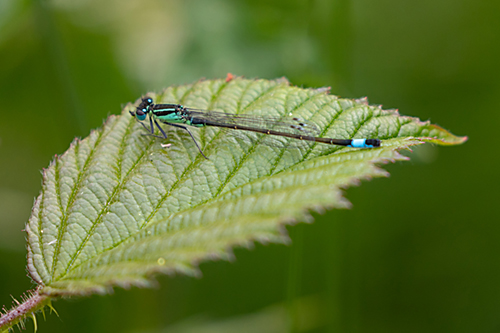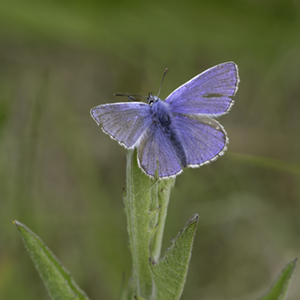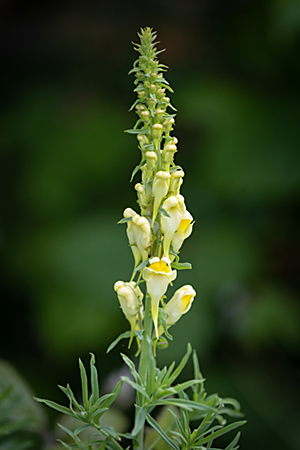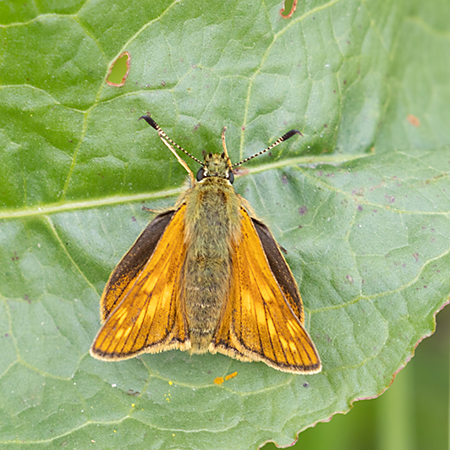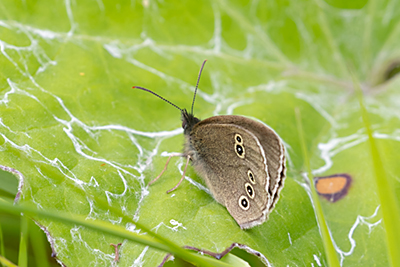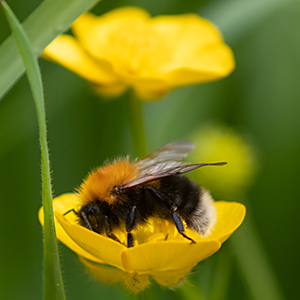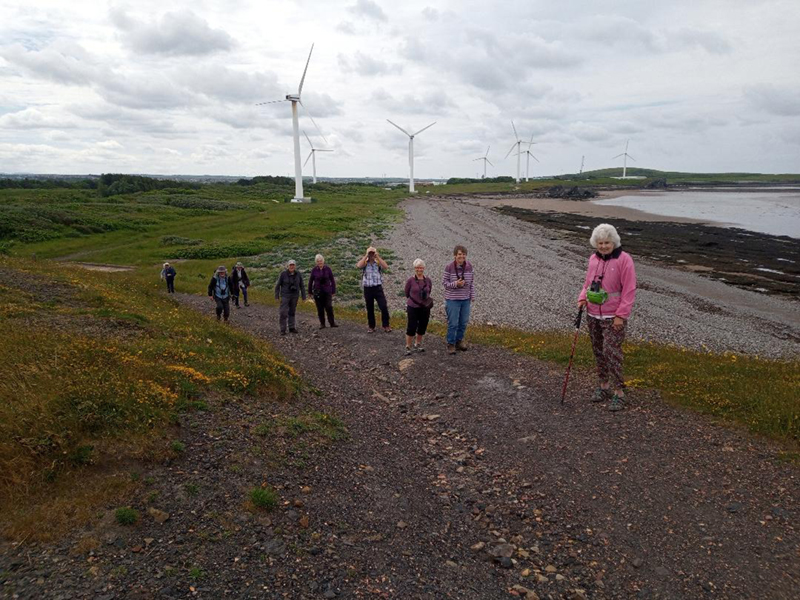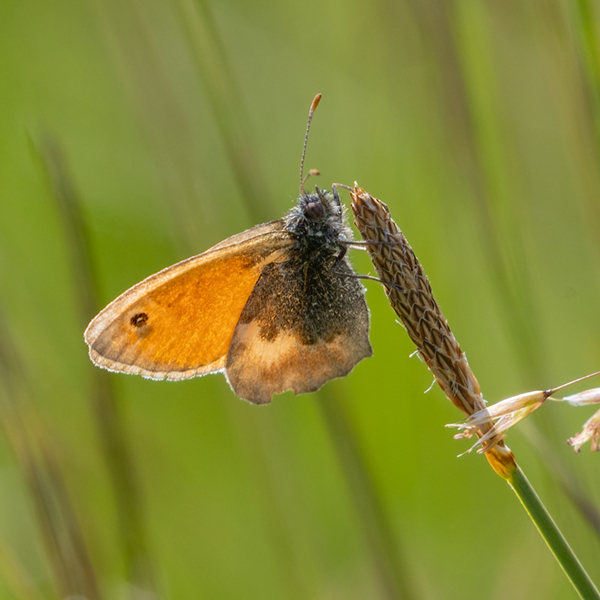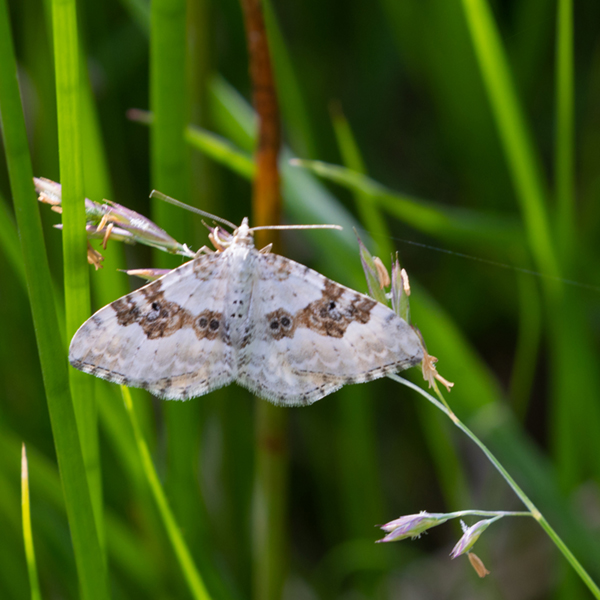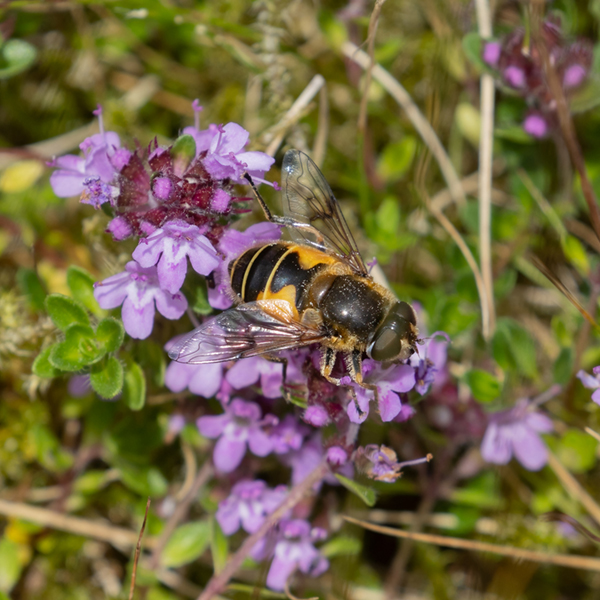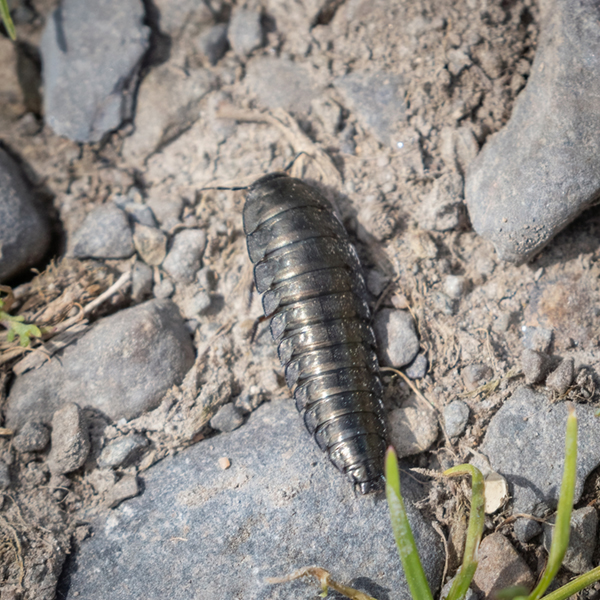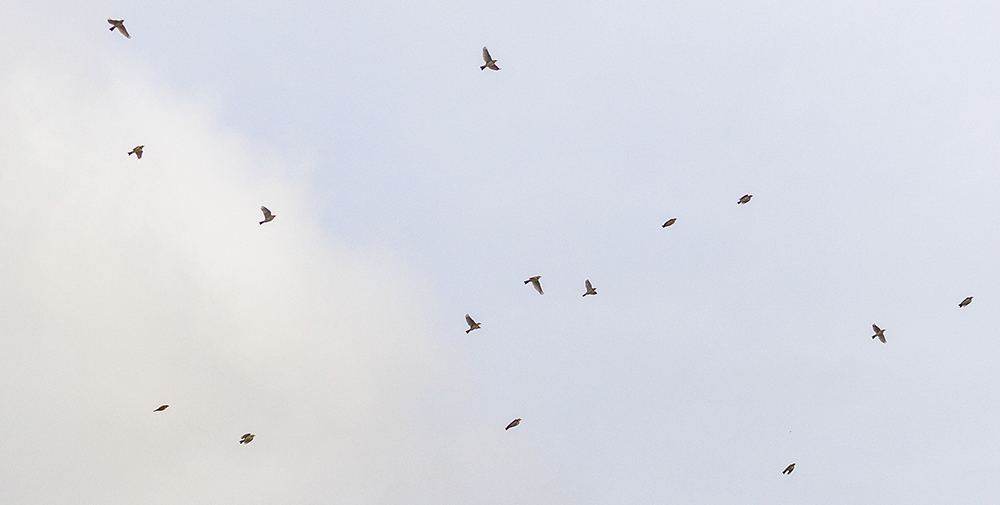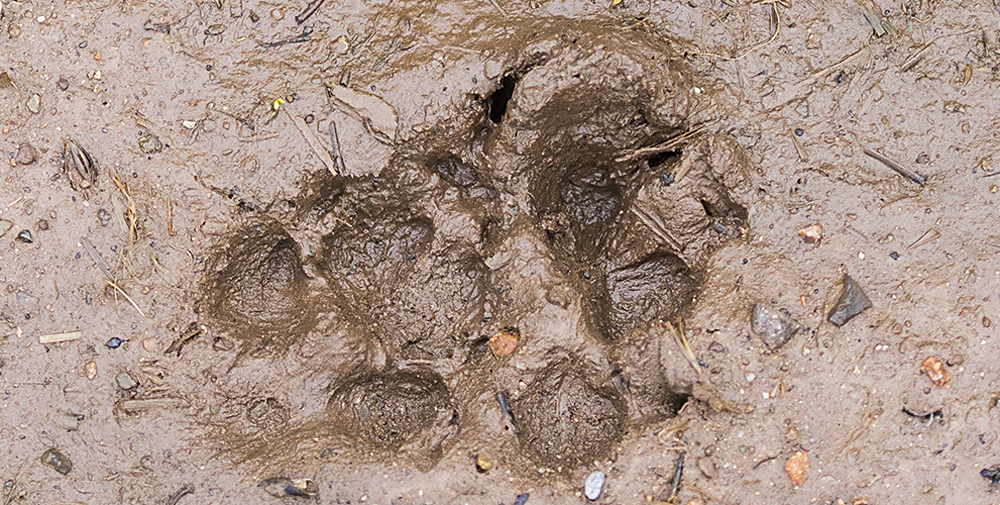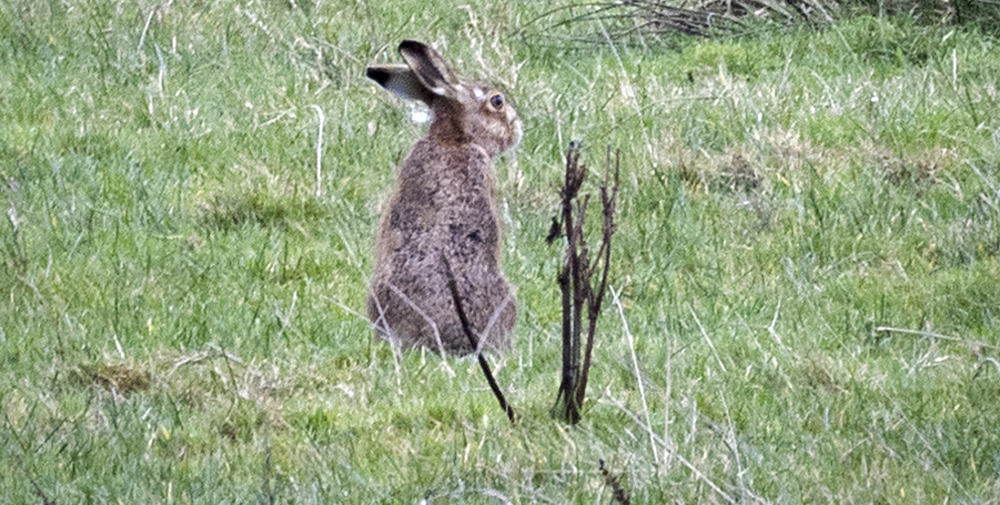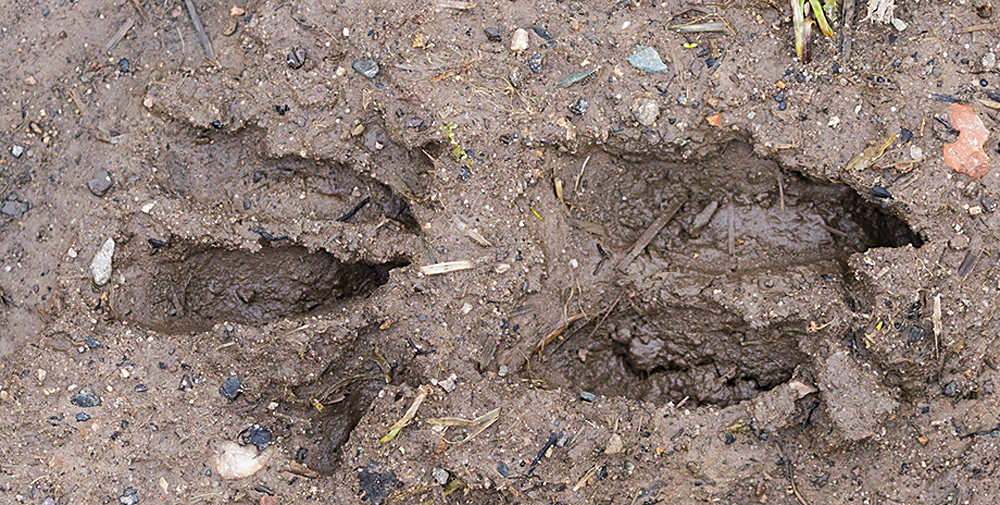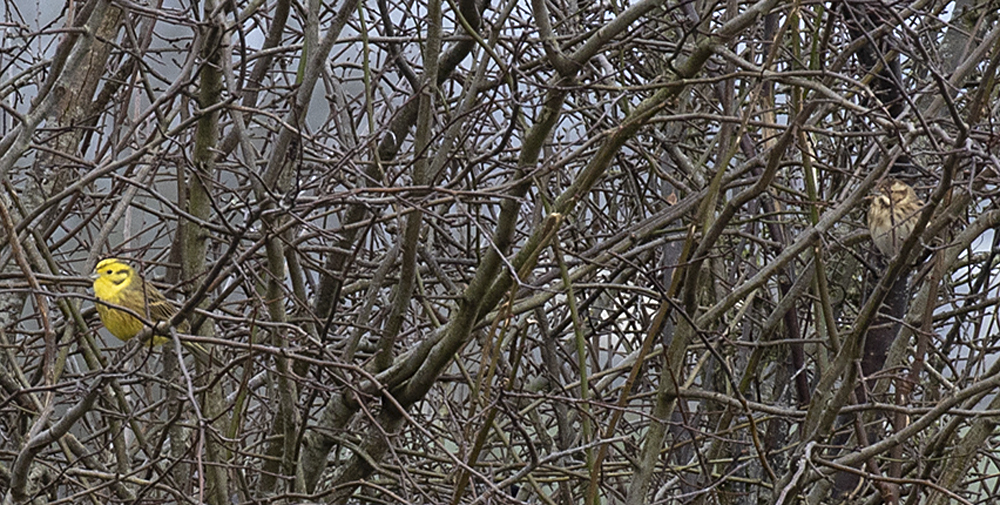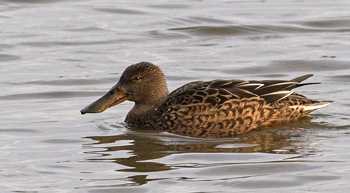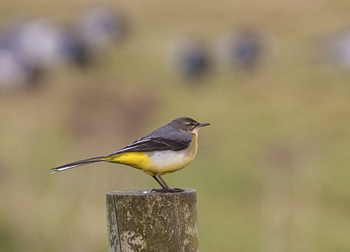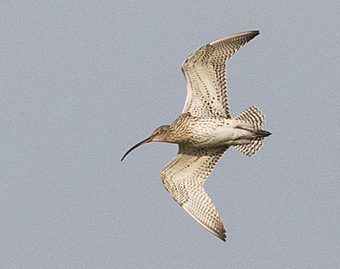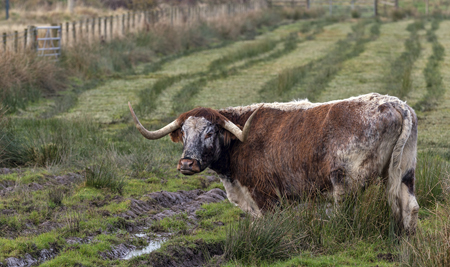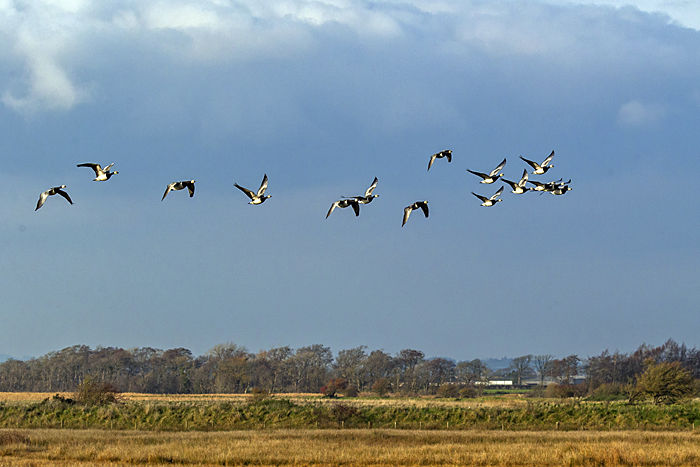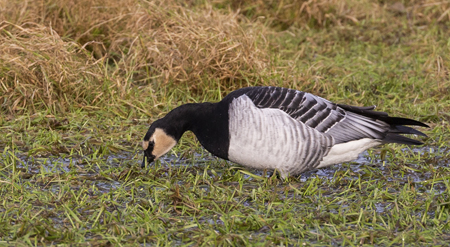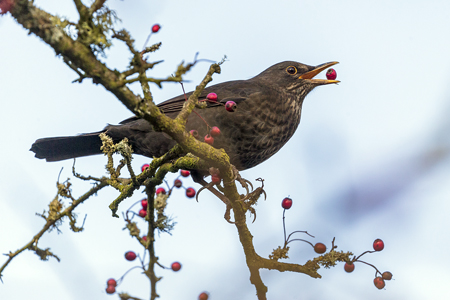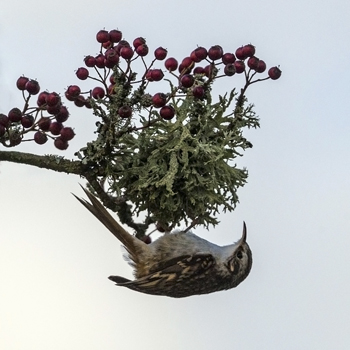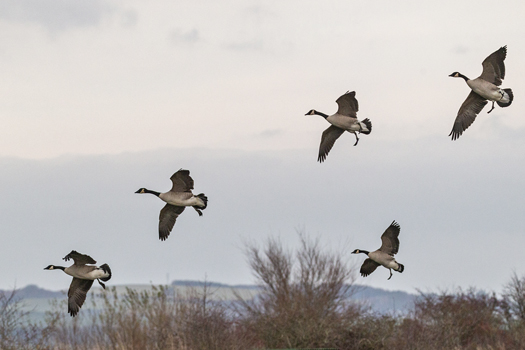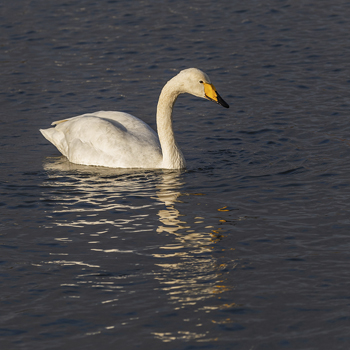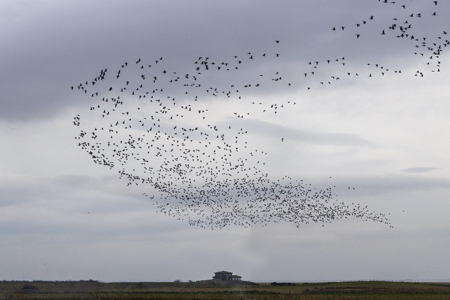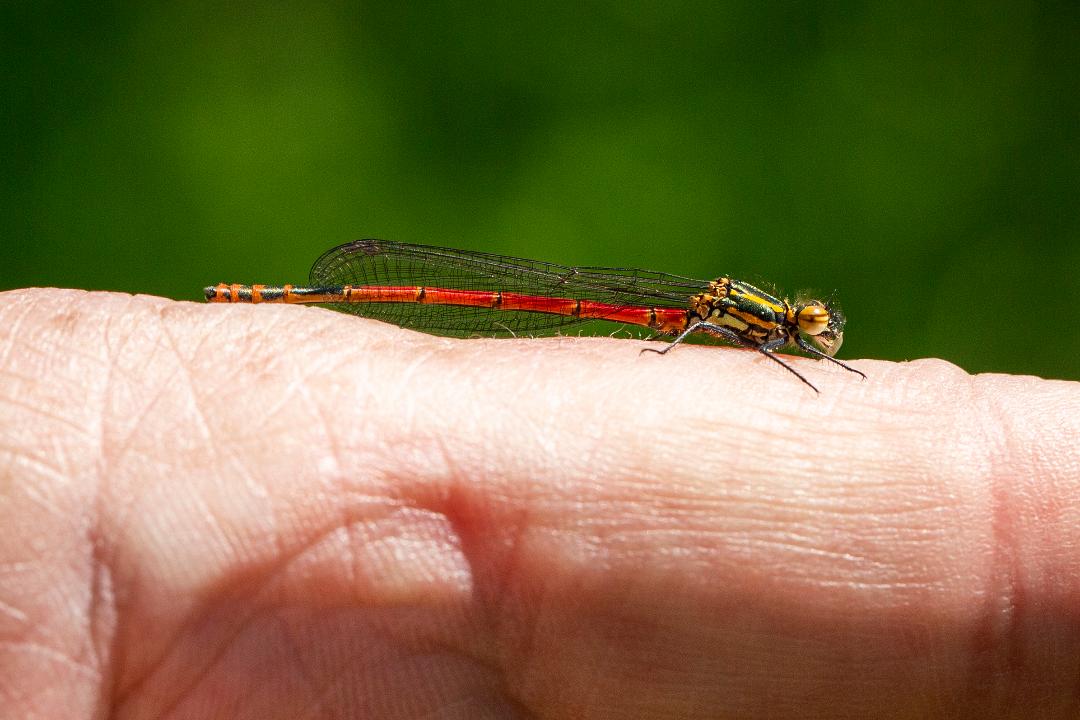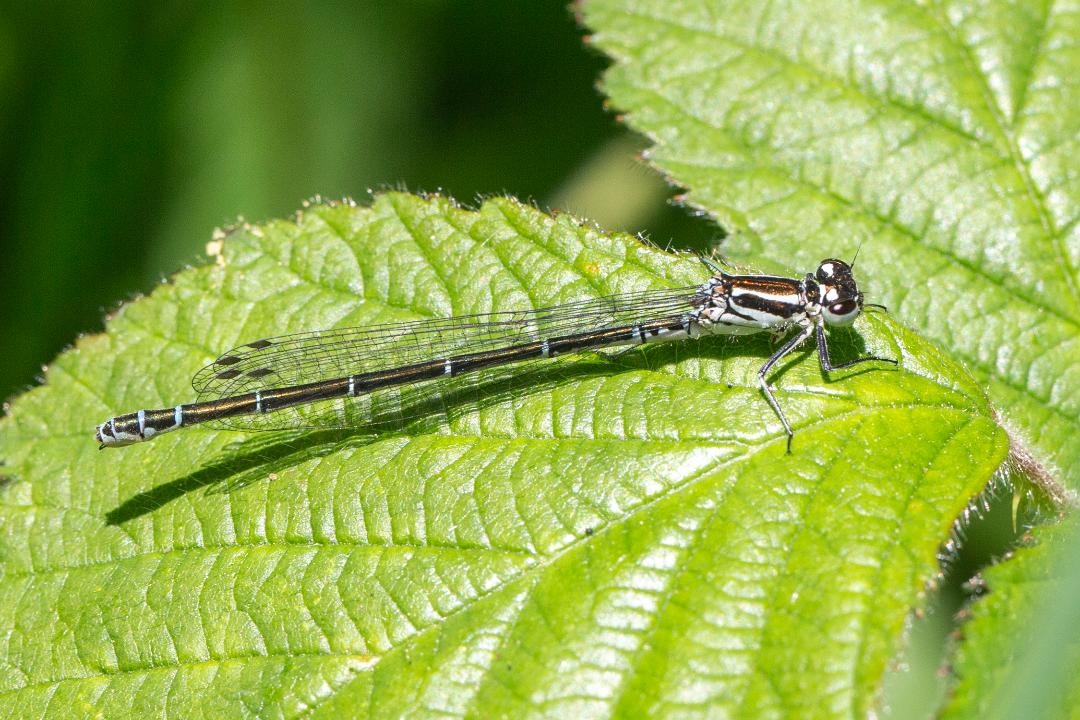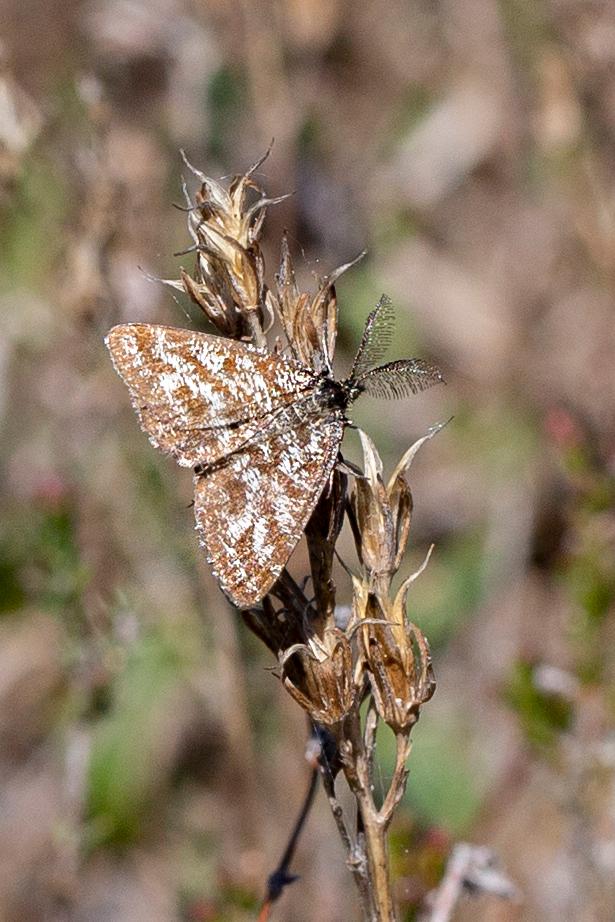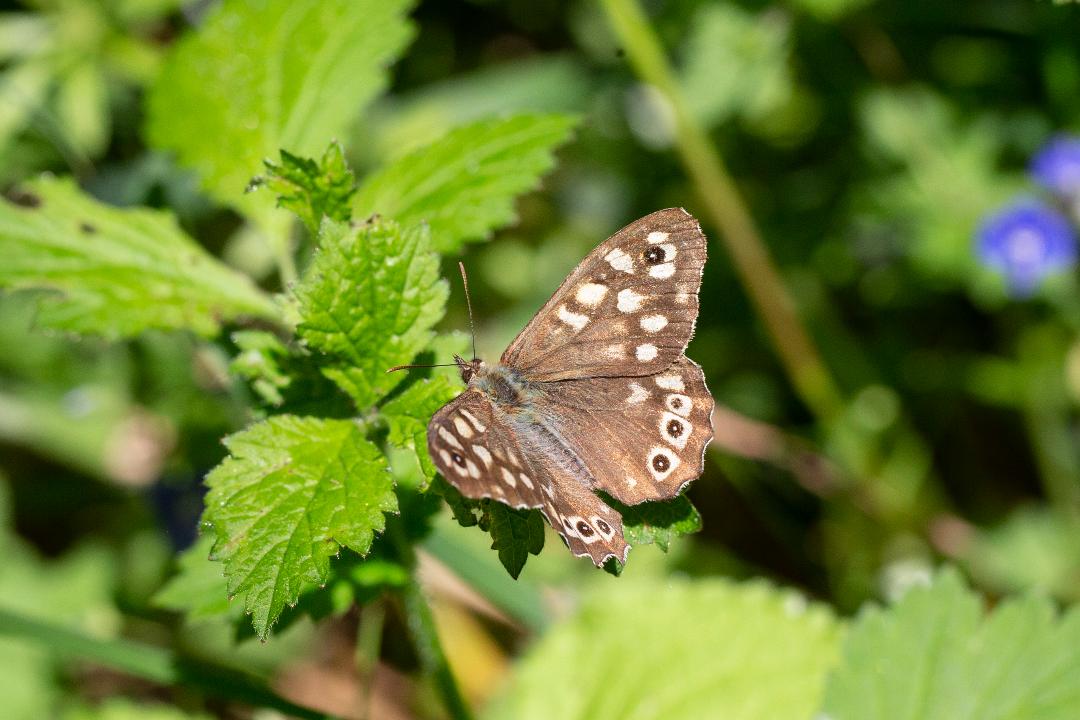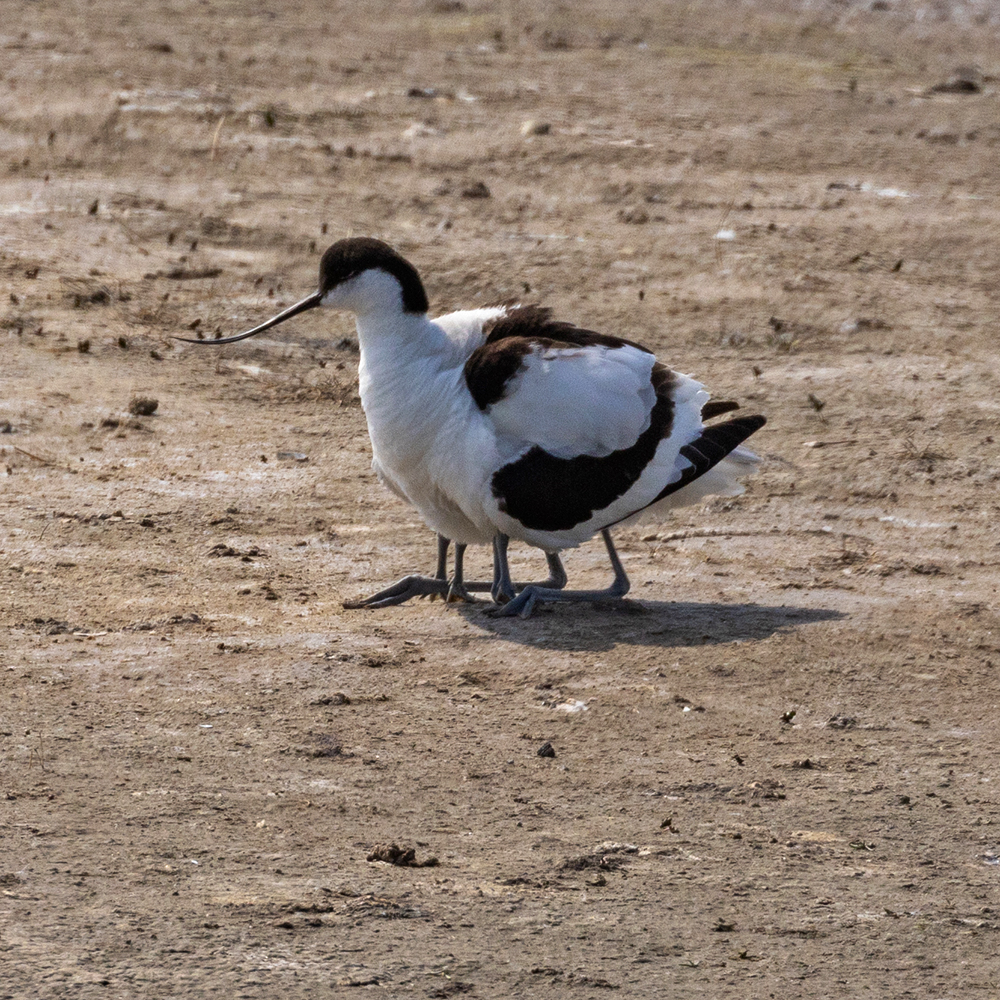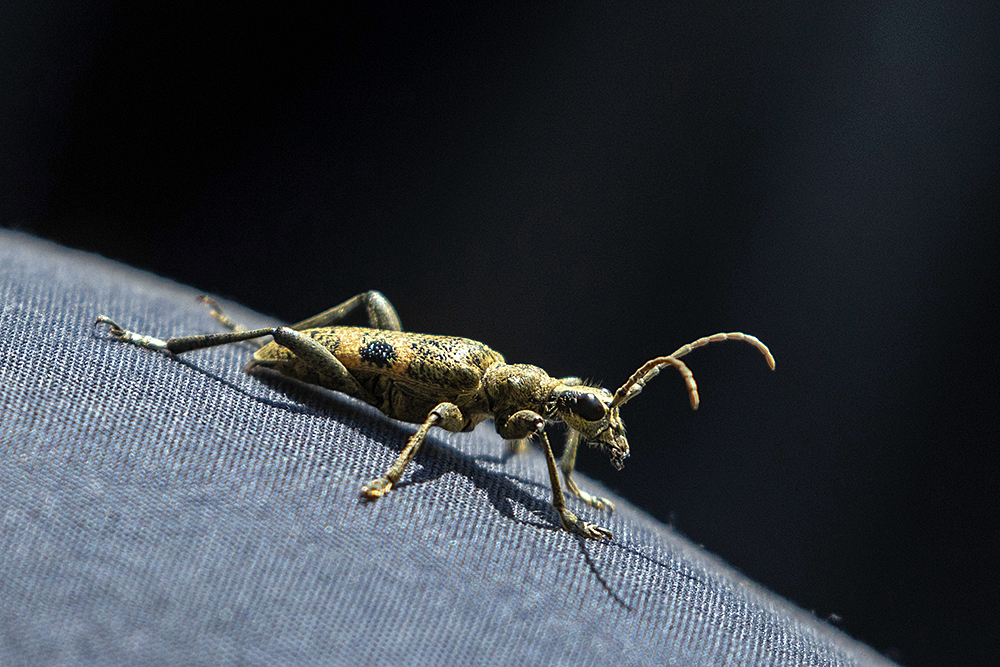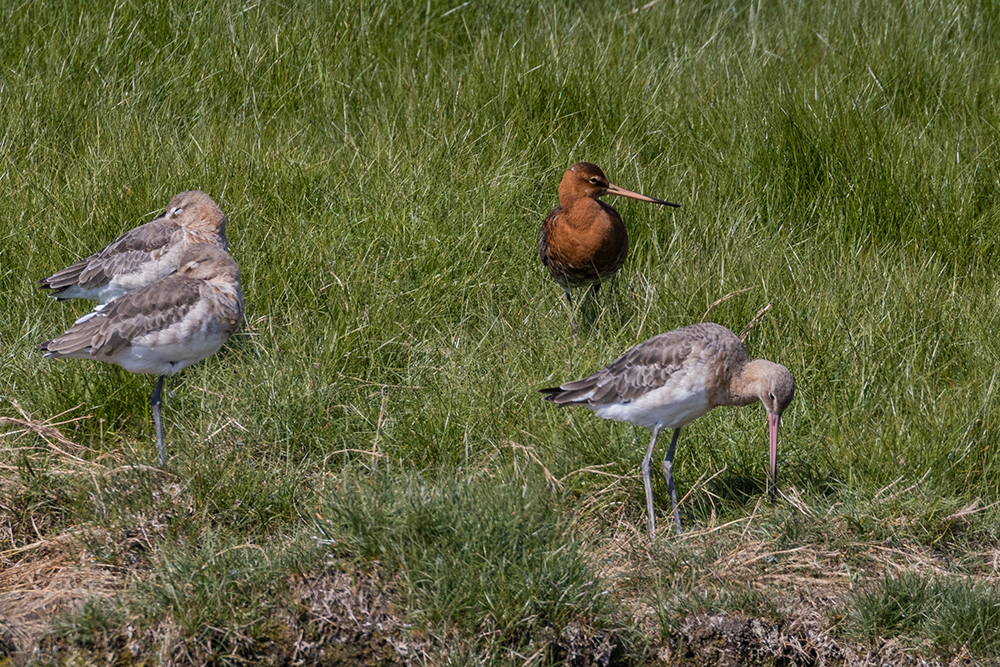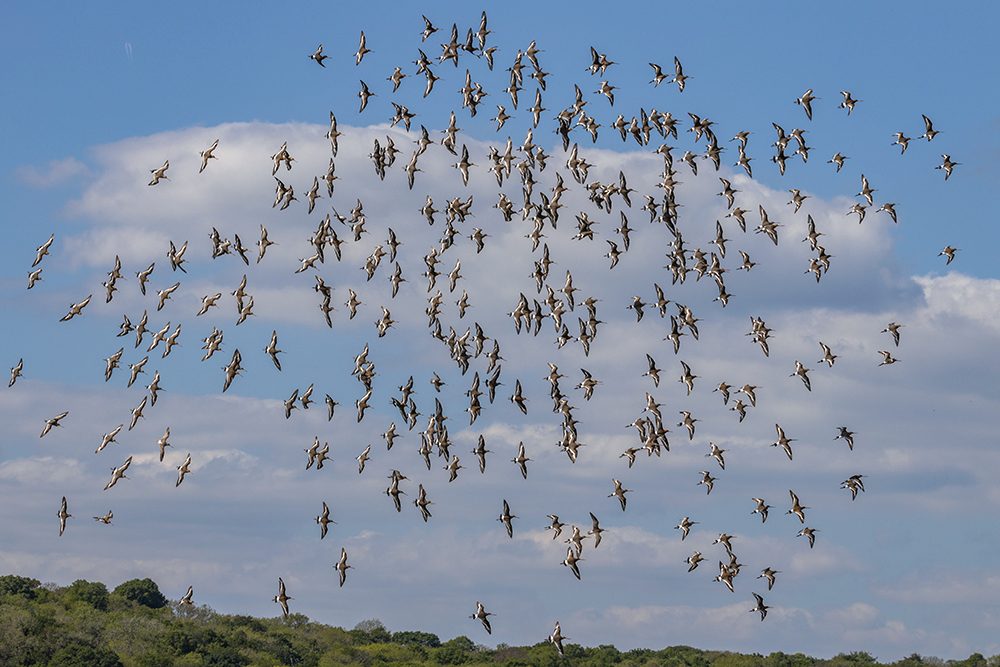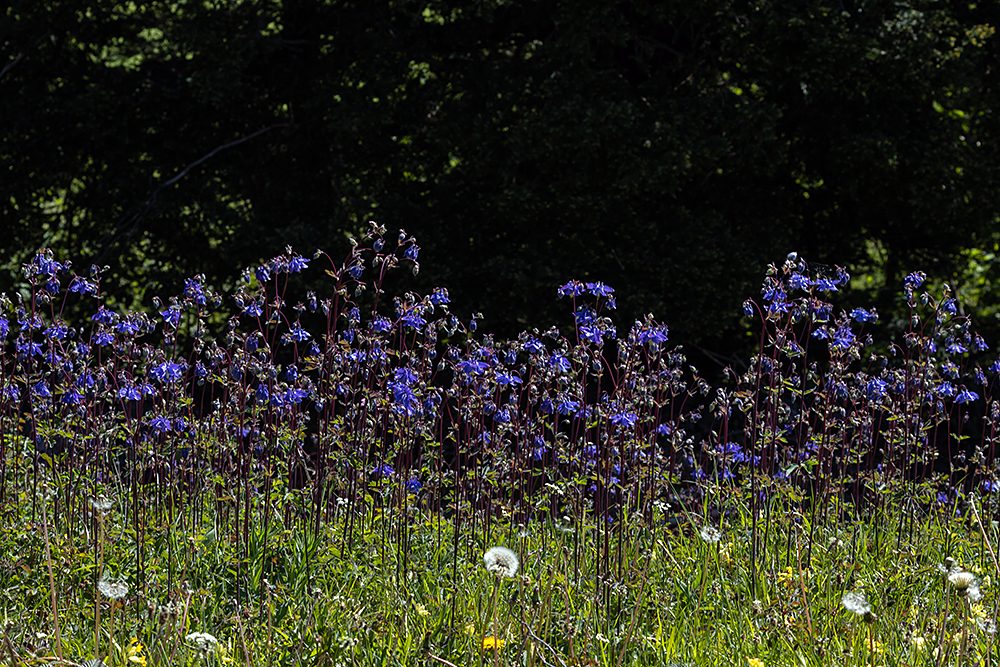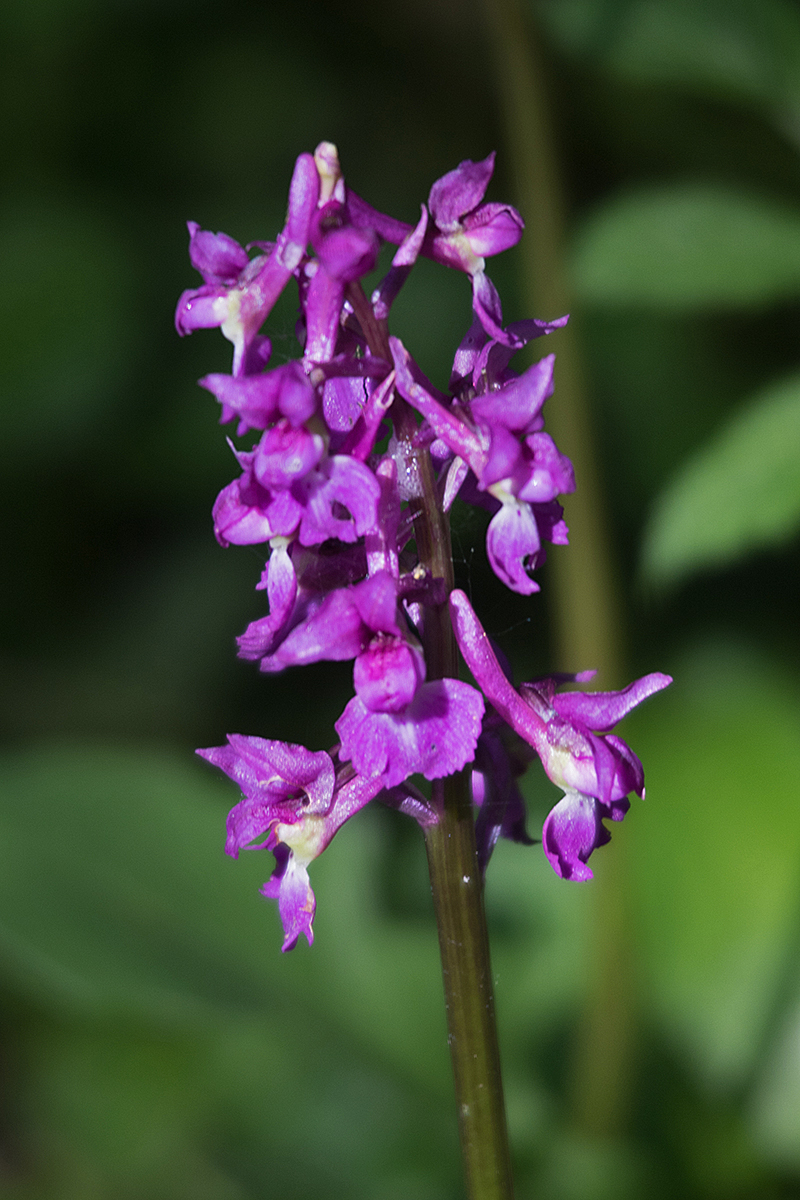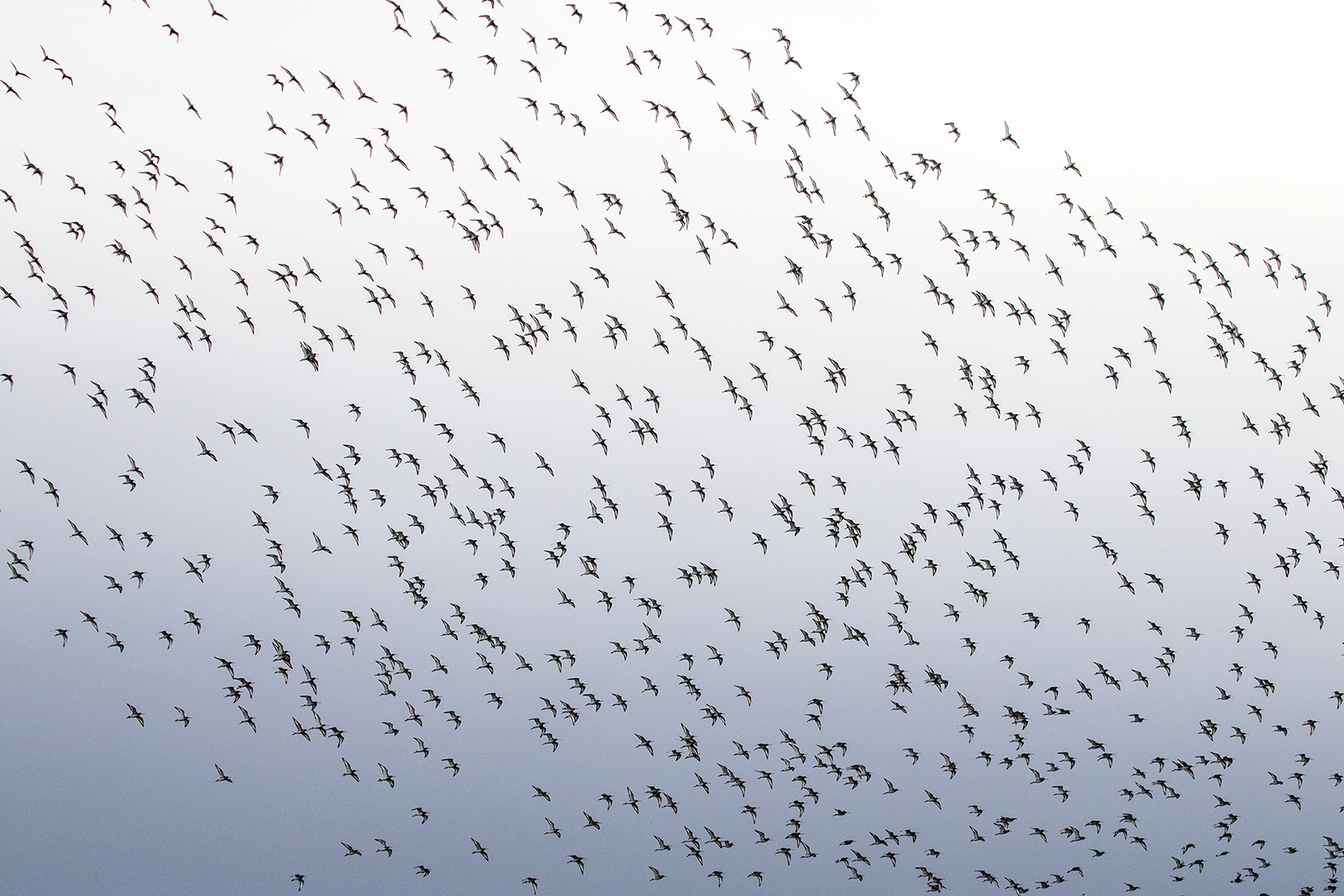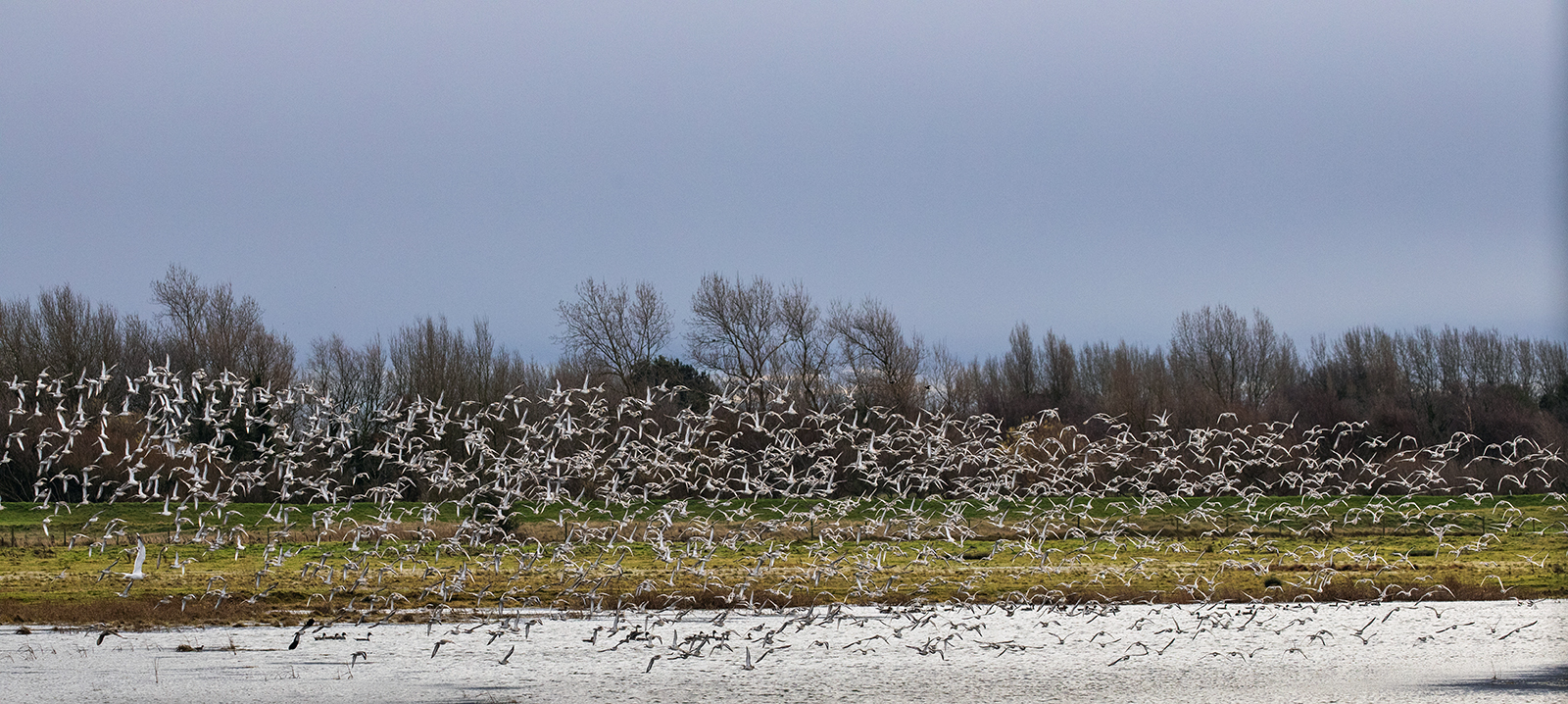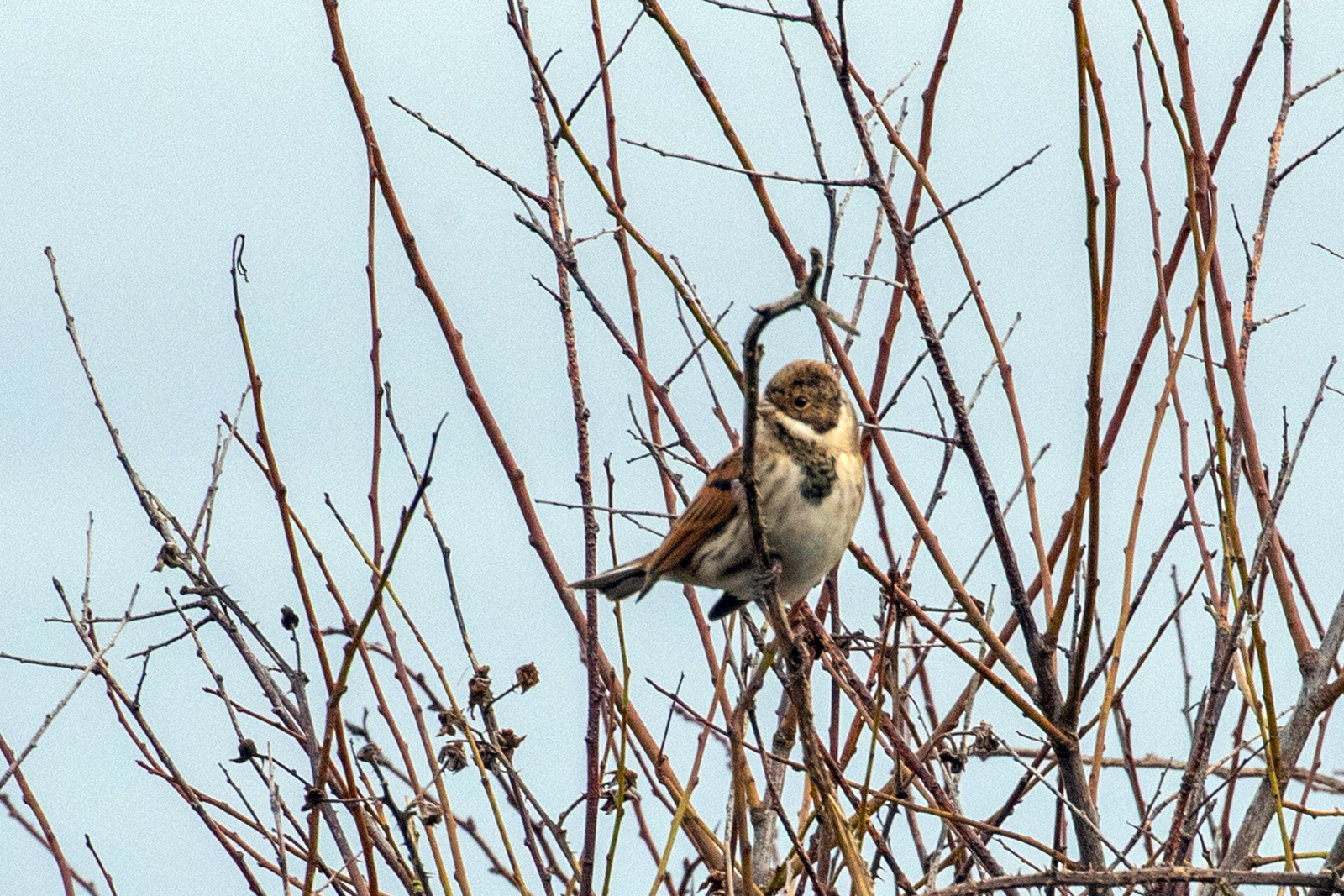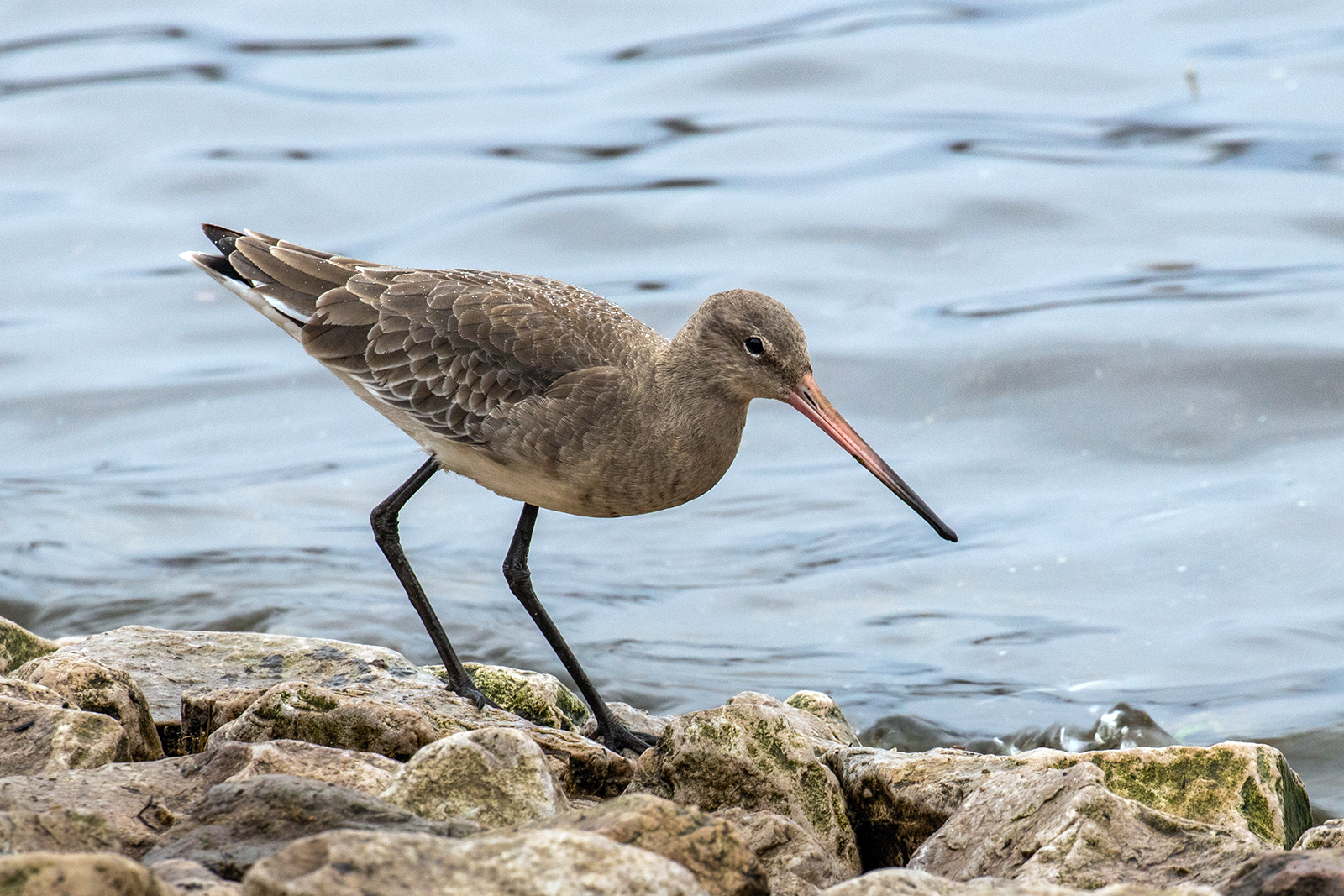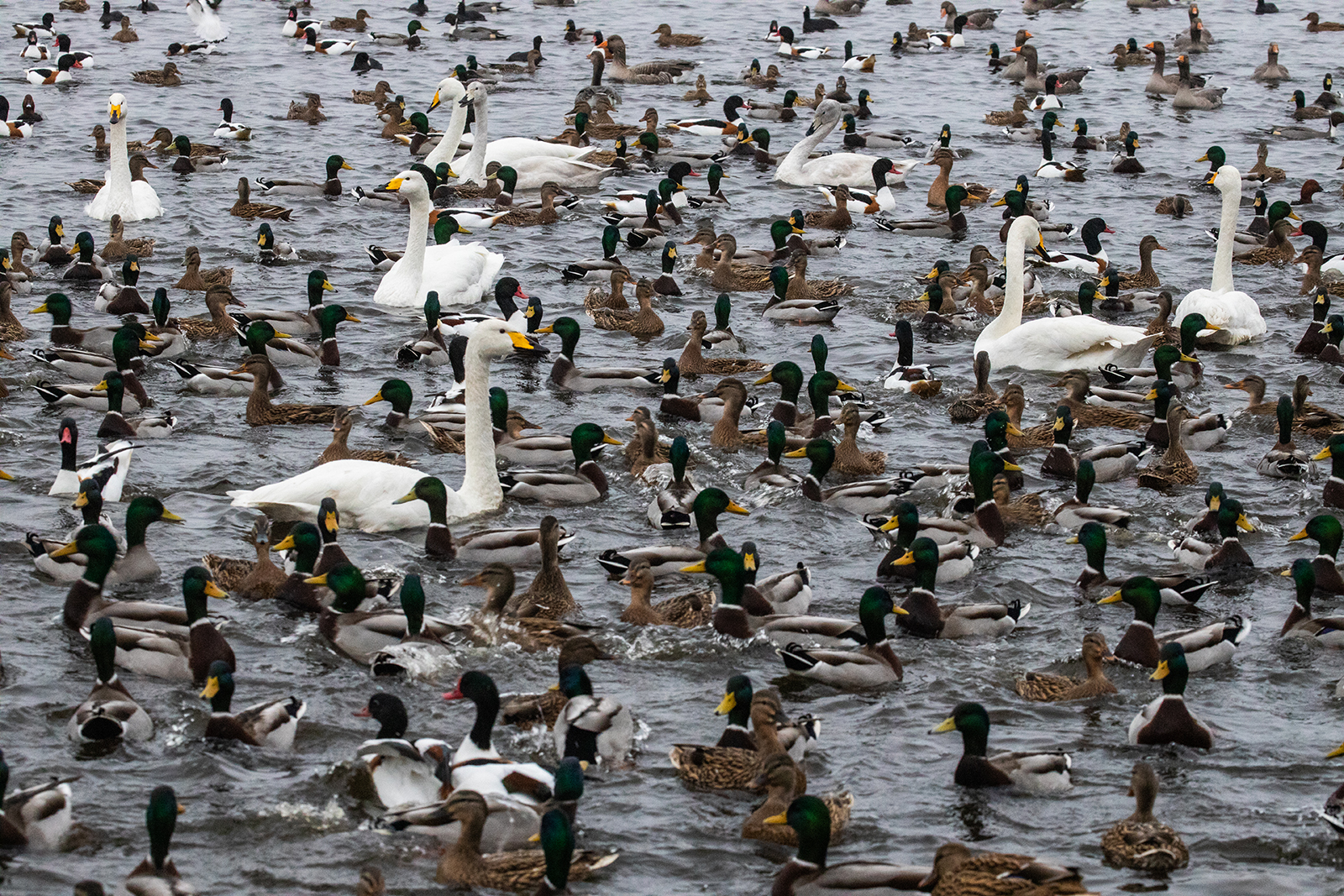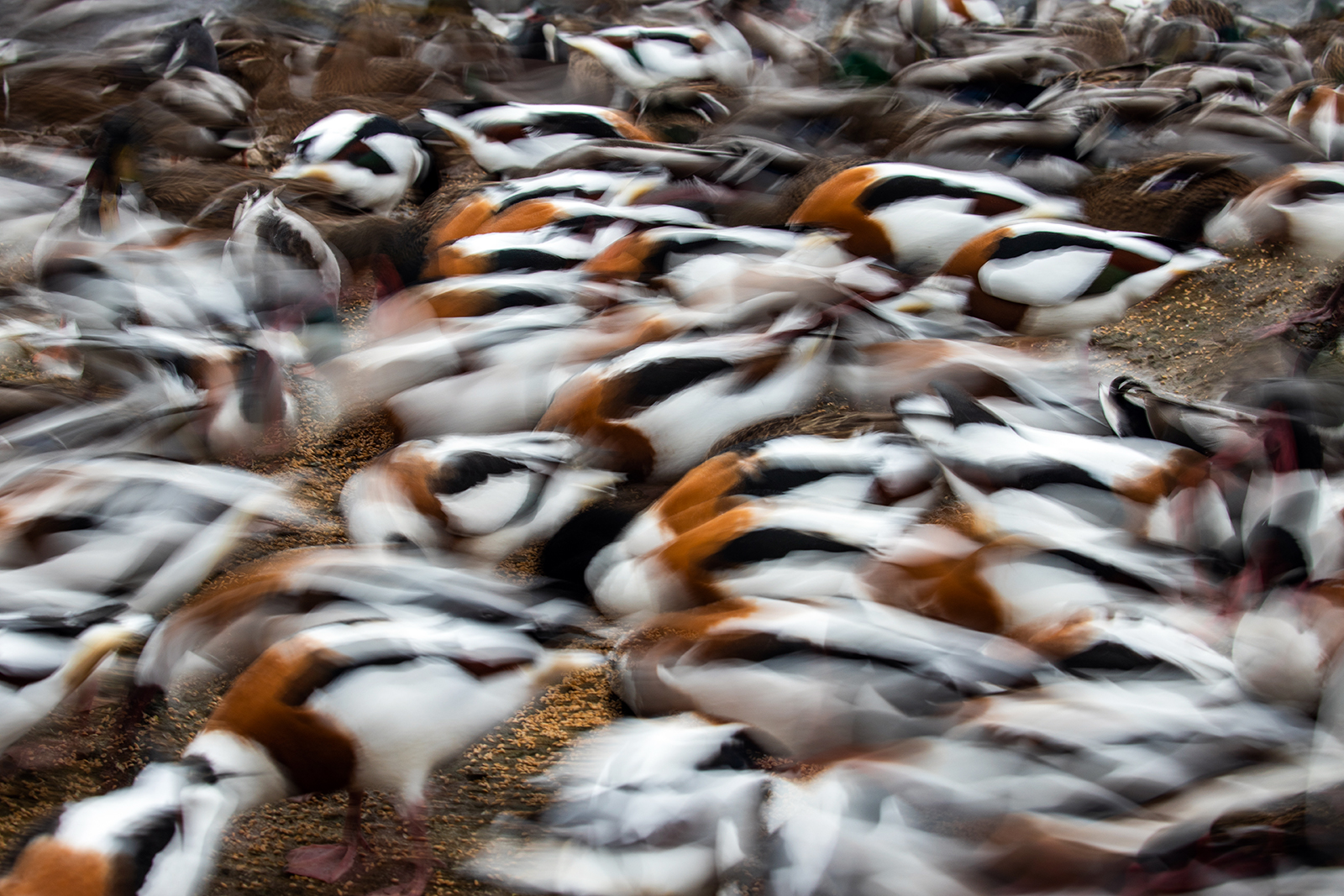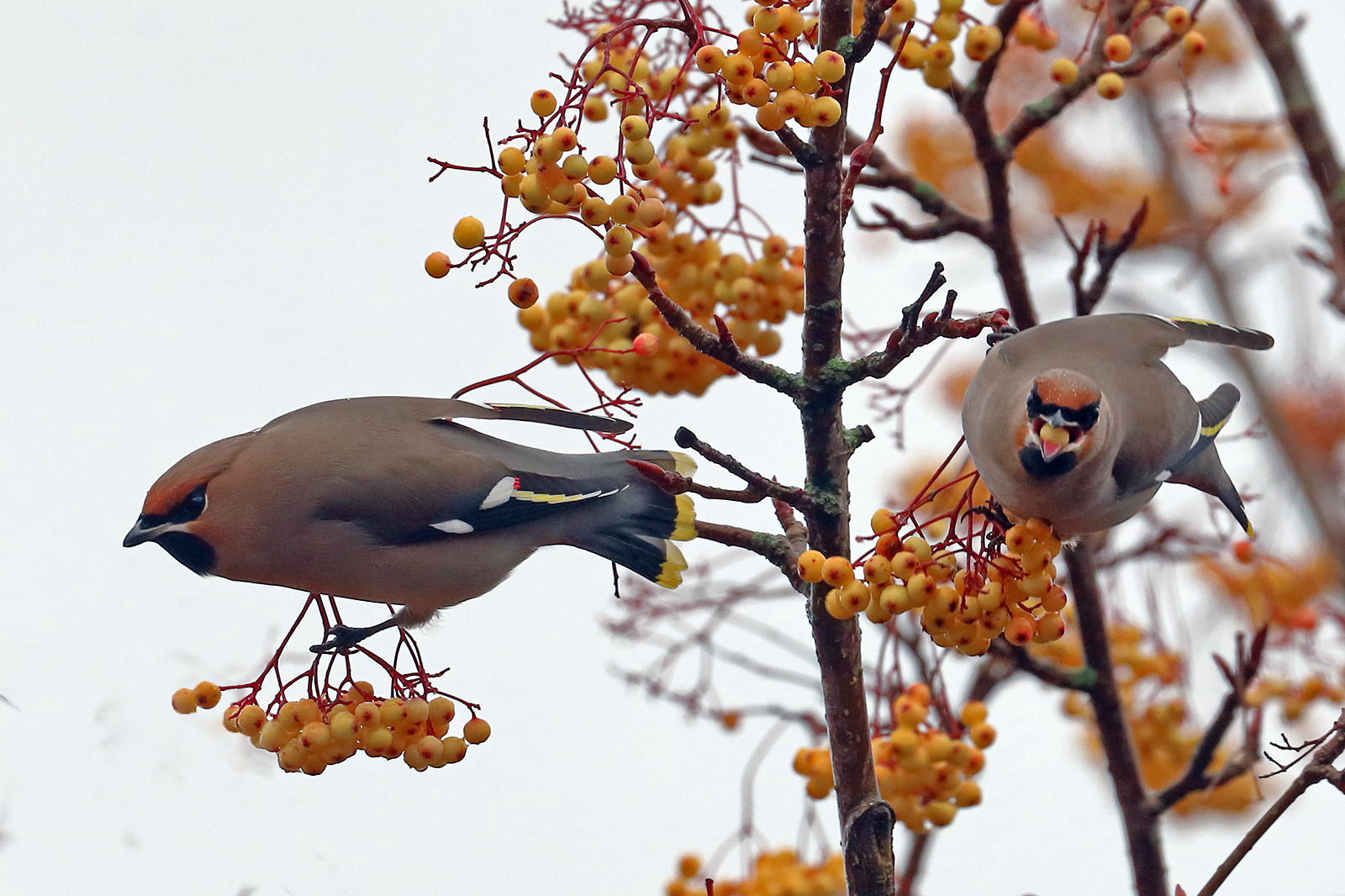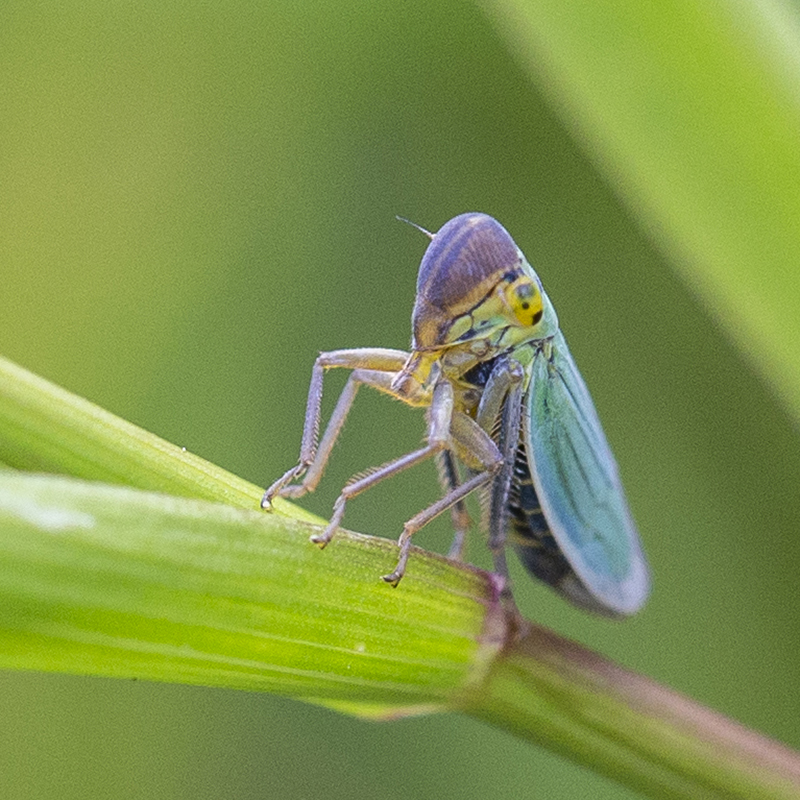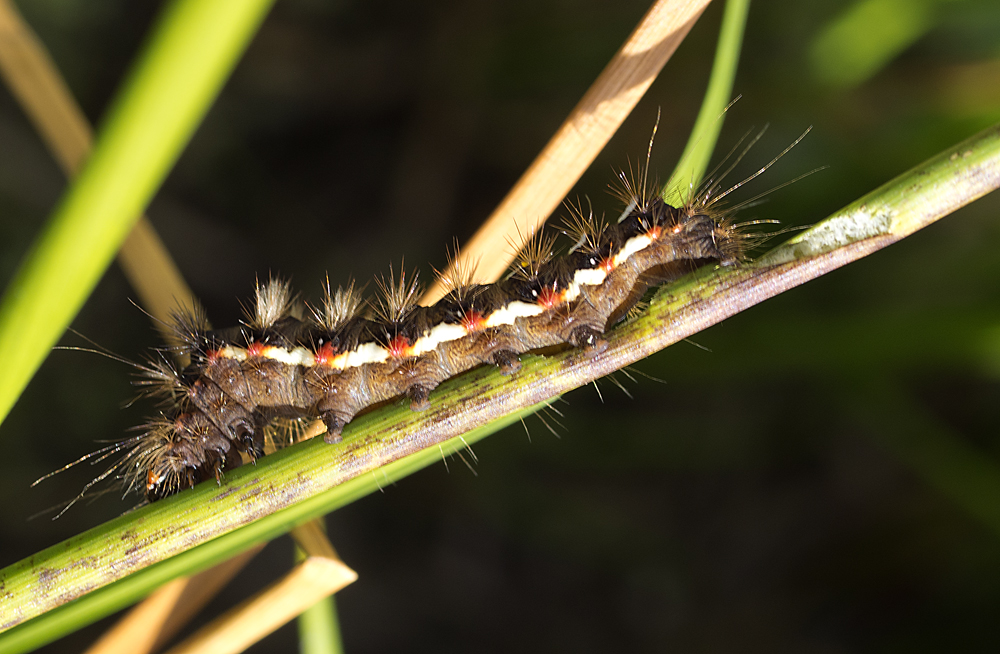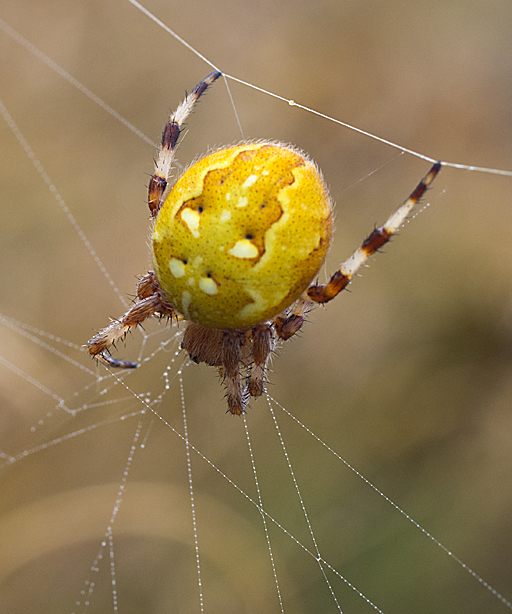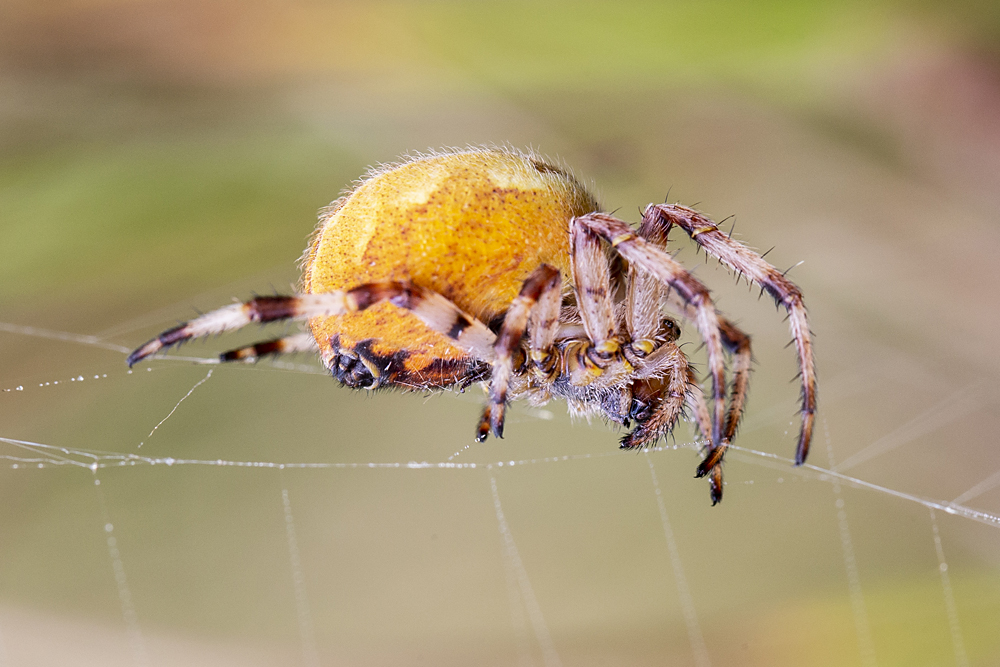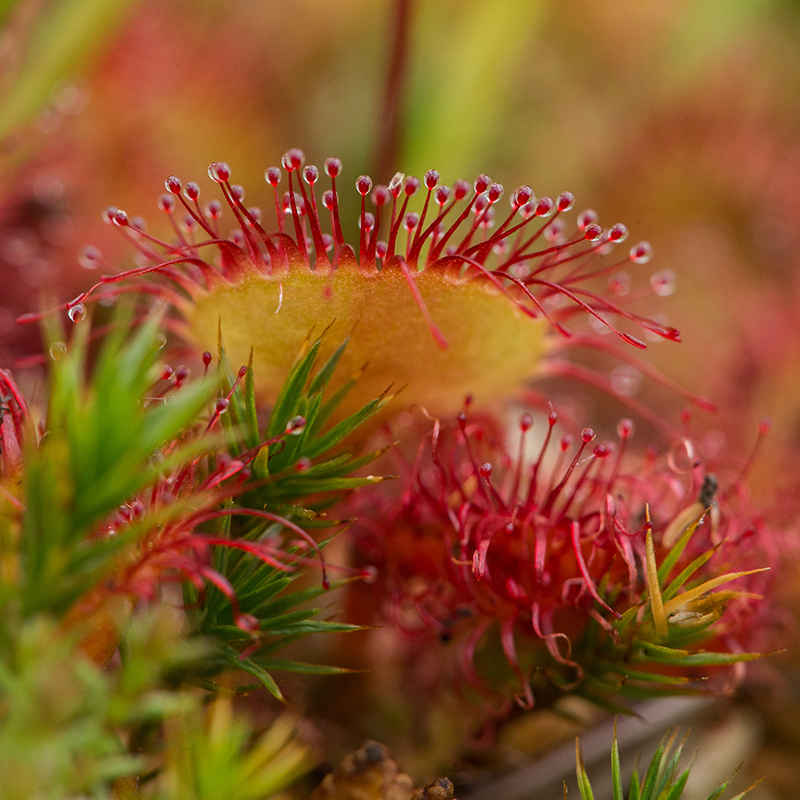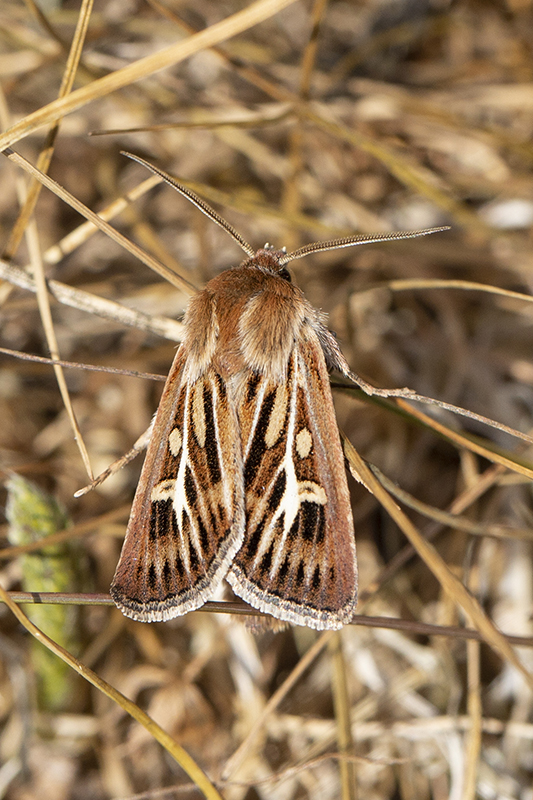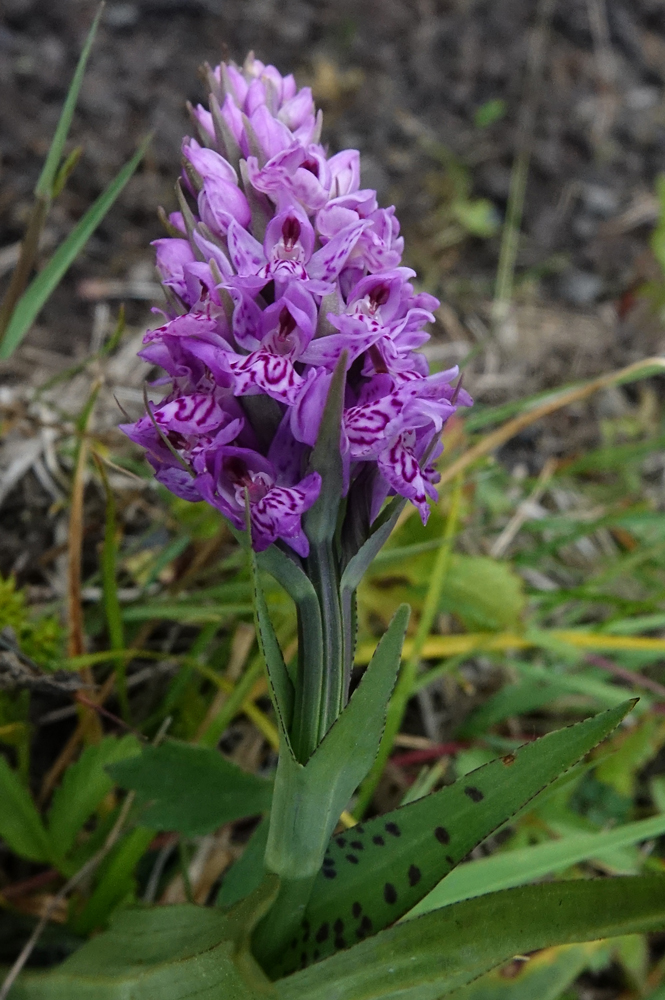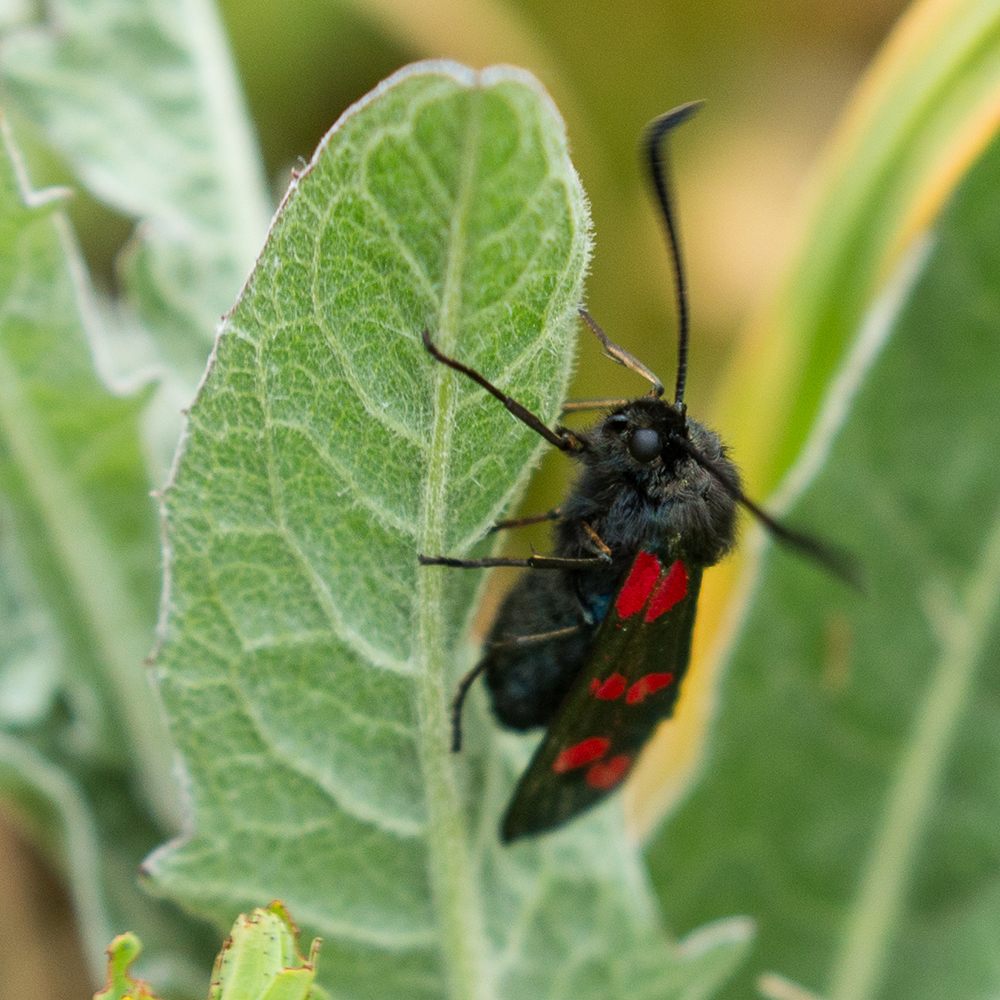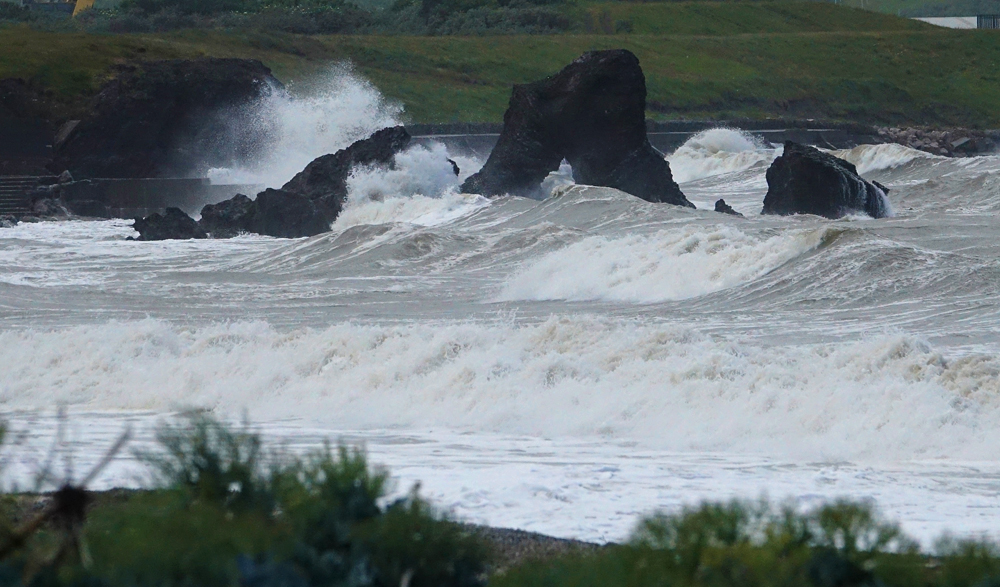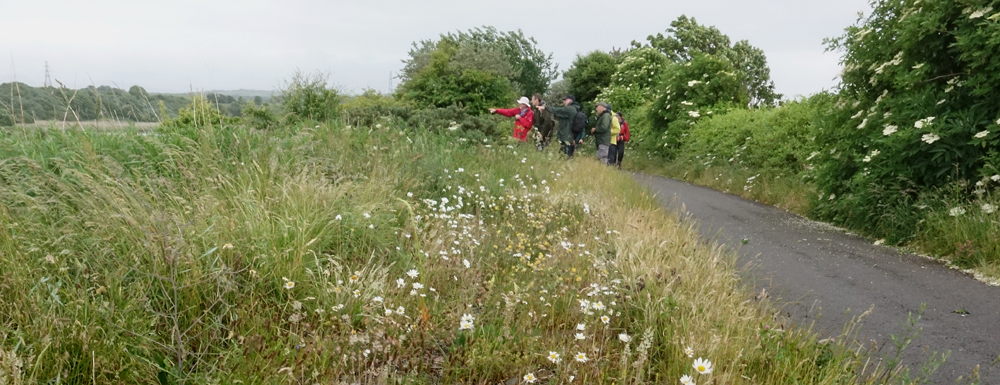Caerlaverock WWT Reserve, 7th December 2017
In spite of mixed weather we enjoyed a productive day at the Wetland and Wildfowl Trust reserve at Caerlaverock.
Shortly after arrival we enjoyed the spectacle of scores of wild swans both Mute and Whooper feet away from the
hide window as they followed the warden and his wheelbarrow of grain.
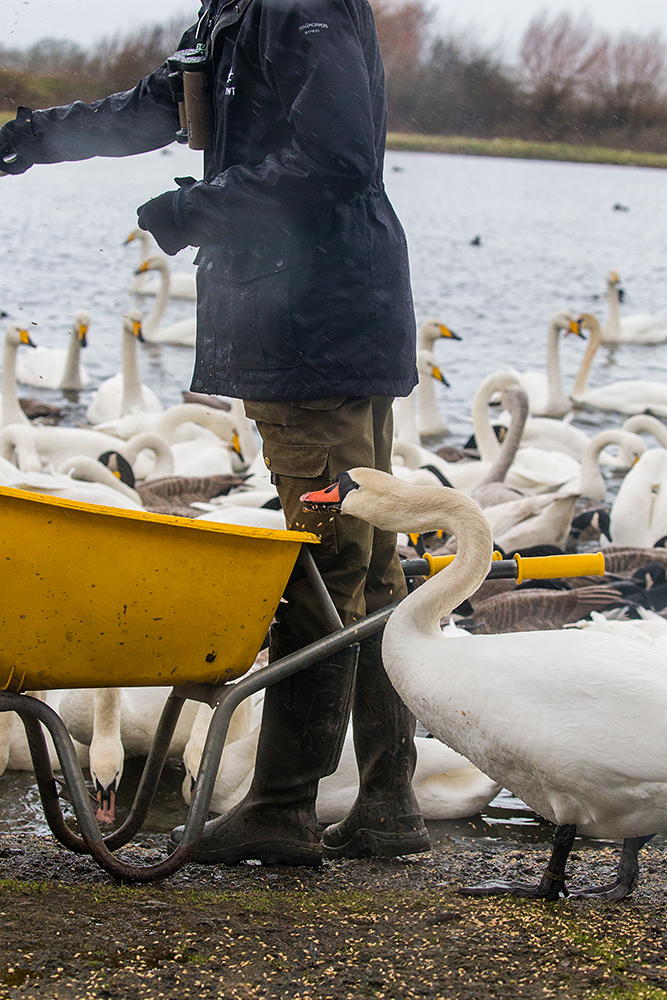 |
 |
 |
| Cheeky Mute Swan | Barnacle Geese and the Merse | Female Bullfinch |
(One Mute Swan cheekily nicking the grain
right out of the barrow, see pic). Numerous Teal and Wigeon along with a single male Gadwall added to the excitement.
A few Yellowhammers as well as at least one male Reed Bunting were feeding with the House Sparrows on the lane and
walking down the track to the tower hide we got good views of Bullfinch, (at least three pairs), a Treecreeper and
a Grey Wagtail and an extremely fleeting view of a pair of Goldcrests. There was a medium sized flock of Barnacle
Geese very close in to the Tower Hide which included one with an all white neck, (usually white, black and
grey), which we were told was a Snow Goose/Barnacle cross. (I remain unconvinced!).
We checked out a feeding station in wet woodland, last year we had amazing close up views of a Water Rail,
but we didn't find one this time. I did however surprise a Sparrowhawk plucking a Feral pigeon, it flew of
leaving its prey and a load of feathers. The Folly Pond Hide gave us views of Shelduck and Black-tailed
Godwits and at times some beautiful sunlight with a dark grey sky and a rainbow. Whooper Swans occasionally
flying in against the dark sky looking particularly lovely.

|

|

|
| Two Whooper Swans and Rainbow | Whooper Swan and Rainbow | Whooper Swan in Flight |
We then ended the day to coincide with High Tide at the hide overlooking the Merse and the Solway. A few
Little Egrets, about ten Redshank, a medium flock of Golden Plover and an ever increasingly large flock
of Barnacle Geese, but the star was a distant, but satisfying by telescope, female Peregrine sitting for
the duration on a log on the marsh. Suddenly all erupted up into the air when an incredibly violent hale
squall passed over us. We sat it out and the returned to the visitor centre and the cars for home.
Surprising omissions for me were no sighting of Tree Sparrows, the Folly Pond Snipe or Green-winged Teal,
(not been seen there this year but apparently it has been seen in Sweden recently), and no Harriers for us
although they have been spotted at Caerlaverock of late.
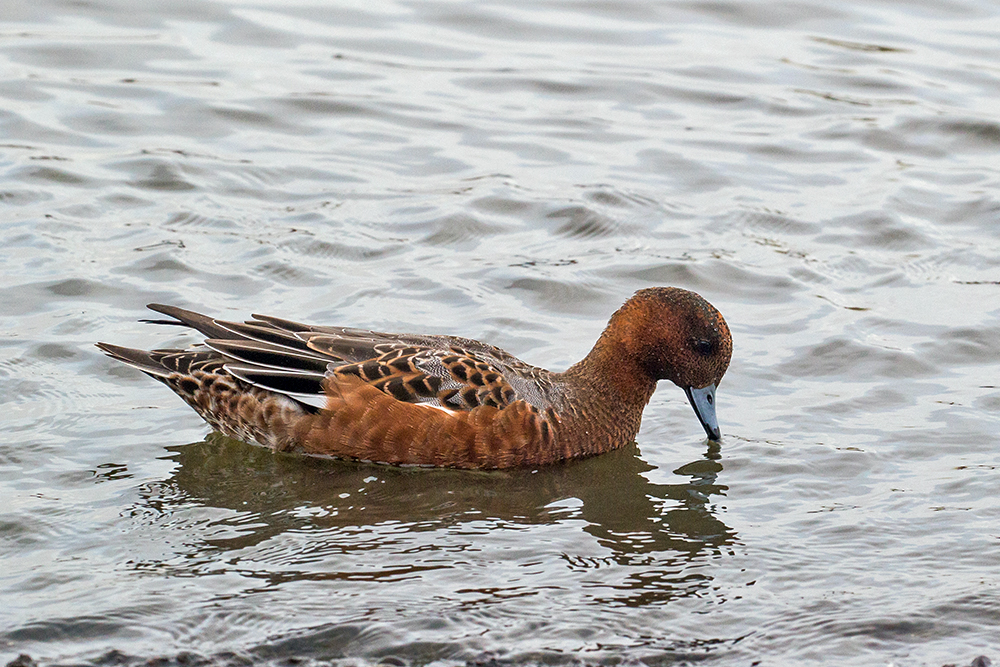
|
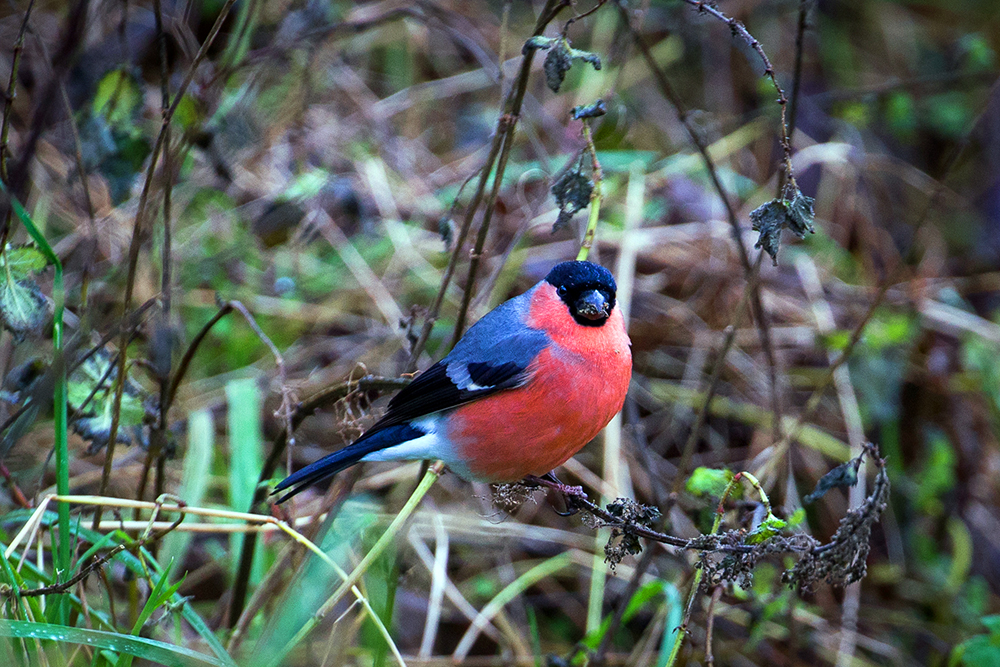
|
|
Gadwall | Male Bullfinch |

|
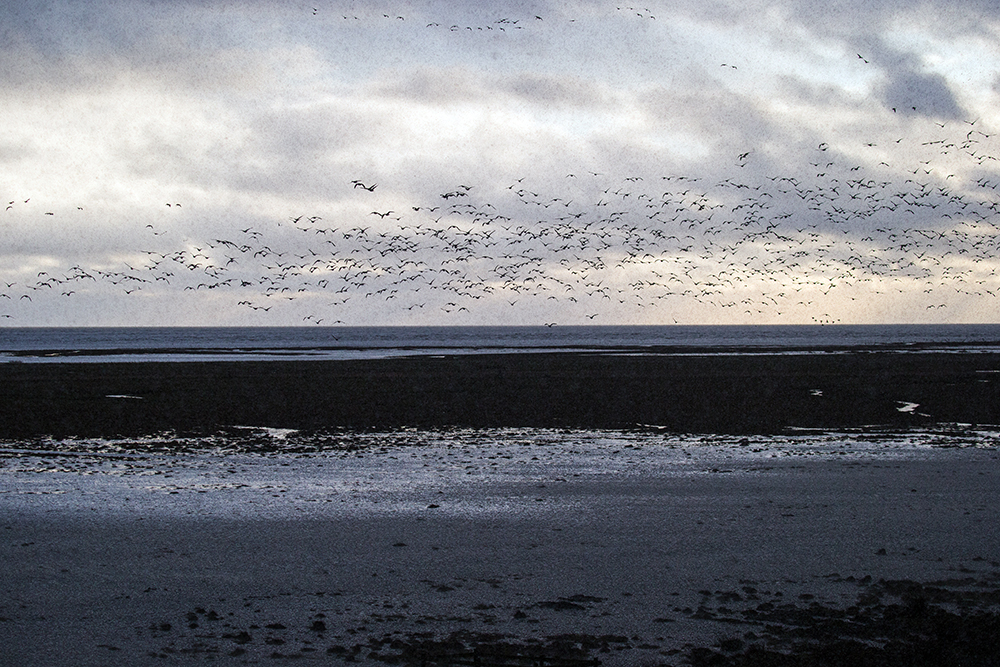
|
| Golden Plover in flight | Hail Storm and Geese |

|

|
| Barnacle Geese and Merse | Male Shoveller |
|
Bat Walk 22nd September 2015
Nine members of the Keswick Natural History Society joined Sally Phillips, a local bat expert, for a walk around Fitz Park. The evening was a great success with three out of the seven bat species found in Cumbria identified near the River Greta. These were Daubenton, Soprano Pipistrelle and Common Pipistrelle, the Soprano being classed as more common than the Common! Sally provided bat detectors to the delight of the members, as this enabled them to hear the echolocation of the bats. There was a demonstration on how to set the frequency to enable the human ear to pick up the sound of these fascinating mammals.
The walk was accompanied by a superb explanation of the breeding and living habits of bats. Breeding takes place at this time of year, with each female producing only one pup in summer. The young live in nursery roosts and are ready to fly in approximately three weeks. There are not as many natural roosts as in the past, with more bats taking to boxes and buildings. The Pipistrelle will roost in buildings, however the Daubenton prefer to live and hunt near to water and will roost under bridges or in holes in trees. They will only come out after dark whilst the Pipistrelle emerge earlier, our first sighting being at 8.00 pm.
Currently, numbers of bats are good as they do not have many predators. Being nocturnal the main predator is the tawny owl or the domestic cat! One bat can eat up to 2,000 midges per night and can live for 20 - 30 years.
Thanks were expressed to Sally for an informative evening and for explaining bat behaviour at a level that enabled members to understand the world of the bat, which was such a mystery to some of us.
Sue Turner
|
Caerlaverock 19thNovember 2015
The group was blessed with a day of beautiful weather North of the Solway. Arriving at Caerlaverock W.W.T. reserve in plenty of time for the feeding of the wild Swans etc. we were able to find a female Scaup and a Dabchick as well as Whooper and Mute Swans, Mallard, Wigeon and Gadwall. We had a good view of a Roe Deer hind and continued to see them in ones or twos for the rest of the day.
In a tower hide we had a view from above of a large grazing Barnacle Geese flock and found a strange white-necked Goose in amongst them. We excitedly convinced ourselves that this was a juvenile Snow Goose, but later on were informed that the consensus of the WWT wardens was that it was some sort of a Barnacle hybrid. (In the meanwhile it transpires that there is an all white form of Snow Goose at Anthorn!). A Little Egret flew in and landed below us.
We found Yellowhammers, Redwings and Tree Sparrows down the tree-lined avenues and around feeders and down at the Solway Marshes we had a brief view of a male Hen Harrier and a more prolonged but distant view of another large raptor whose identity was controversial but was probably just a Buzzard.
At the last hide of the day we watched Shoveller pairs feeding by spinning round together and seemingly disturbing food. At the very end David Thomason took us up an observation tower and found a Green-winged Teal, remarkably like a Common Teal but with a horizontal white streak at the front of the wing.
Tony Marsh
|
SIDDICK PONDS, OLDSIDE & WORKINGTON SOUTH SHORE 16th March 2016
th
With Spring's slow start, it was expected that the trip to Siddick would be a bit of a non-event for the hardy members who braved the cold wind on the west coast. Surprisingly, however, there were quite a lot of birds about, mainly residents, but a few winter visitors as well. Among the mallard, teal, coot, moorhen, greylag geese, oystercatchers, cormorants, mute swans and herring gulls on Siddick's main pond there were some goldeneye and whooper swans so obviously winter wasn't quite over for them either. (It certainly felt cold enough!).
We moved on next to Oldside which is right on the shore beneath the wind turbines north of Workington Harbour. Here at least there are some plantations of mixed woodland among the old slag heaps from the steel works on the industrial site south of the harbour that are now closed down. Few birds here and no insects apart from a lone Tortoiseshell butterfly. Magpies, chaffinch, blue tit and black-headed gull were all we saw until, well into the slag heaps and between two of the plantations, one of our group shouted "crossbills", as a few birds flew over and two or three landed in the tops of the trees to our right. Quite close, they were indeed identified as crossbills and some of the group got good photos of them (despite the branches swaying in the strong wind) before they flew off. Very unexpected but a very welcome addition to our sightings list.
Although it was thought that a move to South Shore, near the harbour entrance, probably wouldn't provide any different birds it was decided to go anyway. Driving round the harbour area down to the car park on south shore we were immediately in the full force of the very cold wind as soon as we got out of the cars and a quick scan of the harbour mouth showed few birds apart from herring gulls, cormorants and oystercatchers. However, the tide was well up so there was the probability that there would be purple sandpipers on the breakwater at the south side of the harbour mouth. Walking into the wind onto the breakwater wasn't pleasant but it was rewarding as we did find a few purple sandpipers sheltering right at the end of the breakwater. By this time we were all feeling the cold so it was decided to end the outing early.
David Thomason
|
Great Wood and Lakeshore, 4th July 2015
LEIGHTON MOSS 28th April 2016
Several members travelled to Leighton Moss in the hope of seeing and/or hearing some of the wildlife there including some migrant birds. The cold weather of this late spring has resulted in many of the summer migrants and a lot of the insect life being later than usual so we were hoping that at least some of these migrants were about.
Insects were nowhere to be seen, not even an early butterfly or two, the cold wind obviously keeping the temperature down below that required for a lot of them to be able to emerge. There were some summer bird migrants about though, a few swallows were desperately hunting for the few insects that were about, avocets were nesting on the islands on the merse pools along with the resident oystercatchers, mallards and black-headed gulls. Family parties of greylag geese with goslings and mallards with their ducklings showed that at least some birds had nested on time but some birds such as a pair of pochard still displaying suggested that others were still in courtship and yet to nest.
Smaller migrants were scarce, only blackcaps were heard, no willow warbler or chiffchaff. We did hear and some of us had brief glimpses of Cetti's warbler near the public hide, but these birds may be overwintering now in the UK. We continued to see the usual resident birds that inhabit the reserve, marsh tit, marsh harrier, gadwall, bullfinch, tufted duck, great tit, coal tit, shoveler, shelduck, little egret, ruff and pintail were all added to our growing list of sightings and we were especially happy to add bar-headed goose to the list when three were spotted. A highlight was the sight of a flock of over a thousand black-tailed godwits roosting and preening in front of Lilian's hide where they could be watched in relative comfort out of the cold wind. Perhaps not surprisingly considering the cold weather, the final bird list was only thirty-three when usually it would be nearer forty to fifty. We can only hope that the weather warms up soon.
David Thomason
|
Great Wood and Lakeshore, 4th July 2015
NORTH PLAIN FARM/ROGERSCEUGH 26th May 2016
Yet another cold overcast day for the hardy members to face as we continue through this cool, wet spring. At least there is plenty of activity on the bird feeders at the RSPB Centre car park as we park the cars and don our waterproofs and boots for the walk around the reserve. Chaffinch, greenfinch, great tit, tree sparrow, robin, blackbird, starling and collared dove all feeding on or below the feeders with woodpigeon, gulls and one or two curlews flying over, a good start to the walk. Things quietened off as we walked up the lonning to the bird hide, quick stops at the various pools on the way produced teal and mallard, wigeon and lapwing but nothing else. At the bird hide, again we had teal, wigeon, mallard, then added pintail and shoveler on the large pool there. Lapwing and Oystercatcher were in the field by the hide, some possibly nesting and a single pink-footed goose, possibly injured or sick stood alone in the middle of the field. Continuing our walk we took the path onto the common towards Rogersceugh Farm before turning left onto the new boardwalk across the boggy area. Few birds on this section, crows, some lapwings, herring and black-headed gulls, meadow pipits and skylarks and no butterflies, dragonflies, damselflies or insects of any kind at all. All the way back down the east side of the reserve through the fields there were few birds, a single whitethroat was heard and later seen, a moorhen was disturbed on a pond near the Centre but that was about it.
After lunch at the cars it was decided to have a look in the CWT Bowness Common reserve just along the road. We walked round the reserve which is well-wooded with grassy areas for butterflies and other insects but again the cold spring seems to have kept everything back this year as we found some birds but no insects. At least we started hearing and seeing summer migrants, chiffchaff and willow warblers, together with mallard, robin, blue tit, woodpigeon, magpie, wren and pheasant. There were signs of badger in the west part of the reserve so at least some mammals are about. A depressingly short bird list and no insects seems to sum up this long, cool and wet spring, we can only hope that it warms up soon.
David Thomason
|
Great Wood and Lakeshore, 4th July 2015
ST BEES HEAD & CLINTS QUARRY 6th July 2016
Some of the members who were on their way to meet the rest of the group at Tarn Flatts Hall farm for the walk to St. Bees North Head were lucky enough to see a young Hare on the lane to the farm and got good photographs of it. At the Head we were surprised at the number of birds still on the nest ledges on the cliff; we had thought that most of them might have left for the open sea. Large numbers of Guillemots, with some Razorbills and Kittiwakes were on the ledges and more Guillemots, Razorbills and even two or three Puffins were on the sea below the cliffs. An unusual sight was a Heron being harassed by a single Herring Gull out over the sea; I've never seen a Heron here before. We scanned the cliffs and the sea from the three viewpoints and it wasn't until we were at the most southerly one that we spotted Black Guillemots, a single one at first and then a total of four. The only Fulmars we saw were one or two south of Fleswick Bay. A steady stream of Cormorants flying north and south along the cliffs and Herring Gulls with almost fledged chicks plus Whitethroat, Linnet, Stonechat Skylark and Meadow Pipit added to the list of birds seen and we walked back to the cars for the visit to Clints Quarry we had planned for as it was on the way home.
In the quarry the botanists with the party found Northern Marsh orchids, Hoary plantain, the yellow flowers of Agrimony and Common spotted orchid among the many commoner plants that have colonised the quarry floor but they were unable to find any Bee orchids which are usually there. A Kestrel feeding a fledged juvenile at the top of the quarry gave the birdwatchers in the group another bird for their list for the day before the group ended the outing back at the cars.
David Thomason
|
Great Wood and Lakeshore, 4th July 2015
ARNSIDE KNOTT 14th July 2016
At last we'd got the warm sunny day we've been hoping for and expectations were high for sightings of butterflies on the sunny slopes of Arnside Knott. Meeting at the National Trust car park, we then walked through the trees and out onto the steep west-facing slope. Almost immediately we saw our first butterfly, a Speckled Wood, this was quickly followed by sightings of a female Common Blue, lots of Ringlet and one or two Meadow Brown butterflies. Higher up the path we started seeing Grayling and Large Skipper butterflies as well as tantalising glimpses of large Fritillaries dashing past but not settling so we couldn't tell which Fritillary they were.
Wandering about on the upper slopes of The Knott we were busy taking photographs of insects, any butterflies that stayed still long enough and trying to see some Bullfinches which were calling from the trees around us. We did finally see them, a small family group flying overhead later. It was here, high up on the Knott in a sheltered glade, that we found some Fritillaries which were basking in the sun and we were able to get photographs which, when enlarged on the camera screens, proved that the Frits. were High Brown Fritillaries. By this time several other butterfly enthusiasts had gathered to see what we were looking at and we almost had queues of people waiting to take pictures of some of the more obliging butterflies. Lunch was taken at the seat looking out over the viaduct and estuary before we plunged once more into the vegetation to look for some Dark Red Helleborines that we had been told were present back down the hillside.
The next hour or so was spent looking in vain for these plants following the vague directions we had been given but we had to admit defeat eventually and set off back to the cars but not before we had seen and photographed our first (and only) Gatekeeper butterfly. The route back proved quite productive, with more Graylings, Skippers and a very battered-looking Speckled Wood. Lower down the hill one or two Marsh Tits were seen to add to a fairly small list of bird sightings. So back to the cars where some of us headed for home and others headed off for a visit to the Foulshaw reserve.
David Thomason
|
Caerlaverock W.W.T. reserve 4th July 2015
We joined up with Keswick Natural History Society for a day of beautiful weather North of the Solway.
Arriving at Caerlaverock W.W.T. reserve in plenty of time for the feeding of the wild Swans etc. we were able to find a female Scaup and a Dabchick as well as Whooper and Mute Swans, Mallard, Wigeon and Gadwall. We had a good view of a Roe Deer hind and continued to see them in ones or twos for the rest of the day.
| In a tower hide we had a view from above of a large grazing Barnacle Geese flock and found a strange white-necked Goose in amongst them. We excitedly convinced ourselves that this was a juvenile Snow Goose, but later on were informed that the consensus of the WWT wardens was that it was some sort of a Barnacle hybrid. (In the meanwhile it transpires that there is an all white form of Snow Goose at Anthorn!). A Little Egret flew in and landed below us. |

|
 |
We found Yellowhammers, Redwings and Tree Sparrows down the tree-lined avenues and around feeders and down at the Solway Marshes we had a brief view of a male Hen Harrier and a more prolonged but distant view of another large raptor whose identity was controversial but I think was probably just a Buzzard. |
At the last hide of the day we watched Shoveller pairs feeding by spinning round together and seemingly disturbing food. At the very end David Thomason took us up an observation tower and found a Green-winged Teal, remarkably like a Common Teal but with a horizontal white streak at the front of the wing.
|

|
Given that a number of you would have liked to come but couldn't I thought that the next trip could be an all day visit to Martin Mere down near Southport which is also a WWT reserve and where they also feed the Swans etc. Great place to have super close view of Shelduck and Pintail amongst other things including waders such as Ruff. I think that will probably be on 30th November.
Tony Marsh
|
Great Wood and Lakeshore, 4th July 2015
A change of venue from the scheduled outing resulted in some quick emails to let members know of the change and these seemed to have worked as members duly arrived at the new venue Great Wood car park. Here on a very humid morning after rain, we met our walk leader, Mike Porter. Mike, an expert botanist (and self-confessed grasses and sedges nut) has led KNHS outings in the past and his knowledge of plants is phenomenal so we knew we were in good hands.
Despite insect repellent we were being eaten alive by midges due the moist warm conditions as Mike explained where he intended taking us and asked someone to make a list of all the plants we would see (he said it would be about 150 species), two volunteers bravely stepped forward and off we went. It took about 10 minutes just to get out of the car park as Mike found and named plan after plant, but eventually we arrived on the lakeshore at Calf Close Bay. Here, fortunately, there was a slight breeze which blew the midges away and we could concentrate better on the plants Mike was showing us. Explaining how different habitats have a different array of plant species depending on the soil, the exposure, the altitude, the shade or lack of shade and how damp or dry it is, Mike worked his way along the shore as far as Broomhill Point where he got very excited when he found a Slender rush. He explained that it is rare and is only found in the northern part of the Lake District and nowhere else in England. Not very happy as it had been browsed short by deer, he searched nearby and managed to find another unbrowsed specimen which restored a smile to his face.
Laughing at our friendly banter about people who get excited about sedges and grasses, Mike led us back along the shore and up onto Borrowdale road which we followed as far as the foot of Falcon Crag, pointing out new species for the outing list as we went. Climbing up through the tall bracken (and more midges) on the lower slopes of the fell Mike led us to a small patch of Alpine Enchanter's Nightshade, a tiny plant that somehow manages to survive under the dense shade of the bracken. Continuing up the slope to the main path we headed back towards the car park via the footbridge over Cat Gill and here Mike found another uncommon plant, Intermediate Enchanter's Nightshade.
Back at the cars we checked our lists and found that Mike had identified over 155 different plants in the three hours we were out. Mike was heartily thanked for taking us out, his knowledge and enthusiasm being much appreciated and he said he would be happy do further walks for us in future.
David Thomason
|
Outing to Latterbarrow and Howe Ridding CWT Reserves, 4th June 2015
Members travelled down to south lakes and met the CWT reserves manager Pete Jones at the reserve gate where he gave us a brief introductory talk about the reserve. Walking into the small part grassland, part wooded reserve we stopped to look at the information board there and Pete explained something of the history of the site. Formerly a sheep and cattle-grazed area until relatively recently it was then left ungrazed with the result that trees began to regenerate. When CWT took possession there was just a small grassy meadow in the centre but since then their management policy has been to restrict grazing to winter only and only limited stock numbers. This, coupled with the gradual cutting-back of the tree cover has resulted in what we could see, a large open area covered on flowering plants with trees sheltering the site on all sides.
Almost immediately Pete took us to the side of the path and pointed out three spikes of Green-winged orchid which were soon being photographed from all angles. We then moved on through the reserve with Pete pointing out and identifying for us many of the plants in the meadow. He had earlier found some Greater Butterfly orchids across the other side of the meadow and despite knowing where they were he only re-found them after a search. These also were duly photographed as was a Fly orchid in the same area.
Pete then led us through part of the wooded area to show us the boundary of the reserve which brought home to us all how small this site is. Walking round the edge of the trees and down the steep slope at the back of the site we worked our way round back to the start. In spite of the small size of the area there had been so much to see and photograph that it had taken us over two hours to see it all. Pete was thanked for his expertise and local knowledge and he said he was sorry that he was so busy that he couldn't lead us on our next stop of the day, the CWT reserve at Howe Ridding just up the road.
Howe Ridding CWT Reserve
After Latterbarrow, Howe Ridding was a bit of a disappointment, we had expected to see a lot of butterflies here but the unseasonably cool weather had made them late emerging so there were few about. We did see Speckled Wood, Orange-tip, Peacock, Large White and a single Pearl-bordered Fritillary but no Blue, Brimstone or Silver-washed Fritillary butterflies, which we have usually seen here at this time of year. We were able to listen to Blackcap and Chiffchaff and were hoping to see a persistently-calling Green Woodpecker in the trees close to the path but it stubbornly refused to show itself. So it was back to the cars for the drive home.
|
Outing to Geltsdale, Wednesday 13th May 2015
On Wednesday 13th May, members travelled to the RSPB reserve at Geltsdale on the North Pennines. We were met by the reserve manager Stephen Westerberg who walked with us around this exposed upland site pointing out the birds and other wildlife to be found here.
A fount of local history and full of tales about the reserve and its problems and successes, Stephen kept us on our toes as he spotted birds that we struggled to see. His telescope came in handy for letting us look at birds too far off for our binoculars to pick out but which Stephen had managed to see with his. Having got Sedge Warbler, Reed Bunting, Curlew, Willow Warbler Kestrel and Blue Tit from the car park we walked up the hill with Meadow Pipits singing on both sides of the track, a single Roe Deer feeding in the rough pasture below the track and a pair of Wigeon, a Moorhen and two Canada Geese by some pools there.
Over the hill and down the other side we could see Tindale Tarn ahead and with several Wheatears on the fence to our left we walked down to scan the tarn from the screen there. Willow Warblers seemed to be everywhere and several Sedge Warblers, a Cuckoo and some Lapwings were heard and seen down this stretch of the track. At the screen on the edge of the tarn a pair of Mute Swans had a nest close by and on the tarn were Canada and Greylag Geese, Lesser Black-backed Gulls and the only nesting Common Gulls in England (which had unfortunately been flooded out of their nest). Above us a single Snipe was "drumming" as he displayed over his territory and over by the Barn which contains a pair of nesting Barn Owls we saw three Stock Doves which also nest in the barn. Swallows were feeding overhead as we approached the visitor centre and we were hoping to see Whinchat which Stephen said had been singing in the hedge there.
We had lunch on the picnic tables at the visitor centre with Swallows overhead, Goldfinch, Dunnock and Great Tit on the feeders and the sound of Lapwings in the field over the wall. After lunch we walked on along the path below the rising ground on the left which was planted with trees ten years ago to benefit the Black Grouse population and Stephen explained that while the planting has benefitted the grouse, it appears to have had the opposite effect on the small Stonechat population which seems to have disappeared now. However, Stephen drew our attention to a singing Tree Pipit which we were at first unable to find but eventually saw display-flying and singing from a large Hawthorn tree up on the fell above the path and he commented that this was another species that was benefitting from the tree planting along with Willow Warbler.
Further along the path Stephen pointed out a Dipper's nest under the bank of the small stream that comes down off the fell and runs beside the path but there was no sign of the Dipper. We were still looking for Whinchats at this point without success and Stephen decided to take us along the path towards one of the abandoned coal mines on the fellside to see if we could see any of the Whinchats which he knew were in that area. We had good views of a Cuckoo calling persistently from telephone wires and Stephen managed to spot a Black Grouse up on the fell above the railway cutting to the mine before we finally spotted a distant Whinchat which we all managed to see through the telescope. At this point Stephen had to leave us and was thanked for what had been a great day due to his expertise and local knowledge. After he left we decided to walk back to the cars rather than go further up the mine track and we were rewarded by a better view of a Whinchat as we returned down the track. Back at the cars we all agreed it had been a wonderful day, good weather (sunny and warm) and lots of birds thanks to Stephen's presence.
David Thomason 13th May 2015
|
Outing to Leighton Moss, 30th April 2015
On Thursday 30th April 2015 members travelled down to the RSPB reserve at Leighton Moss for a spring visit rather than our usual winter one. The hope was that we would still find some winter migrants hanging on in the reserve although we also expected to be seeing and hearing some summer migrants too.
After calling in at the visitor centre where we were given a brief talk by David Mower, the retired warden of the reserve who is now a volunteer there, about the reserve and what birds were about we decided to visit all the hides in the main part of the reserve before driving down to visit the two merse hides. We began with the pool at Lilian's Hide where there were the usual birds of course, Coot, Moorhen, Mallard, Tufted Duck, Heron and Shoveler but we were also able to watch a Marsh Harrier hunting over the reedbeds. A late pair of Pochard were the only winter migrants still around on this pool.
Moving on around the edge of the reedbeds past the new but as yet still unopened birdwatching tower we were hearing and seeing lots of smaller woodland birds. Tree Creeper, Greenfinch, Nuthatch, Chiffchaff and Marsh Tit were all along the pathsides here. Visits to the Tim Jackson hide and then the Griesdale hide gave us good views of Teal, Canada Geese, more Shoveler, Coot, Moorhen and Mallard before we walked back past Lilian's hide towards the causeway and the Public hide. Near Lilian's hide we heard and some of us saw a Cetti's Warbler (a summer migrant that is gradually extending its range northwards and has only recently reached as far as Leighton Moss), this was a big bonus for some of us year-listers. A Tawny Owl was heard by some as we walked to the Public hide from where we saw Mute Swans, two Pink-footed Geese, nesting Great Black-backed Gulls, a pair of Great Crested Grebes doing part of their elaborate courtship display, a pair of Coot nesting within 6 feet in front of the hide, Little Grebe and Moorhen. Sand Martins and Swallows were feeding over the pool and a pair of Marsh Harriers was seen once or twice over the reedbed beyond the pool. There was a flurry of excitement in the hide when two Otters were spotted in the distance at the far side of the pool and were watched for several minutes before disappearing into the reeds. A Sparrowhawk flashed across the pool before we headed off along the causeway to visit the Far hide. This is tucked away in the far corner of the reserve and the path leads through the edge of the reserve with fields on one side and wet woodland and reedbed on the other side, ideal mixed habitat for wildlife.
Through here we were seeing or hearing all kinds of birds, Robin, Coal Tits Marsh Tits, Long-tailed Tits, Reed Bunting, Goldcrest, Blackcap and Song Thrush being only some of those. Two male Orange-tip butterflies were seen and photographed as well. Reaching the hide we found it full of birdwatchers who, we discovered, were waiting patiently for sight of a single Gargany which had been seen here. We scanned the pool in hope but like them were not lucky enough to see it. Some of us did see a Water Rail but most of us only saw the usual mix of waterfowl plus Cormorants.
It was then time to head for the Merse hides down on the saltmarsh so we had to walk all the way back to the cars for the drive to the saltmarsh car park. Walking to the two merse hides we saw Sedge Warbler, Blackcap and Goldfinch and from the hides we were able to watch nesting Avocets, nesting Black-headed Gulls, a large flock (400-500 birds) of Black-tailed Godwit, Wigeon, Pintail, Shelduck, Little Egret, Oystercatcher, Redshank, a Spotted Redshank and (another bonus for us year-listers) a lone Curlew Sandpiper. Lapwings were nesting out on the saltmarsh and Sand Martins were feeding over the merse pools.
Most of the group were ready for home by now but some of us decided to visit Warton Crag, just up the road and only a few minutes drive away, to see if the Peregrine Falcons were nesting in the quarry there this year. Arriving at the quarry we were disappointed to discover that not only were the Peregrines not nesting, they were not even there. Talking to other birdwatcher in the quarry we were told that they hadn't nested last year either and had only been seen a few times this year so it looks as if they have abandoned the quarry as a nesting site. Lots of very noisy Jackdaws nesting in the cracks and crevices on the quarry face though! A disappointing end to what had been a fabulous birdwatching day.
David Thomason 4th May 2015
|
Caerlaverock 13th November 2014
Members made the annual 70 mile trip to Caerlaverock WWT reserve near Dumfries with the threat of rain to come by lunchtime. This seemed unlikely as we were standing in the sun at the time. Most members had visited the reserve several times before so had high expectations of seeing lots of different birds and we were not disappointed. We had arrived in time to see the wild (and not so wild) ducks, swans and geese being fed by one of the wardens at the Main hide who gave a running commentary on the sound system of the hide, describing the species that were feeding. These included Whooper and Mute swans, Canada and Greylag geese as well as several duck species such as Wigeon, Gadwall and Tufted Duck. Also present in the scrum of feeding wildfowl were Coot, Moorhen and of course Mallard. Hovering on the outskirts were a lot of feral pigeons waiting to grab any seed that was missed by the other birds. From the hide we could also look across part of the reserve fields to where several flocks of Barnacle geese were feeding, with lots of Teal, Tufted Duck, Shoveler, Pintail, Gadwall and Mallard feeding, washing and preening in the many pools there.
We wandered around the reserve visiting all the larger hides, nine in total and one or two of the tiny 4-6 person look-out hides of which there are lots around the reserve. Lunch was taken in Tower hide, a two storey hide looking across the fields towards the river. Then the long walk to the Merse hide where a vast vista opens up with the Cumbrian coast easily in sight across the Solway. Scanning the merse we were fortunate to spot a Roe Deer among some gorse bushes and almost immediately a Fox trotting past the front of the hide but he wandered past the deer with hardly a sideways glance. Curlew and Snipe were seen here and later a female Hen Harrier flew over the merse.
Back to the reception area and café, we visited Folly Pool hide with hopes of spotting the Green-winged Teal (a rare North American vagrant) which seems to have taken up residence at Caerlaverock but which can be very hard to find among the hundreds of Common Teal. It was, finally, found tucked away behind one of the small islands in Folly pool by one of the group who climbed to the top floor of staff building where a birds-eye view of the pond can be had.
The weather by this time had darkened in and as we set off for home the heavens opened and we had a horrendous drive back in darkness and torrential rain down the motorway but with a satisfying total of forty seven bird species seen.
|
Fungus Foray, Wednesday 22nd October 2014
A small group of intrepid members met fungi expert Paul Nichol at the car park behind Latrigg and immediately donned waterproofs against the persistent drizzle that continued throughout the walk. Paul explained that his Fungi Recording Group, of which some of the KNHS members were also members, had looked at woodland fungi at a previous meeting but that this was a look at the fungi of rough grassland. There is obviously no shortage of this habitat in the Lake District due to the sheep-grazing on the fells so the fungi to be found are widespread.
We had only just left the car park when Paul began indicating fungi in the grass near the path. He explained that these were a species called waxcaps which can vary in colour and size and that we could expect to find many others on the slopes of Latrigg. Once we had "got our eyes in", we all began spotting various small fungi of different species which Paul was identifying for us. Some fungi have a distinctive smell so the group were seen passing fungi around and smelling them with varying comments as to what they thought the smell was. Some fungi can only be identified exactly under the microscope so Paul carried a basket in which he collected fungi for identification at home. We wandered across the back slopes of the fell in an open group searching for fungi in the grass and bracken, taking photographs of any we found before the unidentified ones were collected by Paul if he couldn't say right away what we had found.
We wandered higher and higher up the slope and onto the top ridge where a single tiny yellow spike was identified as Scarlet Caterpillar Club - Cordyceps militaris. This grows from the buried pupa of a moth although how the spore gets onto the pupa is a question that Paul couldn't answer. We arrived at the top of Latrigg after about two and a half hours and in the face of the persistent rain and increasing wind it was decided to end the meeting with a total of 28 different fungi on our list. These included fungi such as Golden Waxcap, Scarlet Waxcap, Blushing Waxcap, Parrot Waxcap, Crimson Waxcap, Citrine Waxcap, Ivory Bonnet, Dung Roundhead, Peppery Roundhead, Golden Spindles and Meadow Puffball. A full list of the fungi we found is available .
David Thomason 24th October 2014
|
Fitz Park Bat Walk, Tuesday 2nd September 2014
Nine members of the Keswick Natural History Society joined Sally Phillips, a local bat expert, for a walk around Fitz Park. The evening was a great success with three out of the seven bat species found in Cumbria identified near the River Greta. These were Daubenton; Soprano Pipistrelle and Common Pipistrelle, the Soprano being classed as more common than the Common! Sally provided bat detectors to the delight of the members, as this enabled them to hear the echolocation of the bats. There was a demonstration on how to set the frequency to enable the human ear to pick up the sound of these fascinating mammals.
The walk was accompanied by a superb explanation of the breeding and living habits of bats. Breeding takes place at this time of year, with each female producing only one pup in summer. The young live in nursery roosts and are ready to fly in approximately three weeks. There are not as many natural roosts as in the past, with more bats taking to boxes and buildings. The Pipistrelle will roost in buildings, however the Daubenton prefer to live and hunt near to water and will roost under bridges or in holes in trees. The Daubenton will only come out after dark, however the Pipistrelle emerge earlier in the evening, our first sighting being at 8.00 pm.
Currently, numbers of bats are good as they do not have many predators. Being nocturnal the main predator is the tawny owl or the domestic cat! One bat can eat up to 2,000 midges per night and can live for 20 - 30 years.
Thanks were expressed to Sally for an informative evening and for explaining bat behaviour at a level that enabled members to understand the world of the bat, which was such a mystery to some of us.
The next event for the Society will be the opening of our Indoor Programme on Thursday 9th October 2014 at The Crosthwaite Room. This will be a talk entitled 'Cumbrian Butterflies' delivered by Steve Doyle.
|
Long Crag and Cummacatta. NY256176 7thJuly
On 7th July, 2014, nine members met at Bowder Stone Car park for an evening meet to look at the plants, insects and birds of the mostly bracken clad slopes below Long Crag and including the boggy mires of Cummacatta. The weather was cool and windy with a forecast of rain and this meant that few butterflies and damselflies were on the wing. The group started off from the top car park and walked north along the narrow path passing through the birch trees with Hard Fern, Stitchwort and Milkwort, into a damp area at the foot of the slope where we found Orchids, Bog Asphodel, Bog Pimpernel, White-beak sedge, Butterwort and Round-leaved Sundew. Several Ringlet butterflies were on the wing here and one Large Red damselfly. A Song Thrush had been heard singing but few birds were seen or heard.
Moving on up the path the botanists in the group were constantly pointing out plants to the other members and we saw Herb Robert, Speedwell, Thyme, Spearwort, Eyebright, Climbing Corydalis, Lady's Mantle, Cleavers, St John's Wort and Tormentil. After a brief look at the cave made by the quarrymen in their search for good quality slate and commenting on how the recent weeks of dry weather has parched the vegetation on the thin, well-drained soil of the slate spoil heap from the cave we went on up the path past the boggy area in the almost level centre of the slope. Having seen Gold-ringed and Keeled Skimmer dragonfly here the day before we were hopeful that they would be on the wing again but because of the dull, cool conditions they were not about.
We were causing anxiety at this stage to a Tree Pipit which probably had a nest nearby so we moved on through the bracken up the steepening slope. Turning onto a path that dropped down to Borrowdale road we spread out along a tiny stream to look for Bog Orchids which one of the group had found here in previous years but again we were out of luck. A Blackcap was singing in the Hawthorn bushes as we made our way down to the road and a Heron flew overhead as we reached the road. Walking back to the car park we found Common Cow Wheat and Enchanter's Nightshade and on the car park entrance road found Meadow Vetchling. A fairly short but enjoyable walk had produced a lot of plants and in view of the threatening black clouds it was decided that we had probably been lucky not to get wet. We have a long wait now until our next outing which is another evening one, a Bat Walk starting from The Keswick Museum at 7.30 pm on Tuesday 2nd September. The contact is Sue Turner on 07947 518 175. Everyone is welcome to come along.
David Thomason
|
Caerlaverock WWT Reserve, 7th November 2013
The now traditional outing to Caerlaverock was forecast to have good weather which looked a bit doubtful as it was raining when we arrived but it cleared as we left the cars and developed into a cool but fine day. At reception we were told about the new two storey hide which has been built to replace the original Peter Scott hide at the pool where the ducks, swans and geese are fed grain twice a day by reserve staff. We were also told of two rare birds which were present on the reserve, a Greater Scaup and a Green-winged Teal. These birds had been seen before by some of the group but we all wanted to see them if possible.
Folly Pond Hide was the first stop and lots of wildfowl were found on and around the pool, Shoveler, Teal, Wigeon, Moorhen, Black-tailed Godwit, Lapwing and Curlew were to be seen but there was no sign of the Green-winged Teal. We then moved on to the new Peter Scott hide to watch the birds being fed. One of the reserve wardens gave a short introductory talk about the birds to be seen before he went out and fed them. Through the wonders of modern technology he was able to continue talking to us through the sound system as he was spreading the feed and he continued to point out the various bird species and explain about their feeding habits and their migration routes. Until he pointed it out to us, none of us had managed to spot the Scaup which was amongst the other ducks, a mix of Wigeon, Tufted Duck, Shoveler and Mallard, the Canada and Greylag geese and the Mute swans and Whooper swans on the pond. He explained that this was the Greater Scaup, the European race of the species and not the Lesser Scaup which is almost unknown in this country as it lives in North America. Also seen was a lone Gadwall, one of two which were present on the reserve.
After watching the feeding we moved on around the reserve, visiting the other hides in turn with good views of large numbers of Teal and Wigeon with large flocks of several thousands of Barnacle Geese flying around before landing to feed in the fields on and around the reserve. Roe Deer were also seen feeding in these fields and we saw a total of five. We were seeing and hearing various other birds while walking between the hides, finches, sparrows, tits, herons, and collared doves were some of the many we saw on our way to the furthest hide which looks out over the merse and the Solway to the Cumbrian shore. Here we saw flocks of waders and ducks, a few Cormorants and one of the group spotted a Peregrine Falcon which was hunting the wader flocks at the shoreline. Large numbers of Shelduck and Pintail were flying and feeding just offshore and one or two Herons were feeding in the gutters on the merse.
Determined to see the Green-winged Teal we returned to Folly Pond Hide but once again it was impossible to find until one of the group went up to the top of the Tower hide and with the benefit of the extra height up there spotted the bird amongst other Teal sheltering from the strong wind on the lee side of one of the small islands in the pool out of sight from the Folly Pond hide. Three of the group made the trip up the four flights of stairs and saw the bird from the Tower hide. At the end of the visit some of the group visited the hides and feeding station behind the schools activity building and they added Tree Creeper, Coal Tit and Brown Rat to the list for the day. A total of fifty-one bird species for the visit gives an indication of the wealth of birdlife to be found on the reserve.
There are no further outings this year, the next one being in April 2014, details from David Thomason on 01900269027
|
Leighton Moss RSPB Reserve, 12th October2013
A group of ten members of the Society travelled down to Lancashire to pay a visit to the RSPB reserve at Leighton Moss near Silverdale on a bright but chilly day. We decided to start our birdwatching at the two hides on the merse at the edge of Morecambe Bay and were rewarded with views of large numbers of waders and wildfowl on the pools there. Black-tailed Godwits were the most numerous waders but there were also lots of Redshank, with one or two Curlews, a single Knott and a lone Snipe. The highlight was good views of two Curlew Sandpipers resting and preening among the other waders, these two birds from the wastes of arctic Siberia on passage to the Mediterranean or Africa for the winter were being seen by most of the group for the very first time. Among the wildfowl, Wigeon were the most numerous ducks but there were also Pintail, Teal, Gadwall and Shoveler with one or two Canada Geese as well. Six or seven Little Egrets could be seen feeding out on the merse beyond the pools and a pair of Mute Swans was also out on the merse.
After watching from the merse hides for a while we then drove back to the main car park to visit the five other hides in the main part of the reserve. Lunch was taken in the first hide while watching almost three hundred Coots together with Shovelers, Pintail, Mallard, Moorhen and an adult Mute Swan with seven well-grown cygnets. A single Heron was feeding along the edge of the reedbed and we were rewarded for our patience with good sightings of two Marsh Harriers hunting over the reedbeds. While walking between the hides we added Marsh Tit, Jay, Nuthatch and Lapwing to our list with one lucky member getting a very brief flashing look at a Kingfisher. Scanning the pools at various hides added Pochard, Cormorant, Black-headed Gull, Tufted Duck and Magpie, with the public hide on the causeway providing lengthy views of an immature male Marsh Harrier sitting on the shore opposite the hide. However, the best was kept until the end as our reward in the final hide was excellent views of the most elusive of birds, a Bittern. This bird crept along the reedy edge of a small island in front of the hide giving everyone some superb views of it before it flew off out of sight into the main reedbed.
Along with Comma and Red Admiral butterflies and Ruddy Darter and Migrant Hawker dragonflies we ended the day with a reasonable tally of forty birds and felt that the day had been a great success. We are all now looking forward to the next outing which is to Caerlaverock WWT reserve on the Scottish side of the Solway Firth on Thursday 7th November. Anyone can come to our meetings and on our outings and will be made most welcome by our very friendly members, details from the Society's Secretary David Thomason on 01900268027.
|
Drigg Dunes that will be! 8th August 2013
Wait for it!
|
Stonethwaite18th July 2013
On a sweltering day of this wonderful hot spell of weather, twelve members travelled to Stonethwaite last Thursday to meet Peter Bullard who is the Director of Cumbria Wildlife Trust and a very knowledgeable botanist. Peter led us up the north -east side of the valley towards Eagle Crag looking at the plants on the lower slopes of Huddlestone's Shop and Stonethwaite Fell. A host of flowering and non-flowering plants were found by the members and identified by Peter and two or three of the party who had some botanical skills while some of the group were also looking for birds and trying to get pictures of some very active dragonflies. Among the many plants which were found were some relatively rare ones including, surprisingly, Parsley Fern which Peter told us is rare in most of England but common in Cumbria. A brief list of just some of the plants seen includes Sneezewort, Pineapple weed, Marsh birdsfoot trefoil, White beak sedge, Marsh pennywort, Heath spotted orchid, Mouse-ear hawkweed, Marsh bedstraw, Fairy flax, Round-leaved sundew, Butterwort, Woundwort and Self-heal, the latter being a small plant favoured by farmers in pastures as it has beneficial effects on sick livestock. Between sixty and seventy different plants were found but Peter informed us that this total may be up to two hundred if all the land including the fell tops and the stream beds in the Stonethwaite valley are searched carefully. Fourteen species of tree were also seen including Small-leaved lime, here at the extreme northern edge of its range in Cumbria and a very healthy-looking Wych Elm.
Of the several dragonflies we saw, some of us managed to get good enough pictures to identify Golden Ringed, Red Darter, Black-tailed Skimmer and possibly Broad-bellied dragonflies along with Small Red damselflies and Common Blue damselfly. Birds tend to be hard to see at this time of year but we managed to hear or see fifteen different species including Tree Pipit, Blackcap, Jay, Magpie and Buzzard. Picnic lunch was taken in the shade of a large, very old Yew tree after which we continued up to the confluence of Langstrath and Greenup Becks at Smithymire Island where we were impressed with the flower-rich mires full of Bog asphodel, Cotton grass, sundews and orchids. Over the footbridge at Johnny House we turned back down the valley and returned to Stonethwaite along the beck by Galleny Force and through the camp field with Peter pointing out plants as we went.
Peter was thanked by Alan Smith for his time and expertise and for showing us just what is present in the small area we looked at and this was warmly endorsed by the entire group. We then made our way back to the cars with a stop (by some of us) for a welcome ice-cream at the café in the village. We are hoping that this fine weather holds for the next outing which is to Drigg Dunes on Thursday 8th August. Non-members are welcome on outings, details from David Thomason on 01900269027 or 07908001424.
|
Smardale Gill 29th June 2013
On Saturday 29th June, 11 members of the Keswick Natural History Society travelled to Newbiggin on Lune to visit the Cumbria Wildlife Trust's Smardale Gill Reserve. The reserve is a stretch of disused railway track running through the rolling hills of this part of Cumbria with Crosby Garret Fell on one side and Smardale Fell on the other. At this time of year the old trackbed and embankments of the railway are a miles-long carpet of wildflowers which include Wood Cranesbill, Water Avons, Melancholy Thistle, Crosswort, Birds-eye Primrose and Northern Marsh Orchid in a sea of Buttercups, Dog Daisies and other plants. The group had several members who are expert at identifying the various plant species and they were in constant demand from those of us who are not so knowledgeable. It was quite cool in the breeze that blew all day and as a result there were few butterflies and day-flying moths on the wing. From pictures taken at the time by one of our keen photographers we were later able to identify Common Blue, Small Blue and Small White Butterflies and a Grass Veneer, one of the micro moths species.
We stopped at the limestone quarry and limekilns near Smardale Viaduct for lunch and were seated among a wonderful array of plants such as Rock Rose, Yellow Vetch, Bloody Cranesbill and Fragrant Orchid and hearing the calls of birds such as Willow Warbler, Skylark, and Green Woodpecker with Swifts and Swallows feeding overhead. After lunch, in search of Butterfly Orchid which members of the group had seen last year, we continued on over the very impressive fourteen arch viaduct where one of the group spotted a Grey Wagtail in Scandal Beck which flows under the viaduct. Despite a thorough search of the embankment beyond the viaduct we were unable to re-find any Butterfly Orchids and at this point it was decided that we would return to the cars. The return walk along the railway produced several more bird species including Redstart, Curlew, Meadow Pipit and, at the very end, House Sparrow.
We had already decided that we would visit the Sunbiggin Tarn area on the way home and so everyone proceeded there to see what we could find. We were expecting wildfowl on the tarn but were disappointed to find only three Black-headed Gulls. A few Meadow Pipits and a single Lapwing were seen, with the call of a Curlew the only indication of that bird's presence. As we knew that Frog Orchids were present we did a search in the area previously known to contain them and were soon finding lots of this tiny, insignificant-looking orchid amongst the heather and grass by the roadside. We also found two varieties of Lousewort, more Birds-eye Primrose and, sheltering in a cattle hoof-print, a young frog which was duly photographed.
What was considered by all to have been a very good day out, on which most of us had learned a lot more about plants, ended here on the cool expanse of Tarn Moor and left us looking forward to the next outing which is a visit to St Bees North Head RSPB reserve and the CWT reserve at Clints Quarry on Thursday 11th June.
Non-members of the Society are welcome on our outings; ring David Thomason on 01900269027 for details of our summer programme.
|
Mawbray Banks 20th June 2012
On an absolutely glorious sunny day after some awful ones, thirteen members gathered at Mawbray car park where we met our guides for the walk, Rose, Chris and Mike who work for Allerdale Borough Council on the Solway Coast AONB.
After a brief introduction to the site by Rose we set off through the reserve which is the area of dunes and dune slacks between the sea and the Allonby to Silloth road just north of Mawbray village. Even before we had left the car park Rose had pointed out Wild Mignonette, Cocksfoot and Wild Chervil along with Quaking Grass and of course Rosebay Willow Herb, Ragwort and Knapweed. The area nearest the car park is comprised of rough grassland with many flowers, most of them quite small, almost hidden in the grass and here we found Black Medick, Silverweed, Milkwort and even one (rather battered-looking) Bee Orchid.
We wandered through the reserve looking at the wonderful mix of different plants that grow on the sandy soils of what was once an area of gravel extraction. White and Red Clovers, Birdseye Trefoil, Lesser Stitchwort and Germander Speedwell were widespread wherever we went. Areas of Ox-Eye Daisy had been sown in some of the gravel extraction areas and formed white areas among the green of the grasses.
The various dunes and hollows had their specific vegetation and it was strange to see plants like Horse-tail which I always associate with damp areas growing in dry conditions (we even saw a single Flag Iris as well).
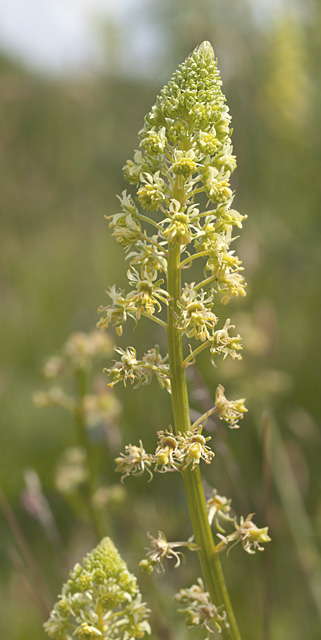
|

|
|
Wild Mignonette Reseda lutea
|
Common Spotted Orchid Dactylorhiza fuchsii
|
There were few butterflies on the wing but we did see some Common Blues and Small Heath Butterflies and one Tortoiseshell. Burnett Moths were the most abundant flying insect we saw; they were widespread throughout the reserve. There were few birds to be seen, apart from Skylark, Meadow Pipit and Gulls, we only saw House Sparrow, Linnet and Greenfinch in this area.
As we got further into the reserve we passed the area of gravel extraction and into the area which had never been worked. The vegetation here is markedly different, with patches of heather and lots of different grasses and flowers including Cinquefoil, Marsh Pennywort, Eyebright, Scabious, Thyme, and Harebell. There were a few fungi on the path sides but our lack of expertise in these only allowed us to identify Puffball (we really must swot up on fungi).
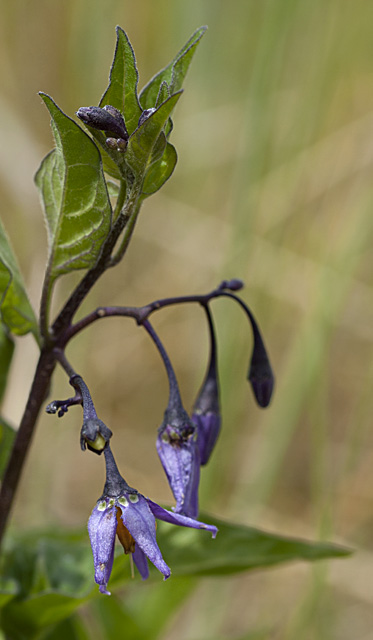
|

|
|
Deadly Nightshade Atropa bella-donna
|
Uh!
|
Rose took us to two small ponds which were created to benefit the Natterjack toads which live among the dunes, and here Chris, who is the warden on the reserve, explained the difficulties they have had in maintaining these ponds. In dry summers they have had to top up the pools with water brought in in bowsers, once by a local farmer who got the water from a local stream (and accidentally introduced Common toads to the pools). The second time, the local Fire Brigade topped-up the pools. Only one of the two pools contains Natterjacks, and this pool had hundreds of tiny tadpoles swimming in the shallows which Chris said were almost certainly Natterjacks but he wouldn't be certain until they could be caught and examined closely. (Natterjack tadpoles have a small white spot under their chins).
We returned to the car park along the top of the beach where we saw Sea Kale, Sea Sandwort, Sea Campion and Rest Harrow (and 3 Ringed Plovers). Up onto the path along the crest of the dunes we found Valerian, Deadly Nightshade, Sand Leek, Sea Holly and Sorrel.
The walk ended after over 2 hours back at the car park where Rose, Chris and Mike were warmly thanked for their efforts.
I had a list of 58 plants and 13 birds at the end of the walk and think that it was a very rewarding outing (and educational for me). A place well worth another visit.
David Thomason 22nd June 2012
High Borrowdale 28th June 2012
Nine members gathered at the Huck's Bridge layby on the A6 to meet our leader for the outing Dr. Jan Darrall of the Friends of the Lake District who manages the Friends' property of High Borrowdale Farm. After an introductory talk about the property by Jan, she led us into the valley which lies between the A6 and the M6. A lovely, remote and mostly unspoiled valley (there are some blocks of conifer on the south side); with the Borrow Beck running through it this eastern Borrowdale is quite different in character to our own Borrowdale. No tourism, car parks or bustle, just peace and quiet.
As we walked in towards High Borrowdale Farm, we stopped at several points while Jan told us about the restoration work the Friends' staff and volunteers with the help of contactors have been doing to put right years of damage and neglect to the walls around the farmstead.
The 4 hectares (ha) of hay meadow which are the major feature of Jan's work in the valley were discussed and it was here that we began to understand the complexities of the task that faced Jan when they first decided that they wanted to restore the pasture to traditional hay meadow. Attempts had been made by organisations to re-establish hay meadows in the Lake District without much success and the thought of trying to do the same in this high rainfall, windy, high level valley was a daunting idea.
Jan had a myriad problems to solve to even get the work started, from working out which methods to use, organising local farmers to cut and harrow the pasture before re-seeding with local hay meadow plants, sourcing the seed, arranging for special machines to harvest the seed and liaising with experts to get all the advice possible to make what was thought a risky experiment possible.
As we stood looking at the results of all Jan's work and the labours of all those involved, it was no wonder that Jan was so full of pride for what they had achieved. The meadow is a sea of Oxeye daisies, Hawkbit, Clovers, Yellow Rattle, Eyebright, Pignut, Geranium, and Buttercups with small pockets of other flowers such as Knapweed, Ragged Robin, Speedwell and Self-heal, a wonderful sight. The management of the hay meadow continues throughout the year with cattle grazing the meadow until 1st April, then the plants are left to grow, flower and seed, before cutting after 15th July (when weather permits). The hay is turned twice after cutting to dry the hay and drop the seed, before being baled and stored for winter feed/bedding. Cattle are then let onto the grass to graze until the following April.
The present 4 ha. area of hay meadow is to be extended into the next field to the east which is at the moment an area of rough pasture but Jan is proposing to use a different method here to convert it to hay meadow. The present hay meadow will be cut as usual but then the hay will be lifted (very carefully, to minimise seed loss) and then spread on the rough pasture area to allow the seed to fall through to the ground and hopefully to germinate there. No machinery exists to do this type of work so Jan hopes to use her volunteers and perhaps the local farmers using an old type manure-spreader to do the work.
At the derelict farmstead of High Borrowdale, Jan showed us the restoration work that has been done on the buildings and we went into the cow-shed (now a tool-store) for our lunch. Jan continued to tell us about the work they were doing and discussion ensued about what we thought of the work. The weather deteriorated and thunder and lightning and torrential rain continued the whole time we were in the store (extremely good timing on Jan's part) and by the time the rain eased and we set of for the two and a half mile walk back to the cars the valley was virtually awash. Borrow Beck was now a raging torrent and water was running ankle deep down the track we were using. Detours onto the hay meadow didn't help as the water was ankle deep here too; water-courses had appeared where water was pouring off the fellsides, flooding the lower lying areas. It was an "interesting" trek back to the cars beside the raging beck but we didn't lose any members.
Everyone thanked Jan for what had been an interesting, very informative and enjoyable outing.
David Thomason.
29th June 2012
|
Latterbarrow 5th July 2012
Six members arrived at the Cumbria Wildlife Trusts' Latterbarrow reserve where we were met by Peter Jones the reserve manager and Rosie, one of his volunteers. After a brief introductory talk Peter led us on to the reserve which was acquired by CWT in 1986 to prevent the site from becoming part of a pig farm which would have devastated this rich mosaic of grassland, scrub and woodland. The limestone grassland is incredibly diverse and contains most of the 200 plant species present on the reserve and these plants provide food for a huge number of insects including rare moths and butterflies. Peter told us that it is only recently that he has seen many butterflies on the wing at the reserve and we managed to see Meadow Brown, Small Tortoiseshell, Red Admiral and Dark Green Fritillary. Lots of bees and other insects were about in the warm, sunny weather and Peter managed to catch a Meadow Grasshopper in a jar which we all examined with interest.
After showing us some Common Spotted Orchids and a small limestone ridge smothered in flowers Peter took us on into the reserve to point out some of the management that CWT have done to improve the site for moths and butterflies. Areas of trees and scrub have been removed to create warm sunny glades to favour the plants that will provide food for the insects and this work is being carried out on several parts of the reserve to provide the patchwork of habitats that is so beneficial. We looked at the canopies of some oak trees from the top of a bank to see if any Purple Hairstreak Butterflies were on the wing but failed to spot any so Peter then took us to see a single Lancashire Whitebeam tree that is present on the reserve (Lancashire Whitebeams are only found in the Morecambe Bay area) and he explained the differences between that and the Common Whitebeam that we get in the rest of Cumbria.
Further on through the 4.4 hectare reserve we were adding plants to our plant list at every step (although bird species were much harder to find). At the end of the 3 hour stroll we had seen 31 plant species such as Hop Trefoil, Greater Stitchwort, Enchanters Nightshade, Rock Rose, Scabious, Columbine and Germander Speedwell and had a bird list that only just got into double figures.
We thanked Peter and Rosie for an interesting and informative walk and then we drove the short distance to Foulshaw Moss where, after a break for lunch we walked through the reserve along the now very dilapidated boardwalk to the elevated viewpoint where we met some members of Grange and District NHS who were watching an Osprey eating a fish. The bird was in a tree about 400 yds away but as they had telescopes set up we all got to see the bird. There are a pair of Ospreys and they have fledged two young ones and it was one of the young ones we could see.
From the viewpoint we could see right across the raised mire that is being managed by CWT in their efforts to retain more moisture within the mire. To this end most of the conifers which had been planted over the Moss have been removed and bunds and lagoons have been created to retain the water in the mire. One Common Lizard was seen (although a man walking in front of us had seen 20) on the boardwalk which winds its way through Bell Heather, Bog Myrtle and small regenerating trees of Birch and Scots Pine with lots of small moths flying about.
Rare White-faced Darter dragonflies have been re-introduced here recently but we only saw a few Four Spot Chasers. We were chased off the reserve when a very heavy rain shower caught most of us unprepared and we had a soggy walk back to the cars.
A most interesting day in what is unfamiliar territory for most of us, we all enjoyed the variety of things we had seen and vowed to return.
David Thomason
7th July 2012
|
Martindale Red Deer Rut
30th Sep 2010
11 members assembled at Dale Head Farm on the morning of 30th September 2010 for the walk up the valley to see and hear the Martindale Herd of Red Deer at their rut. I had moved the date forward to the 30th because last year we went on the usual day around 9th Oct and it all seemed to be over by then.
This time as we started to scan to find deer there were lots about, we counted 106 hinds from where we parked the cars but it was strangely quiet, no activity and no stags visible. Not a good sign.
As we walked up the valley it was cold and wet and it quickly became obvious that although there were a lot of deer about, they weren't doing anything. No rut! It hadn't started yet. My fault, I should have kept to the traditional day in October. I certainly will next year.
We walked on up the valley and continued to see lots of hinds but we only found one lone stag.
It was very cold and wet and although the day looked as if it might eventually get sunny we decided to abandon the outing for this year.
We saw a total of 209 hinds and the one stag (I think he felt outnumbered he wasn't chasing any hinds). The bird list was very low (as is usual in Martindale) at only 11 species.
I think we were all glad to get back to the warmth of the cars.
David Thomason
|
Caerlaverock
11th Nov 2010
Despite forecasts of high winds and squalls, (none of which in fact affected us while there) 11 members and guests assembled to enjoy once again the many delights of the Reserve.
It is always a thrill to be almost within arm's length of truly wild Whooper Swans at feeding time when little more than a pane of glass separates viewer from viewed.
Outside, the air is often filled with the yapping calls of the thousands of Barnacle Geese from Svalbard in the High Arctic as they graze in the fields or fly in smaller groups low overhead.
There are lots of other bird species to see and hear. This time the group total was 44, last time it was 55 so there is always plenty for the visitor to fix eyes and ears on.
Yet, amid all this wealth of wildlife, it was Keswick that provided arguably the the best bird of the day. David T. had thoughtfully brought along a Waxwing, (dead but otherwise in excellent condition) which he presented to the staff who went into raptures over it and said they could use it in their educational work with school parties.
So, if YOU've never sampled this trip, why not join us next time?
Denis White
|
Ken/Dee Marshes RSPB Reserve
5th Feb 2011
On the dull, drizzly morning of Saturday 5th February 4 intrepid members set off for the unusually long (for us) haul to Dumfries and Galloway to the woods and marsh of the Ken/Dee RSPB reserve. We picked another member up at Red Dial on the way so 5 of us arrived at the RSPB car park in improving weather.
We walked down the track towards the first hide with a side trip to scan for the flock of Greenland White-fronted Geese which are a feature of this reserve but they were elsewhere at the time. Walking on to the hide we saw the first Red Kite of the four that we saw that day. At the hide we watched Red Squirrel, Great Spotted Woodpecker, lots of Blue Tits, Great Tits, Coal Tits, Chaffinches, a Nuthatch and two Long-tailed Tits while we had our lunch but of the bird we had hoped to see, Willow Tit, there was no sign. After lunch we walked through the woods round to the far hide but very few birds were seen here so we walked back to the car park passing other birdwatchers and exchanging information with them as to what was about. At the car park Denis spotted two Reed Buntings among a large flock of House Sparrows and Chaffinches and on the way back down to the main road we saw two Red-legged Partridge on the roadside verge. The weather got worse again as we headed home and as usual it was raining hard at Keswick when we arrived.
We had a total of 35 birds for the trip plus Red Squirrel and several Roe Deer, not a huge total but a very happy and entertaining trip. Well we all enjoyed it!
David Thomason
|
Swindale
7th May 2011
The forecast for the day was for a sunny start followed by rain in the afternoon. It was absolutely spot on as we had a lovely morning and were well on our way back to the car when the rain came. The sunny start meant that an extremely pleasant time was spent in Swindale; the walk round the valley was slow with many stops along the way as there were so many birds and flowers to see. Our leader, David Thomason was excellent at identifying the birds by their song before finding the birds themselves. These included Redstart, Pied Flycatcher and Linnet and many other species were seen. The highlight for me was hearing and then seeing a Peregrine Falcon carrying prey.
The wild flowers were a delight and we were able to identify over twenty species such as primrose, bugle, golden saxifrage, and crosswort.
Sadly only two members of KNHS plus David attended this outing which was extremely informative and a delightful walk into a quiet, isolated and beautiful little valley.
Val Nixon
|
Leighton Moss
19th May 2011
Three enthusiastic "birders" had a very successful day at the RSPB reserve on a fine clear day. Sixty different species were seen and/or heard including Water Rail.
A flock of Black-tailed Godwits, nesting Avocets and Marsh Harriers flying over the reedbeds were among the highlights. Also, Shoveler, Shelduck, and Gadwall plus other duck species were on the ponds while Reed Bunting and Warblers were heard singing from the dense reedbeds.
Unfortunately no Bitterns or Bearded Tits were seen, but if one needs an excuse to go back again, looking for these could be it.
Val Nixon
|
Clints Quarry
2nd July 2011
On a brilliantly warm Saturday, 10 members enjoyed an afternoon at Clints Quarry near Egremont amongst an amazing display of native wildflowers. Between us we managed to identify over twenty different plants but it was the total number of blooms that was both impressive and delightful. Unusual ones were the fluffy Hoary Plantain, pretty pink Centaury and elegant yellow Agrimony but the highlights were the orchids.
The ground was so strewn with Twayblades that it was hard not to step on them. There were many varied spotted and purple varieties of orchid and a few Pyramidal orchids but the focus of attention were the four or five Bee orchids that we found. Photos of some of the plants we found will be shown at the Xmas party in December.
Other interesting things we saw included grasshoppers, damselflies, a dragonfly and various butterflies including Large Skipper, Ringlets and a possible Brimstone.
The birdwatchers among us were disappointed with the scarcity of birds here; we only got four species, Wren, Blackbird, Chiffchaff and Blackcap.
Our thanks for a lovely afternoon to our leader, Val Nixon.
Mandy Redburn
|
Caerlaverock
20th Nov 2008
12 members of the Society met at Caerlaverock for the visit to the WWT reserve and all had a most enjoyable day.
There were plenty of ducks at the Whooper Pond where we were in time for the 11.00am feed. There were excellent views of large numbers of colourful widgeon, plenty of tufted ducks and teal, a pair of gadwall and a 1st year male scaup - the latter needing one of the resident experts to identify. Whooper swans were actually quite scarce as the recent wet weather meant that there was still plenty of food left lying in the surrounding fields for them. Moving on to the 'Silver and Gold' hide we added a pintail to our list and our first rarity - a cackling goose, a sub species of the Lesser Canada goose, normally found in North America. It was contentedly feeding in the company of a large number of barnacle geese. Lunch at Saltcot Merse hide was enlivened by the sight of a peregrine and a number of smaller birds including redwing and greenfinch.
The list of observations grew in the early afternoon as goldcrest, long-tailed tit, goldfinch and reed bunting were seen. Finally, a fitting climax was provided at Folly Pond Hide where the second rarity - a green-winged teal was spotted amidst about a hundred ordinary teal. It also had strayed from North America and again we received valuable help in finding it. Despite the name it is a vertical white line down from the 'shoulder' that provides the distinguishing feature. There were good views here of shelduck, oystercatcher, bar tailed godwit and curlew, bringing the total on the trip to 55 species.
Roger Heckingbottom
Campfield Marsh
11th Feb 2009.
Nine members took part in the visit to Campfield Marsh on a bitterly cold day. We met one of the staff, Dave Blackledge, who immediately informed us that we should have come yesterday as he'd had a Sea Eagle on the shore for a short while, a first record of this species for the reserve. To say he was over the moon would be an understatement! Needless to say we never saw the eagle (it had gone over the Solway back into Scotland) but we did see lots of twitchers all trying to find the bird; we even had a visit from a film crew from Border TV. There's never a dull moment on our outings!
Dave explained that because of the hard frosts, all the pools on the reserve were frozen solid so all the birds that should have been there were mostly out on the estuary. He took us round the reserve anyway, but most of the time we were scanning the estuary with telescopes trying to pick out the birds he was identifying for us. We ended with a quite impressive list of species considering the freezing conditions, 43 species in all. We also saw 3 roe deer feeding on the reserve.
David Thomason
Red Hall Farm
20th June 2009
|
| Just 4 members made the trip to Red Hall Farm for the summer visit suggested after our winter visit there 18 months ago. We were met by the farmer, Martin Baird, who immediately showed us an unusual set of antlers from a Roe Deer which had been shot on the farm. The deer had had two sets of antlers one behind the other, it looked very strange. |
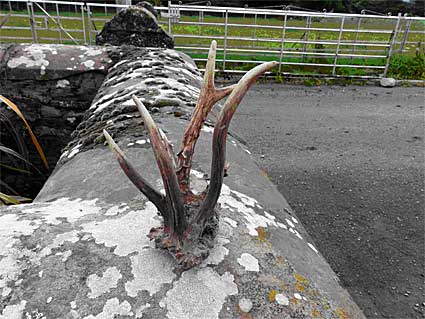 |
David Thomason
Drumburgh Moss
27th June 2009
Morag Angus from Cumbria Wildlife Trust met 7 members of the society and 3 guests at the entrance to Drumburgh Moss reserve. Drumburgh is one of 7 raised bogs on the Solway collectively known as the Solway Mosses. These bogs are of international importance for their plants and animals. She explained about the area of peat bogs or lowland raised mires which make up the bulk of the190 hectare reserve. Raised mires are formed when vegetation grows in a body of standing water over a very long period. As dead matter falls to the bottom, the lake is gradually filled up and, because there is little oxygen, the plant matter does not rot and compresses over the years to form peat. Eventually the surface vegetation rises above the original level of the lake and begins to rely almost exclusively on rainwater which is very low in nutrients.
Over 3 hours, Morag pointed out the flora and fauna and explained the management of the reserve, which included the introduction of Exmoor ponies for grazing. Birds seen and heard included sedge warbler, chiffchaff, lesser whitethroat, willow warbler, reed bunting, great spotted woodpecker, linnet, common buzzard and a cuckoo sitting in a nearby tree. The speciality butterfly for the area, large heath was seen in good numbers plus ringlet, large skipper, painted lady, meadow brown, small white and red admiral. The only positively identified dragonfly was a four-spotted chaser. Plants included sphagnum moss (of which 13 species have been identified), lousewort, bog rosemary, common sundew, oblong leaved sundew, white-beaked sedge, bog asphodel and early purple orchid. As the previous week's Cumberland News had included an article about adders which it said could be spotted at Drumburgh Moss, we were particularly pleased to get a brief view of one as it slithered into the vegetation.
Lionel Bidwell
|
Flower Walk in Borrowdale
11th July 2009 (Leader: Mike Porter)
On a perfect, sunny, July morning 13 members enjoyed a masterclass in plant recognition led by Mike Porter. The group walked through the car park area of Great Wood, down through the woods on to the shores of Derwentwater as far as Broomhill Point and then up on to the lower slopes of Falcon Crag. In just about 3 hours, we were introduced to 80 species of wild flowers, grasses, ferns, sedges and rushes (full list below - Latin scientific names available on request from Editor). The wealth of knowledge imparted to the group was overwhelming. It was the perfect way to learn about the plants of the area and to pick up tips and information on plant recognition. Many common species were encountered, but it was an excellent time to be introduced to several rarities and plants special to this area. The woodland area was an ideal one to distinguish between the male and lady ferns. On the lake shore the two local rarities, the Northern Bedstraw and the Fine leaved Rush were both found. In the lower part of Great Wood, drifts of the yellow Touch-me-not Balsam (the food plant of the Netted Carpet Moth) were just coming into flower. In the final scramble through the deep bracken below Falcon Crag we were led miraculously to the minute Trailing St. John's Wort and Alpine Enchanters Nightshade. An excellent morning was appreciated by all and the leader was thanked for an inspirational excursion.
|
Great Wood (Car Park area)
- Pale Sedge
- Tormentil
- Heather
- Slender St John's Wort
- Compact Rush
- Tufted Hair Grass
- Yorkshire Fog
- Hedge Woundwort
- Bracken
- Enchanters Nightshade
Woodland area below the road
- Scaly Male Fern
- Lady Fern
- Herb Bennet
- Remote Sedge
- Herb Robert
- Soft Rush
- Marsh Bedstraw
- Giant Fescue
- Wood Sedge
- Cocksfoot
- Wood Melick
- Wood Sage
- Common Rye Grass
- Bent Grass
|
On shingle areas of lake shore
- Perforate St John's Wort
- Creepimg Soft Grass
- Burdock
- Birds Eye Speedwell
- Water Forget-me-not
- Red Campion
- Broad-leaved Dock
- Harebells
- Knapweed
- Birds Foot Trefoil
- Viola
- Self Heal
- Marsh Ragwort
- Marsh Woundwort
- Silver Weed
- Meadow Sweet
- Valerian
- Goose Grass
- Purple Loosestrife
- Hemlock Water Dropwort
- Nipplewort
- Rose Bay Willowherb
- Great Burnett
- Smooth Lady's Mantle
- Ribwort Plantain
- Smith's Pepperwort
- Burnet Saxifrage
- Lady's Bedstraw
- Betany
- Lesser Stichwort
- Eye Bright
- Sneezewort
- Northern Bedstraw
- Fine Leaved Rush
- Juncus tenuis
- Angelica
- Yarrow
- Broom
- Red Leg
|
Slopes below Falcon Crag
- Trailing St John's Wort
- Alpine Enchanters Nightshade
- Wood False Brome
- Mouseear Hawkweed
- Catsear
- Wild Thyme
- Heath Speedwell
- Sweet Vernal Grass
- Wood Dock
- Wood Fescue
South End of Great Wood
below the road
- Touch-me-not Balsam
- Stinging nettles
- Common Polypody
- Figwort
- Hairy Brome
- Wall Lettuce
- Viviparious Sheep's Fescue
|
Alan Smith
|
|

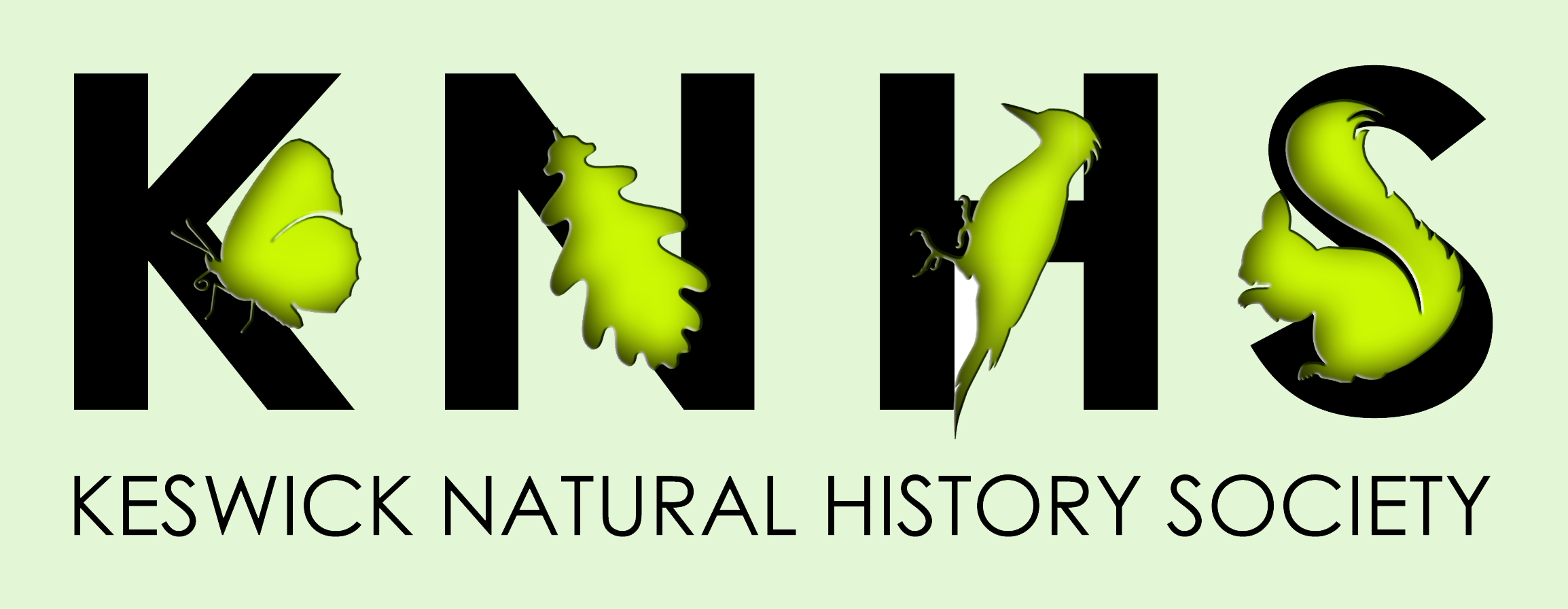
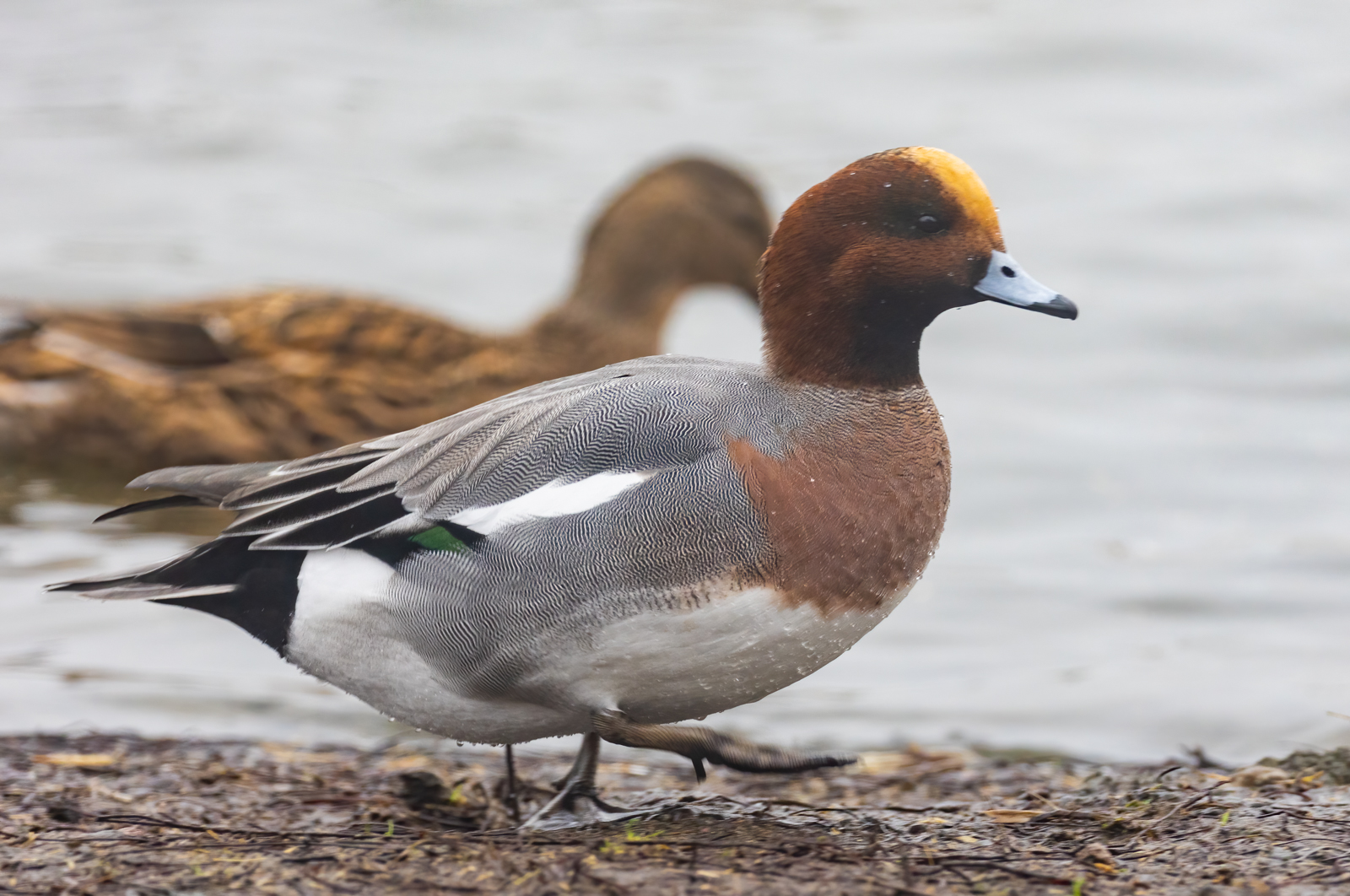

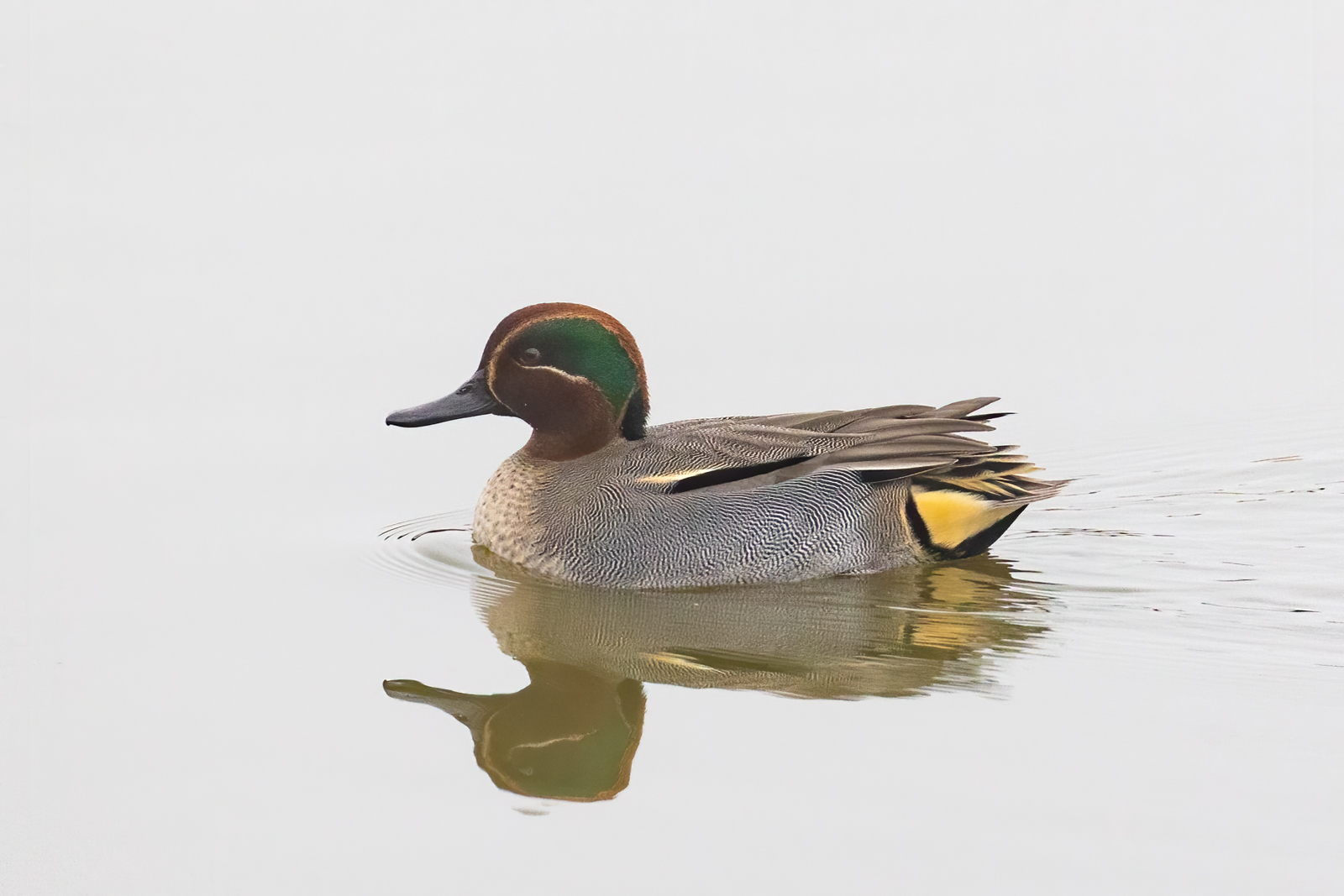
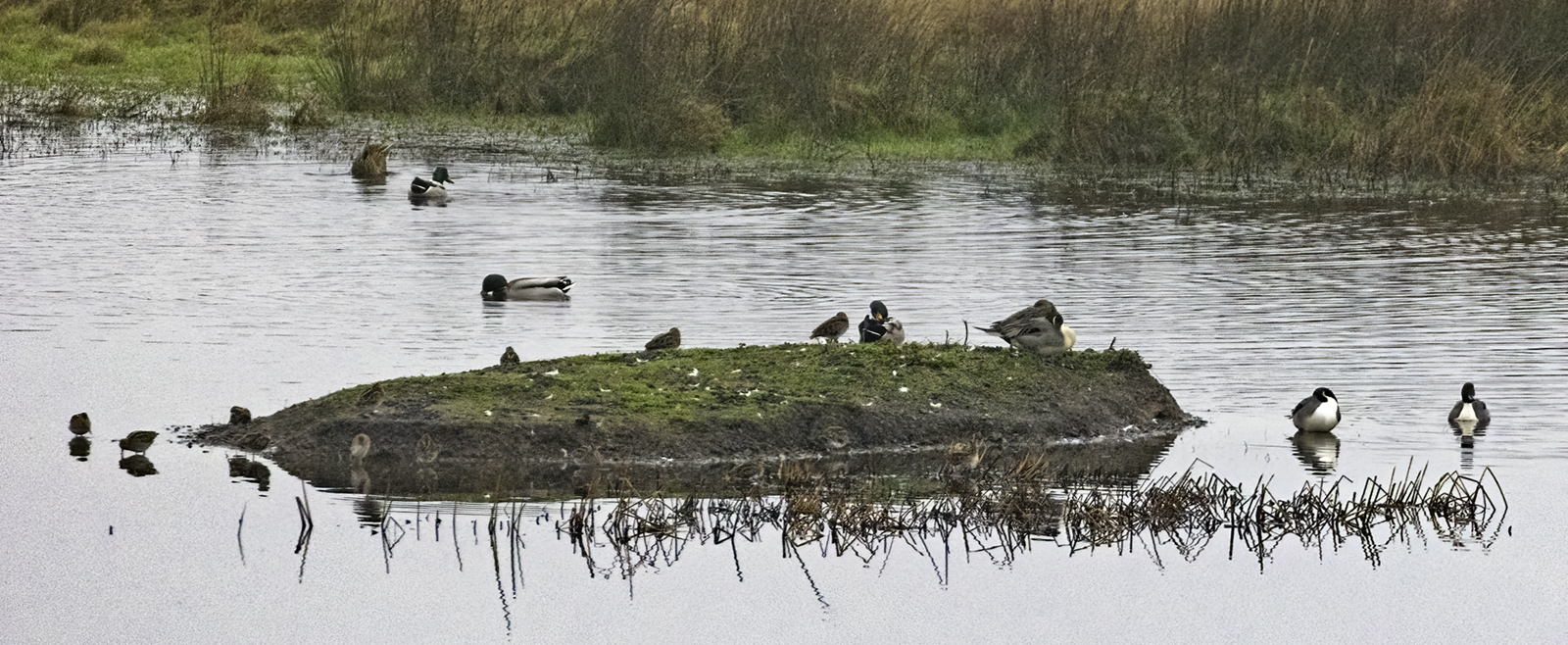
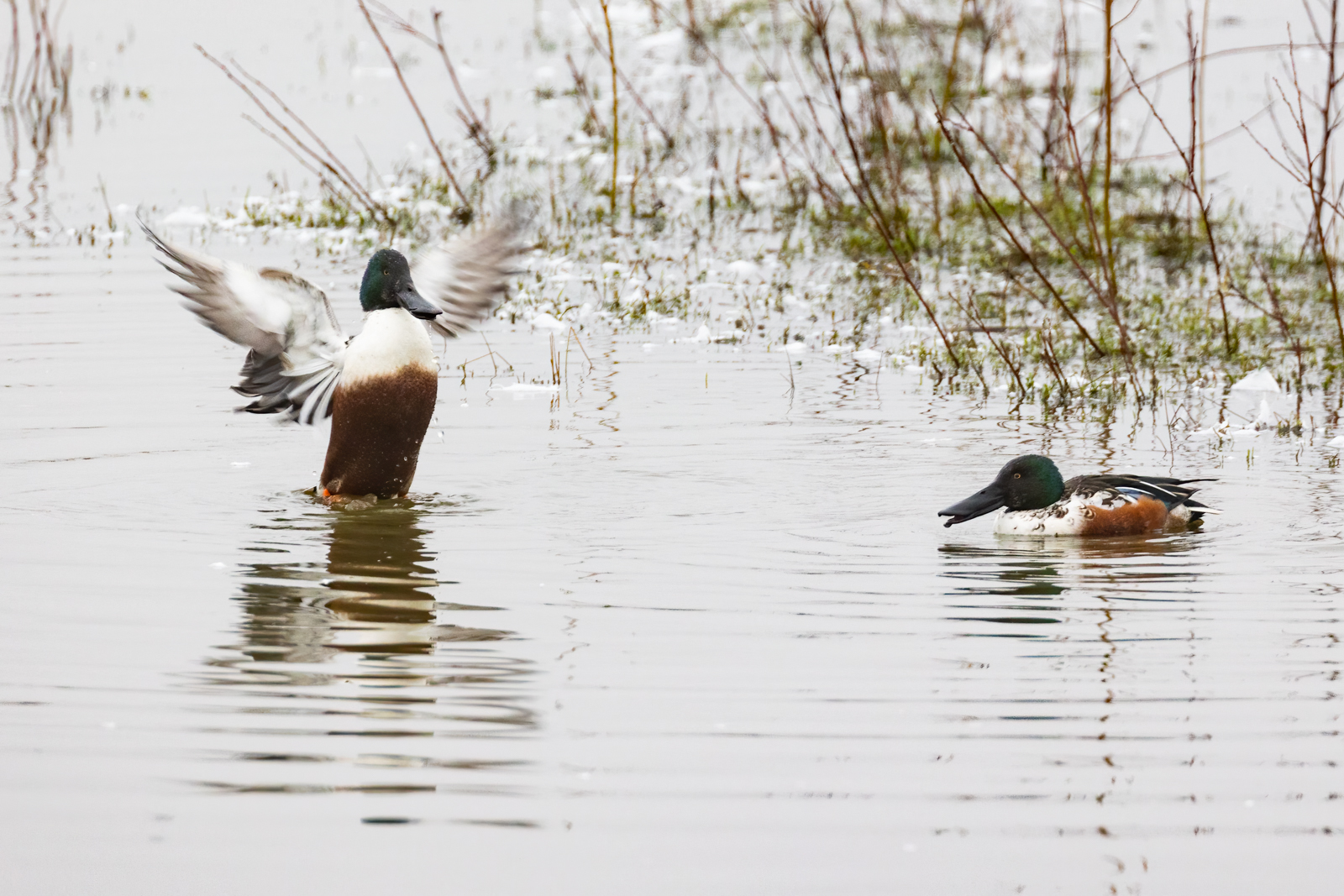

.jpg)
